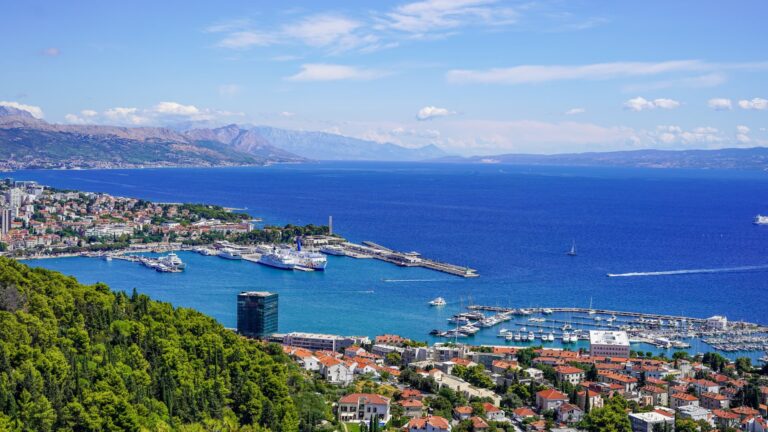Best Croatian Food: 124 Traditional Dishes (Complete List)
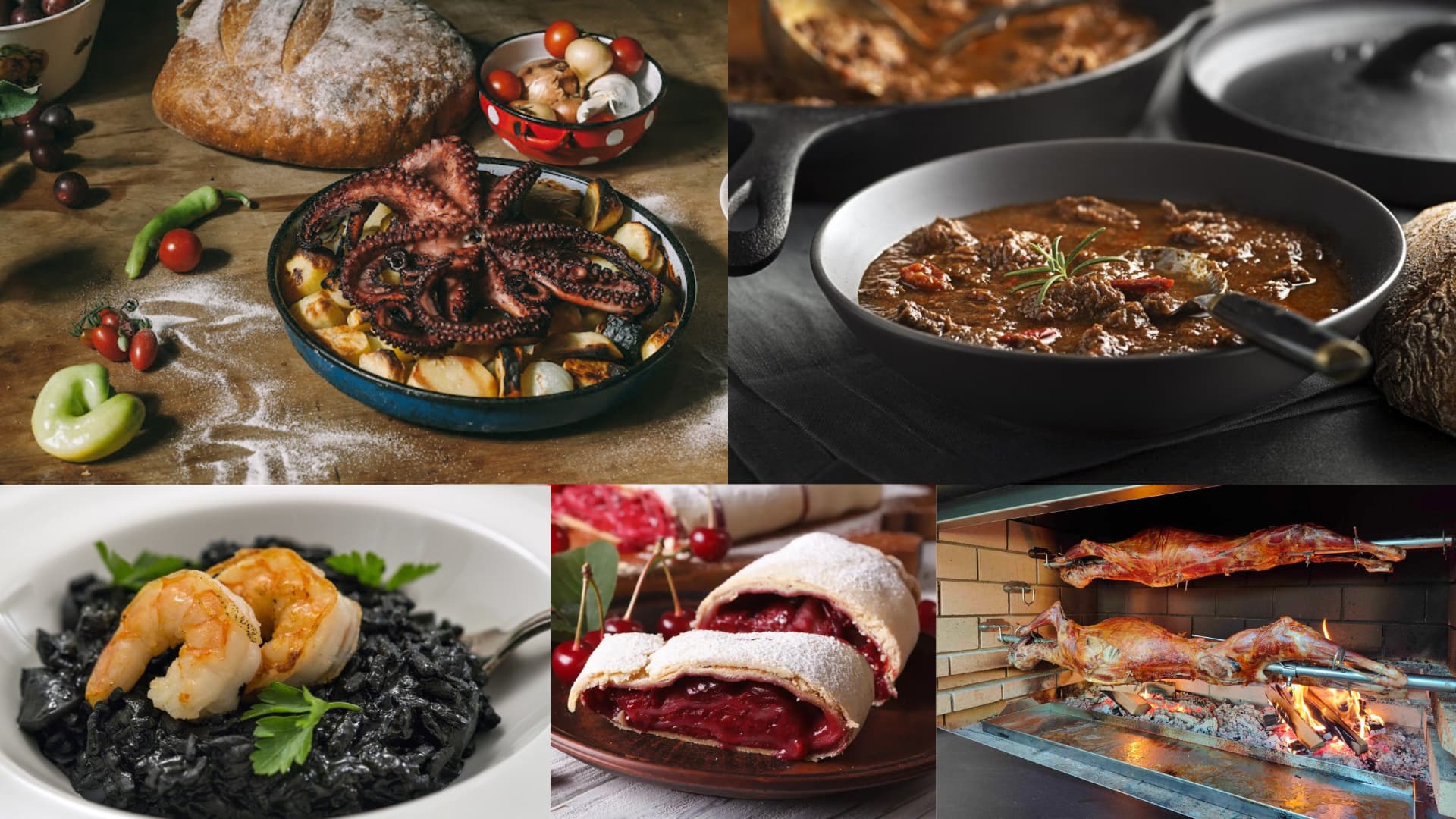
In this article, I will introduce you to a delightful culinary journey through Croatia’s best Croatian food, featuring a comprehensive list of 124 traditional Croatian dishes.
I’m a passionate food lover who has extensively explored Croatia, and in this article, I’m excited to bring you the very best of Croatian cuisine, all in one place.
Are you ready to dive into the world of Croatian cuisine?
Keep reading.
Table of Contents
Peka (veil, octopus, lamb)

When you’re in Croatia, don’t miss out on trying the peka – it’s a real treat!
Imagine tender meat (like veal, octopus, or lamb) slow-cooked to perfection, along with fresh veggies like potatoes, carrots, onions, and bell peppers.
All of this goodness is cooked under a bell-shaped lid over an open fire, infusing everything with smoky, herby flavors.
There are variations too; by the coast, you’ll find seafood versions, while inland regions have meat-based renditions.
Peka lets you savor a slice of Croatian culture and history.
It’s worth noting that Peka requires a bit of planning; many places, like “Didov San” in Zagreb or “Konoba Pelegrini” in Šibenik, might need a reservation a few hours or even a day in advance because of their special way of preparation.
Trust us, your taste buds will thank you for this unforgettable culinary adventure!
Ćevapi (or ćevapčići)

Get ready to treat your taste buds to a Croatian culinary sensation with ćevapčići!
These small grilled minced meat sausages are bursting with flavor, thanks to a seasoning of garlic, salt, and pepper.
Made from a mix of beef and pork, they’re juicy and delicious.
Enjoy them with fresh flatbread called lepinja, alongside ajvar (a tasty pepper sauce), onions, and creamy kajmak.
You can find variations all over Croatia, making it an exciting culinary journey.
When you savor čevapčići, you’re not just eating; you’re immersing yourself in the heart of Croatian cuisine.
Don’t miss this chance to enjoy a mouthwatering adventure!
Your taste buds will thank you later.
Crni rižot (black risotto)
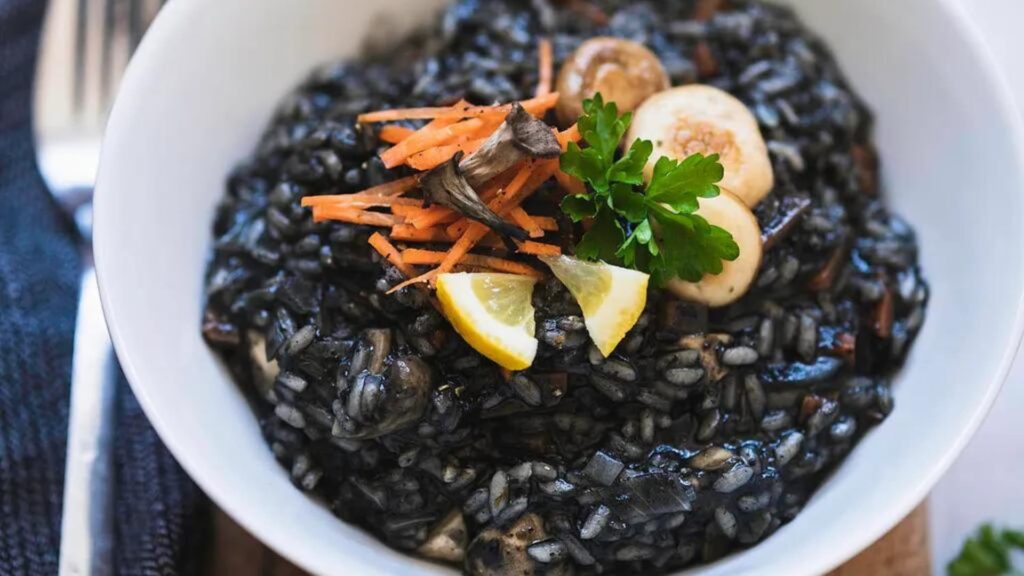
Crni rižot, known as black risotto, is a captivating Croatian dish originating from the sun-soaked coastal regions, such as Dalmatia and Istria.
Its striking jet-black appearance, achieved through the use of squid ink, is just the beginning of its enchantment.
This dish features creamy rice infused with the essence of the sea, often complemented by delectable seafood like mussels, shrimp, or cuttlefish.
The flavors here are a delightful symphony, with a rich and briny undertone paired harmoniously with earthy notes.
To complete this culinary journey, locals recommend savoring it alongside a glass of refreshing local white wine and a crisp side salad.
For those eager to explore the culinary traditions of the Adriatic, crni rižot is a true masterpiece that promises to leave you yearning for more after every delicious bite.
Pašticada s njokima (pasticada with gnocchi)
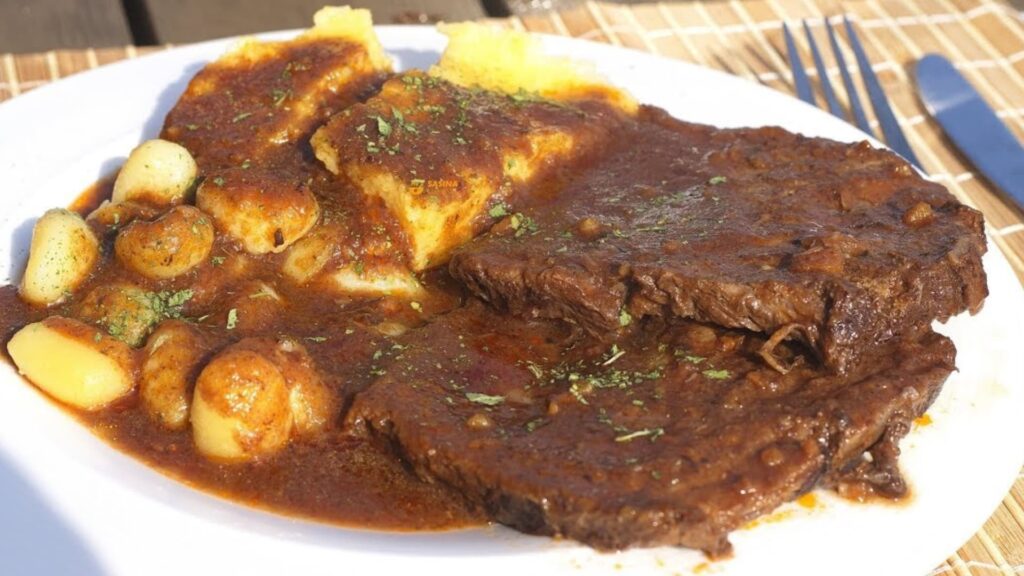
Pasticada with gnocchi, a culinary masterpiece from Croatia’s Dalmatian coast, is a must-try dish that will transport your taste buds to a world of savory delight.
Slow-cooked beef marinated in red wine, vinegar, and aromatic spices, then infused with sweet prunes and dried figs, creates a tantalizing harmony of flavors.
Served alongside pillowy homemade gnocchi and sautéed blitva, this dish is a culinary symphony of tender meat, rich sauce, and perfect balance.
As you savor each bite, you’ll not only enjoy an exceptional meal but also experience the heart and soul of Dalmatian cuisine.
Don’t miss the chance to taste this delicious piece of Croatia’s culinary heritage when visiting the Dalmatian coast – it’s a journey for your taste buds that you’ll crave again and again.
Zagorski štrukli
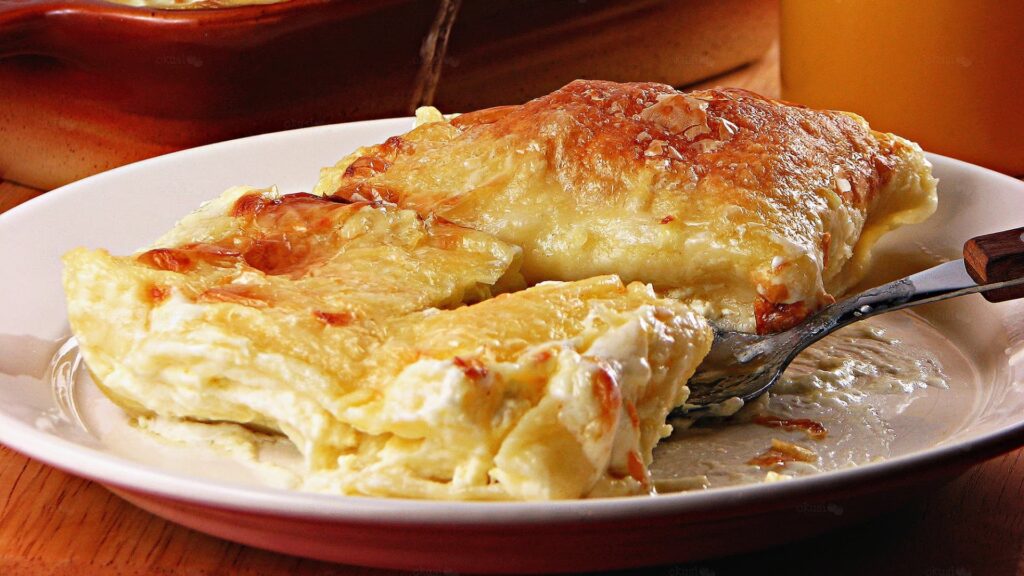
Discover the mouthwatering delight of zagorski štrukli, a cherished Croatian pastry from the enchanting Hrvatsko Zagorje region.
This dish comes in two tantalizing variations: the savory, creamy blend of fresh cottage cheese and sour cream tucked inside delicate dough, or the sweet version infused with sugar, cinnamon, and sometimes raisins.
Its history dates back centuries, steeped in rural tradition, making it a truly authentic experience.
Enjoy it with a dollop of sour cream and a glass of local white wine for a taste of Croatia’s warm hospitality.
Be aware, though—it’s incredibly filling, but each bite is an invitation to savor Croatia’s culinary heritage.
Don’t miss this unique and delightful dish!
Janjetina s ražnja (spit-roasted lamb)
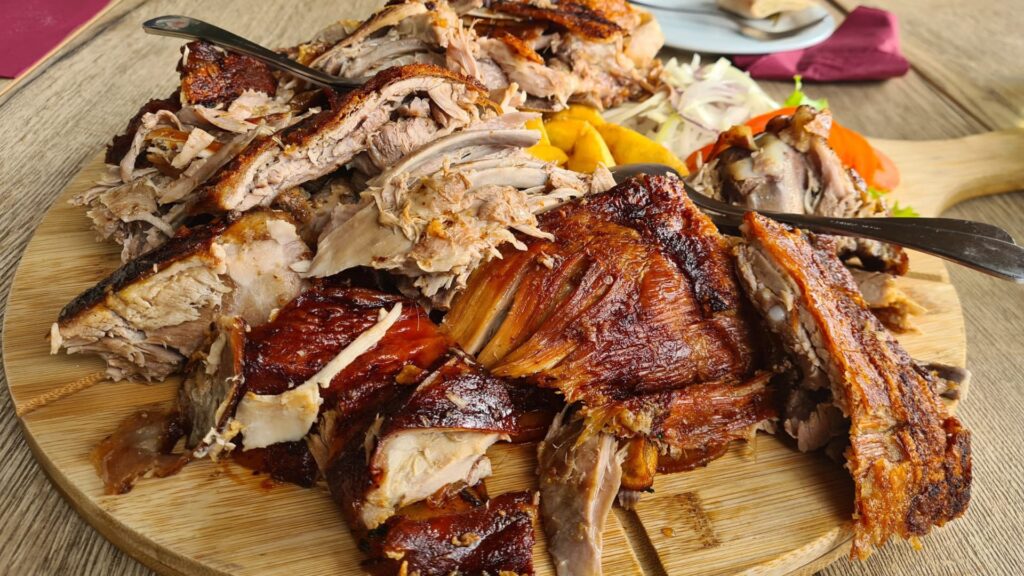
Prepare for an exceptional culinary journey through Croatia’s rich heritage with spit-roasted lamb, a dish that beckons all food enthusiasts.
This delectable delight showcases the country’s diverse culinary influences, with coastal regions favoring Mediterranean herbs, inland areas opting for heartier spices, and the best roasted lamb treasures awaiting discovery in the Lika region, on picturesque islands like Pag, and also in the heart of Slavonia.
Imagine succulent lamb, skillfully marinated with a blend of garlic, rosemary, thyme, and olive oil, then slow-roasted to juicy perfection, its exterior crisped to a golden finish.
Rooted in history, this dish traces back to ancient festivities and cherished traditional cooking methods.
To elevate your experience, pair it with Swiss chard, grilled potatoes, crusty bread, and the delightful zest of spring onions.
This promises not just a taste but a deep dive into Croatia’s cultural and gastronomic tapestry.
Plan ahead, as the slow-roasting process requires time, and explore local taverns to savor this gem authentically.
Brudet
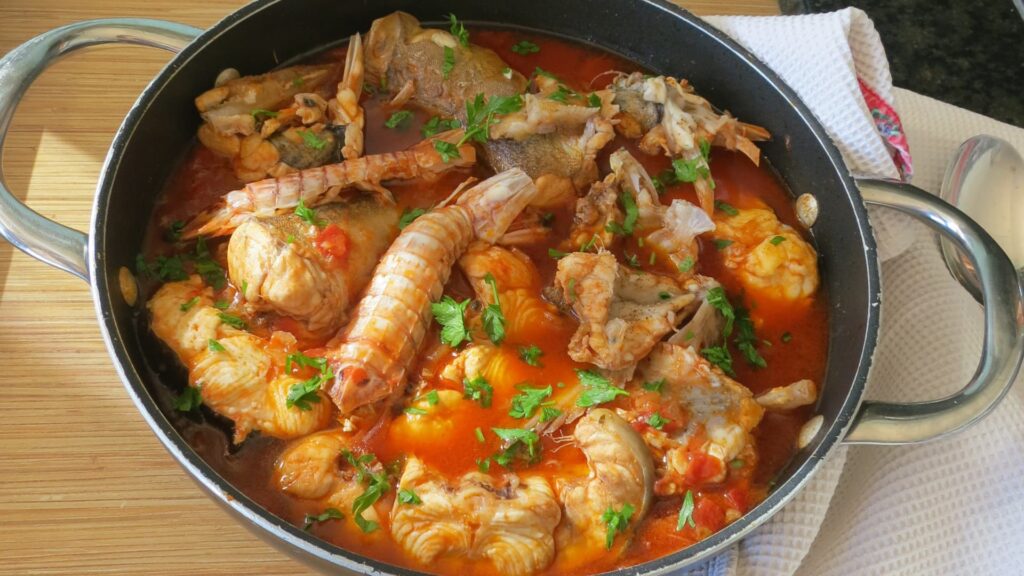
When you visit Croatia’s coastal regions, don’t miss the opportunity to savor brudet, a hearty fish stew that embodies the essence of the Adriatic Sea.
This traditional dish, popular in Dalmatia and Istria, features a tomato-based broth infused with the flavors of various fish and seafood, along with onions, garlic, and a touch of red wine or vinegar.
Variations abound, reflecting local catch and preferences, while its history traces back to humble origins as a fisherman’s pot.
Served with creamy polenta, brudet offers a burst of Mediterranean flavors, a delicious link to Croatian coastal heritage, and a unique gastronomic journey you won’t soon forget.
Just watch out for small bones while you relish this culinary masterpiece.
Škampi na buzaru (shrimps in buzara sauce)
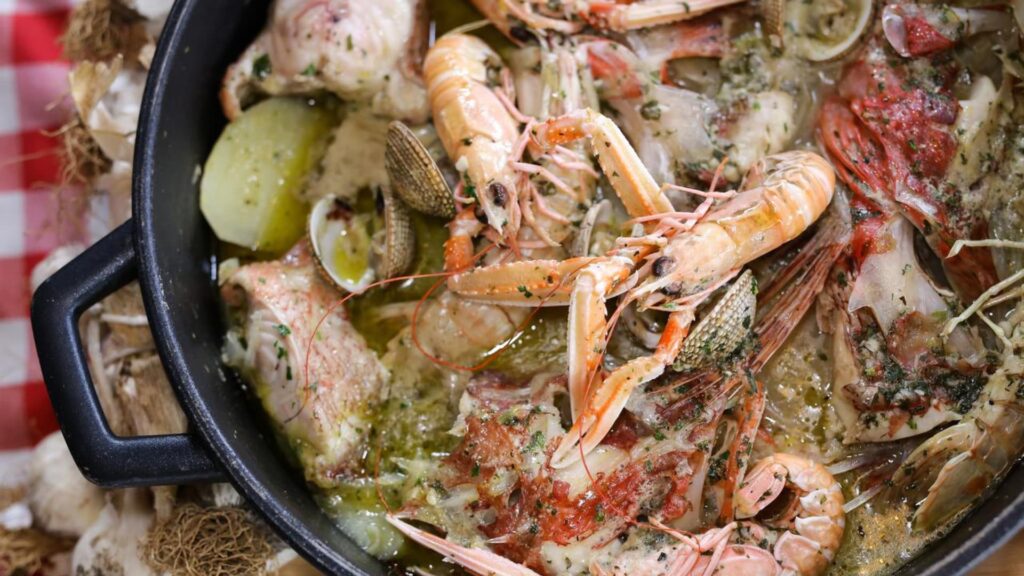
Shrimps in buzara sauce is a main course seafood dish that perfectly captures the flavors of Croatia’s Adriatic coast.
This exquisite creation consists of fresh Adriatic shrimps cooked in a savory sauce made with garlic, olive oil, white wine, tomato sauce, and aromatic herbs.
Originally a humble fishermen’s meal, it has evolved into a culinary treasure that offers a glimpse into Croatia’s rich maritime heritage.
When you order it, keep in mind that the prawns are served with their shells intact, so get ready for a slightly messy, but delicious, experience.
To complete the meal, pair it with crusty bread and a glass of local white wine, and you’ll be immersed in the delightful world of traditional Croatian cuisine.
This dish is a must-try, especially when visiting Istria and Dalmatia along the beautiful Croatian coastline.
Octopus salad
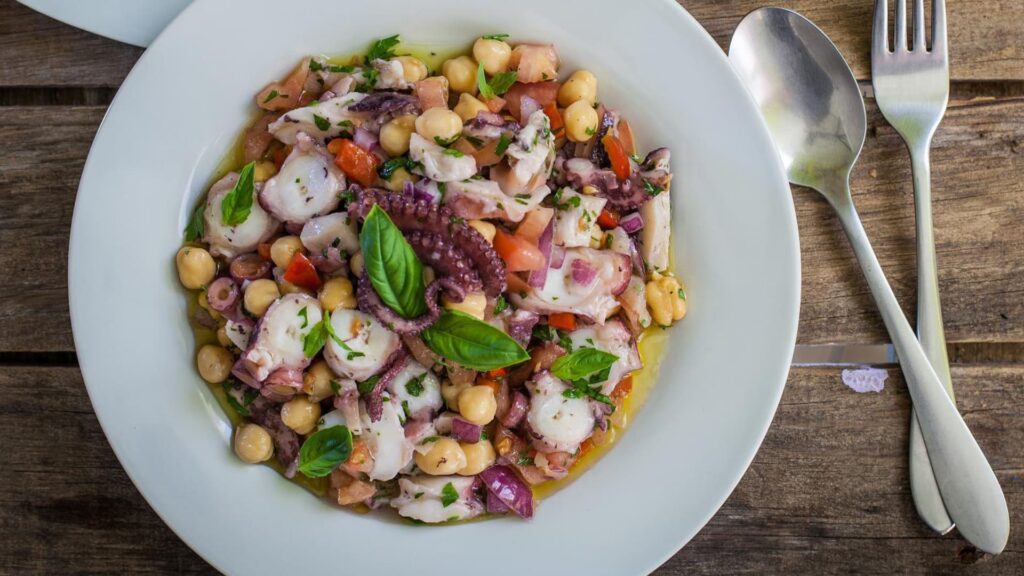
Octopus Salad, known as “salata od hobotnice” in Croatia, is a refreshing appetizer that offers a delectable introduction to the country’s coastal cuisine.
This cold dish consists of tender octopus pieces, boiled potatoes, finely chopped onions, and fresh parsley, all delicately dressed in top-quality olive oil and vinegar.
Originating from the Mediterranean culinary tradition, it reflects Croatia’s historical connection to its seaside communities.
You can savor it as a starter or alongside other seafood dishes, ideally accompanied by local wines or beers.
When exploring coastal towns like Split, Dubrovnik, or Rovinj, be sure to indulge in this authentic Adriatic delight to experience the true essence of Croatian coastal flavors.
Gulaš (venison stew)
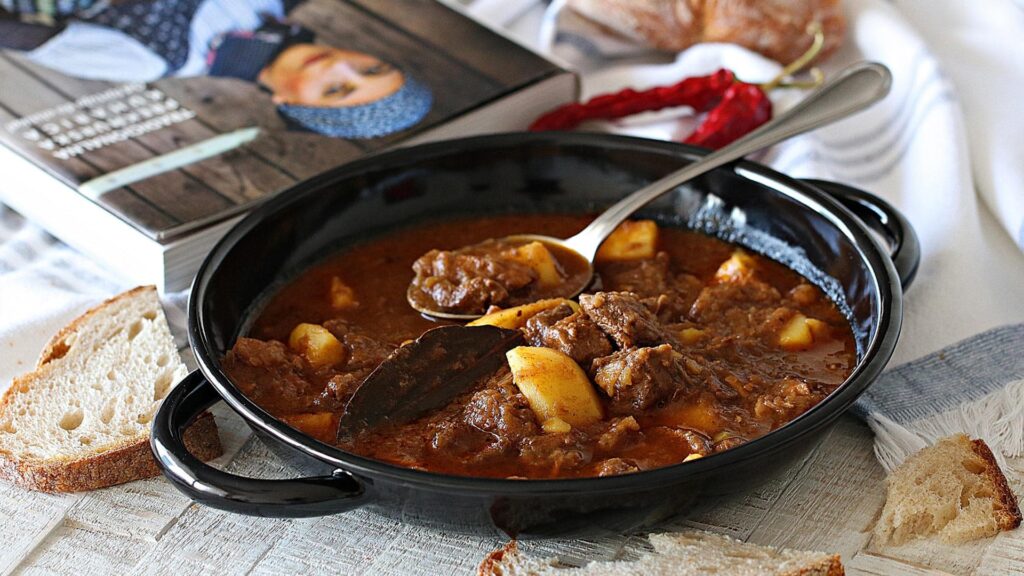
Venison stew, known as “Gulaš,” is a hearty Croatian main dish that offers a taste of the country’s rich hunting heritage.
This savory delight features tender pieces of venison slow-cooked in a flavorful gravy infused with paprika, garlic, and aromatic herbs.
The dish varies across regions, with some using wild boar or seafood for unique twists. Its earthy, slightly gamey taste is a nod to Croatia’s abundant wildlife.
Typically served with bread or dumplings and accompanied by salads or pickled vegetables, venison stew is a must-try for its rare game meat experience and a glimpse into Croatia’s culinary history, especially in continental regions like Slavonia and Zagorje.
Enjoy it during the winter months for the ultimate comfort food experience, and don’t forget to pair it with local red wine or rakija for an authentic Croatian culinary adventure.
Grilled calamari

Grilled calamari, a main dish from Croatia’s coastal regions, is a delightful seafood creation that embodies the flavors of the Adriatic Sea.
To make this dish, fresh calamari is first marinated in olive oil, garlic, and Mediterranean herbs, then expertly grilled until it reaches a tender, smoky perfection with a subtle sweetness.
The iconic diamond-scored pattern enhances its visual appeal. When enjoying grilled calamari, don’t forget to elevate its flavors by squeezing a zesty wedge of lemon over it.
You can pair this culinary treasure with fresh salads, potatoes, or local white wine, all of which beautifully complement its taste.
Occasionally, you might encounter the use of squid ink, which adds a unique flavor and visual element.
This dish carries the rich tradition of coastal cuisine in Croatia and is a must-try, particularly along the Dalmatian coast, for an authentic taste of the region’s seafood heritage.
Sarma (with mashed potatos)

Sarma, a cherished Croatian culinary gem, is a hearty main dish that embodies tradition and togetherness.
This flavorful delicacy features minced pork and beef, blended with rice and spices, lovingly rolled into tender cabbage leaves, and simmered in a tomato-based sauce.
What makes sarma truly special is its role in Croatian celebrations, from holidays like Christmas and Easter to weddings and family gatherings.
It’s a dish that signifies unity and the joy of sharing, allowing you to savor not just the flavors of Croatia but also its rich cultural heritage.
Pair it with a side of creamy mashed potatoes for the ultimate Croatian culinary experience, and immerse yourself in the warmth of Croatian hospitality through its cuisine.
Čvarci (pork greaves)
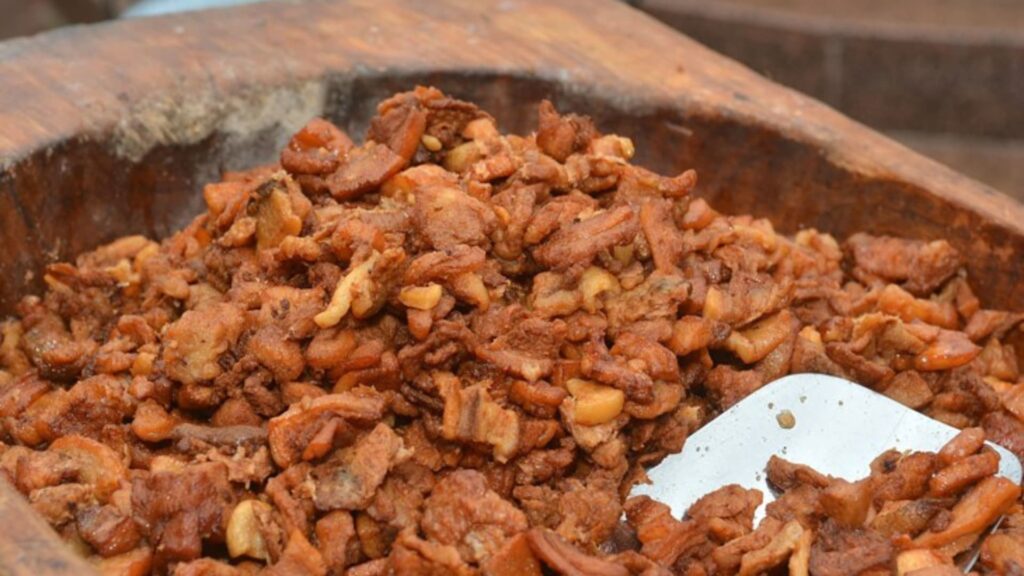
Let’s introduce you to čvarci, a cherished Croatian snack steeped in tradition and history.
These bite-sized nuggets of pork fat are expertly fried to achieve a satisfyingly crispy texture, delivering an explosion of savory flavors.
Although čvarci aren’t a main dish, they are an essential experience when delving into Croatia’s culinary world, particularly in regions like Slavonia and Zagorje.
Enjoy them alongside freshly baked bread, pickles, and a glass of local wine or rakija.
Keep in mind their indulgent richness, and relish this delightful, crunchy treat as a gateway to Croatia’s time-honored flavors and culinary heritage—a genuine taste of the country’s past in every bite.
Rožata
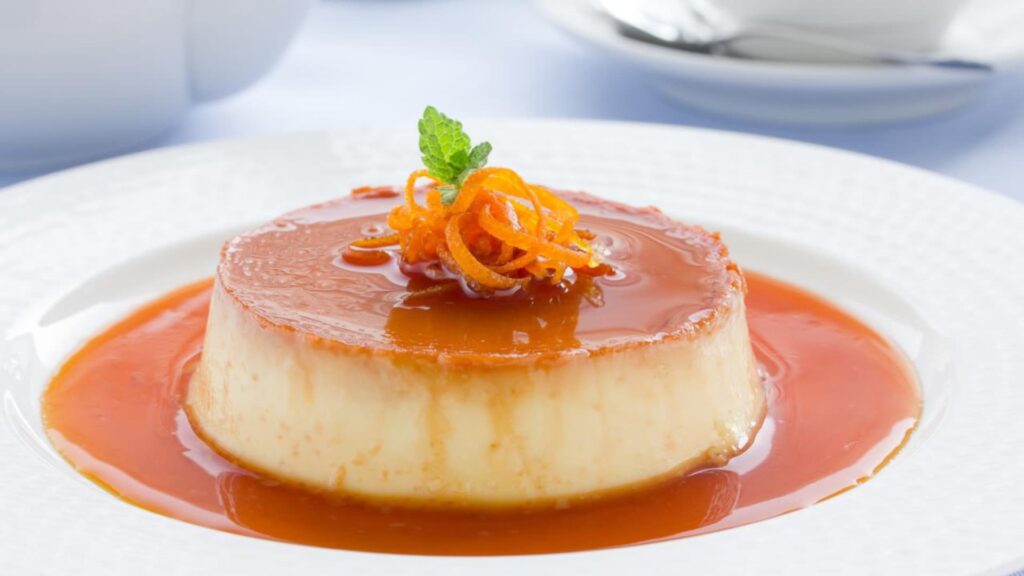
Rožata is a delightful Croatian dessert with origins in the Dalmatian region.
It’s akin to flan and is typically served as a sweet conclusion to your Croatian meal.
This creamy dessert has a distinct flavor profile with hints of vanilla and caramel, thanks to the use of rose water and a caramelized sugar glaze on top.
Its name, “Rožata,” reflects its fragrant nature.
While you may encounter regional variations, its history is tied to the Venetian influence in the region, creating a unique blend of Croatian and Italian culinary traditions.
When in Croatia, make sure to try rožata, especially in Dubrovnik and along the Dalmatian coast. It’s a delicious taste of history and culture, best enjoyed with a cup of Croatian coffee for an authentic experience.
Kotlovina
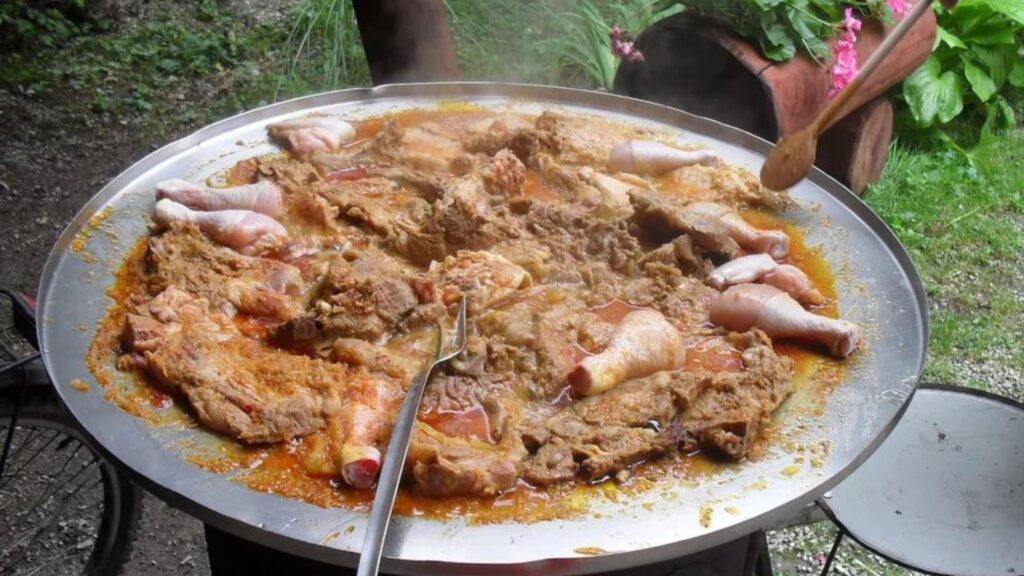
Kotlovina is a traditional Croatian dish meant for sharing outdoors, like a big picnic meal.
It’s usually the main course and is all about cooking meat (like pork and sausages) and veggies slowly over a fire or hot coals.
What’s interesting is that different places in Croatia have their own special versions of kotlovina, like in Istria or Dalmatia, which give it unique flavors with special spices.
Long ago, people made Kotlovina when they got together for celebrations.
It’s best enjoyed with fresh bread, local beer, or wine, and it’s a great way to experience Croatian culture.
Just be ready for a lot of food and friendly Croatian hospitality when you try it at gatherings across the country!
Dagnje na bijelo (mussels in white wine)
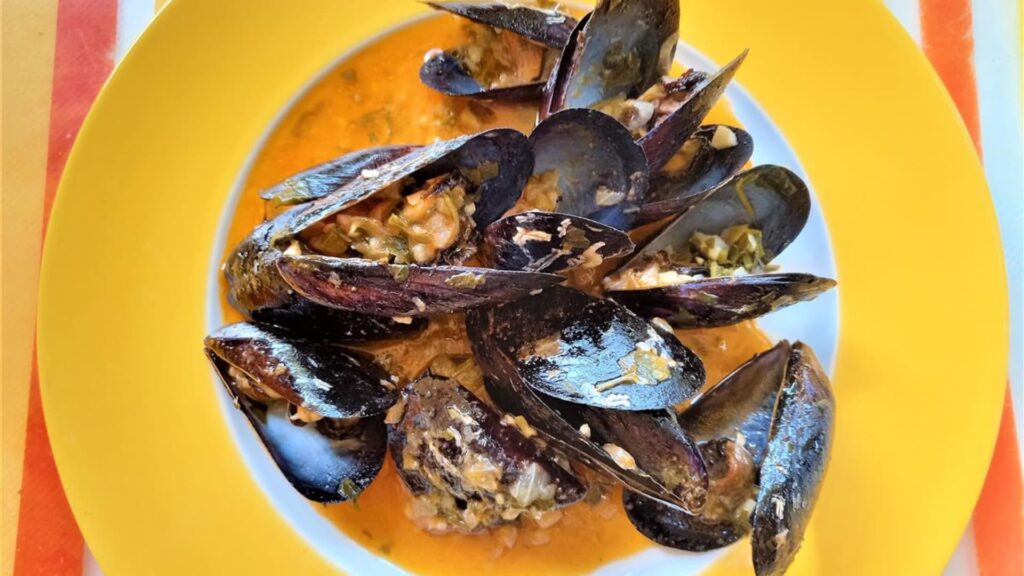
Mussels in White Wine, also known as “Dagnje na bijelo” or “Dagnje na buzaru” in Croatian, is a delicious dish you’ll find in Croatia.
It’s made by cooking plump mussels in a flavorful sauce crafted from white wine, garlic, and parsley.
People often enjoy it with bread to soak up all the tasty sauce.
Now, here’s something to keep in mind: handling mussel shells can be a bit tricky.
These mussels are usually freshly picked from the clear Adriatic sea during boat tours, giving you not only freshness but also a breathtaking view as you dine.
So, whether you try this dish during your seaside explorations or at a coastal restaurant, make it a point to taste different versions along the Croatian coast.
It’s a delightful way to relish the sea’s flavors and add a special touch to your trip.
Fiš paprikaš (fish stew)

Fiš paprikaš is a traditional Croatian main dish that hails from the Baranja region in northeastern Croatia.
This hearty fish stew is known for its rich reddish-brown color, achieved by using generous amounts of paprika.
The dish features freshwater fish such as carp or catfish, which are simmered in a tomato-based broth enriched with garlic and onions.
Considered a quintessential Slavonian comfort food, it pairs wonderfully with crusty bread or homemade noodles.
Fiš paprikaš offers a delectable taste of Slavonian traditions, showcasing the region’s historical connection to its rivers and lakes.
It’s an absolute must-try for food enthusiasts looking to explore Croatia’s diverse culinary heritage.
Kulen (and kulenova seka)

Kulen, often known as “kulenova seka,” is a renowned Croatian sausage celebrated for its bold, spicy flavor.
While both kulen and kulenova seka share similarities, they do have distinctive differences.
Originating from regions like Slavonia and Baranja, kulen is crafted from high-quality pork, paprika, garlic, and a blend of spices, then carefully fermented and air-dried for weeks, resulting in its smoky taste.
The term “seka” in Croatian means “sister” and is used to distinguish between different kulen varieties.
Kulenova seka tends to be milder in spiciness and may incorporate various ingredients or seasonings.
Both are delightful to try during your Croatian adventure and can be easily found at local green markets.
Consider them as great souvenirs to bring home, allowing you to savor the diversity of Croatian cuisine and share it with friends and family.
Bakalar na bijelo
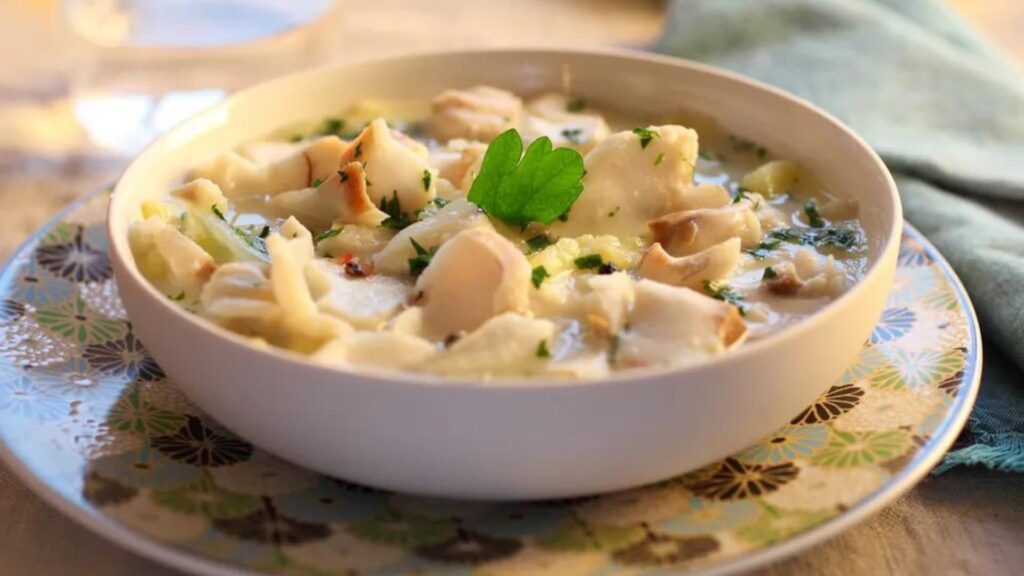
Bakalar na bijelo is a cherished main course in Croatia, primarily along its beautiful coastline.
This dish stars salted codfish, which is carefully rehydrated and then cooked to tenderness with ingredients like potatoes, garlic, olive oil, and parsley.
The result is a delightful blend of salty sea flavors and Mediterranean herbs, a true reflection of Croatia’s maritime heritage.
Variations can be found in different regions, some featuring a creamy garlic sauce, and it’s typically enjoyed with a glass of local white wine.
When you savor this dish, you’re not just tasting its rich flavors; you’re also experiencing a centuries-old tradition that helped Croatian fishermen preserve fish during the winter.
Don’t miss the chance to try it; it’s a culinary journey into the heart of Croatia’s coastal culture.
Knedle sa šljivama (plum dumplings)

Plum dumplings, known as plum dumplings, are a cherished Croatian dessert embodying the essence of traditional home-cooked dishes.
These delightful dumplings are made by wrapping pitted plums in a tender potato dough, resulting in a delightful blend of sweet and tart flavors.
Typically, they are boiled and can be served either rolled in breadcrumbs and sugar or with powdered sugar and a dollop of sour cream.
With roots dating back to the 18th century when potatoes were introduced to Croatian cuisine, this dessert is especially popular during the late summer plum harvest season.
Found throughout Croatia, knedle sa šljivama offer a sweet taste of tradition and are a must-try addition to your culinary exploration of this Mediterranean country.
Maneštra (Istrian soup)
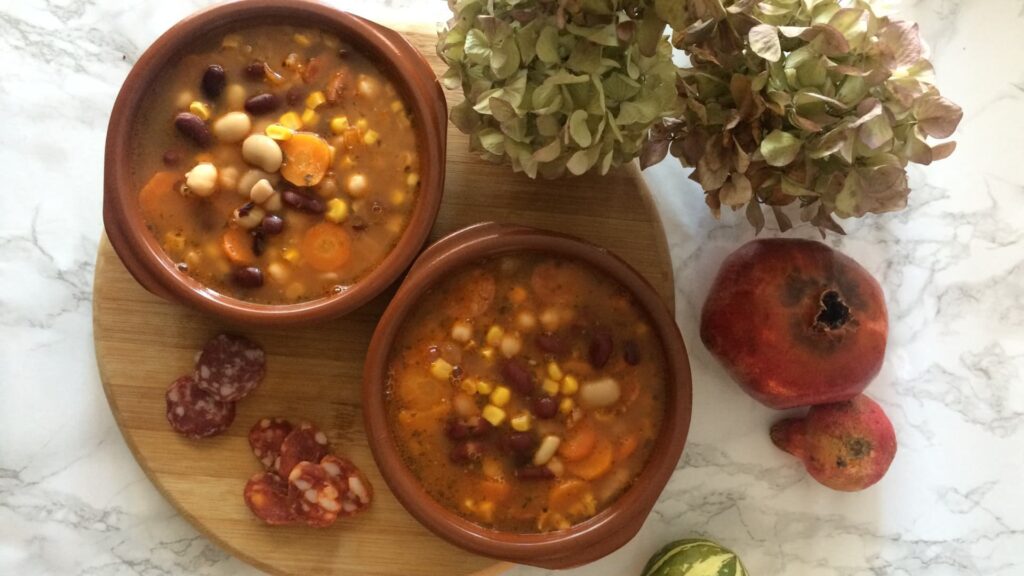
Maneštra is a comforting and wholesome Istrian soup, a must-try main dish steeped in tradition on the Istrian peninsula in Croatia.
This rustic delicacy comes in various regional variations like maneštra od bobića (corn-based), maneštra od graha (green pea-based), and maneštra od krumpira (potato-based), each boasting a unique blend of fresh vegetables, legumes, Mediterranean herbs, and olive oil.
This soup reflects Istria’s rich agricultural heritage, dating back to humble peasant cuisine.
When in Istria, savoring a bowl of maneštra with crusty bread, a glass of local Istrian wine, or a side salad is a delightful way to immerse yourself in the region’s culture and the farm-to-table philosophy.
For an authentic experience, consider visiting the Days of Maneštra festival, where you can taste various renditions of this iconic dish and delve deeper into Istria’s culinary traditions.
Pršut (prosciutto)
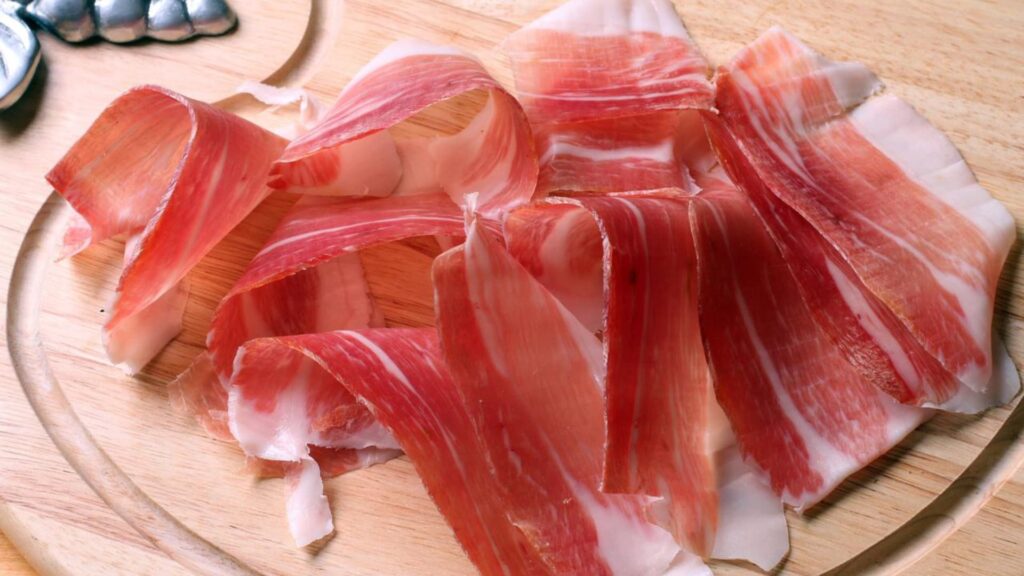
Pršut, akin to Italian prosciutto, is a must-try appetizer that showcases a distinctive blend of saltiness and subtle nutty flavors.
It’s prepared through meticulous months-long air-drying and aging, with regional variations like Istrian and Dalmatian pršut offering unique taste profiles.
With roots tracing back to Roman influence, pršut is a glimpse into Croatia’s culinary history.
Enjoy it on a charcuterie platter with local cheese, olives, and crusty bread, perfectly paired with Croatian wine or rakija.
When trying pršut, be mindful of its saltiness, and opt for reputable sources for an authentic taste.
Although produced throughout Croatia, its finest versions are found in Istria and Dalmatia, where distinct microclimates enhance its flavor.
More than just a dish, pršut embodies Croatian culture and hospitality, inviting you to savor a piece of heritage on your Croatian adventure.
Purica s mlincima (turkey with mlinci)
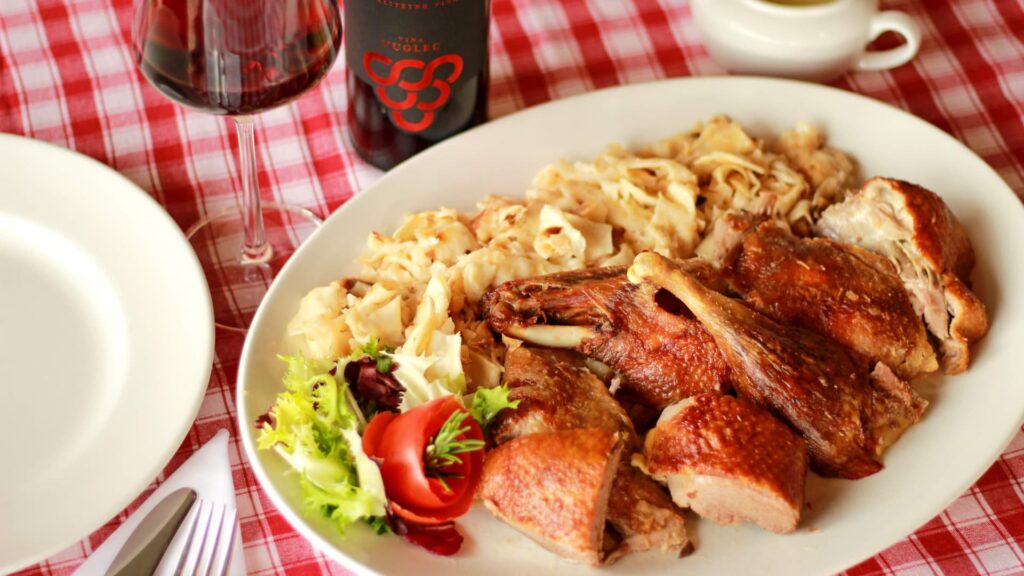
Turkey with mlinci, an iconic Croatian main dish, invites you to explore the heart of the country’s culinary heritage.
This flavorful meal combines succulent roasted turkey, infused with savory herbs and spices, with mlinci – thin sheets of dried flatbread that are rehydrated and crisped to perfection.
This dish’s roots trace back to historic celebrations and rural traditions, particularly in the Zagreb region.
While savoring the harmonious blend of tender turkey and crispy mlinci, you’ll be immersed in Croatia’s rich history and culture.
Typically served with a luscious turkey gravy and seasonal vegetables, this hearty feast is best enjoyed in the company of friends and family.
Don’t miss the chance to partake in this delicious tradition during your Croatian journey.
Zagrebački odrzak (Zagreb steak)
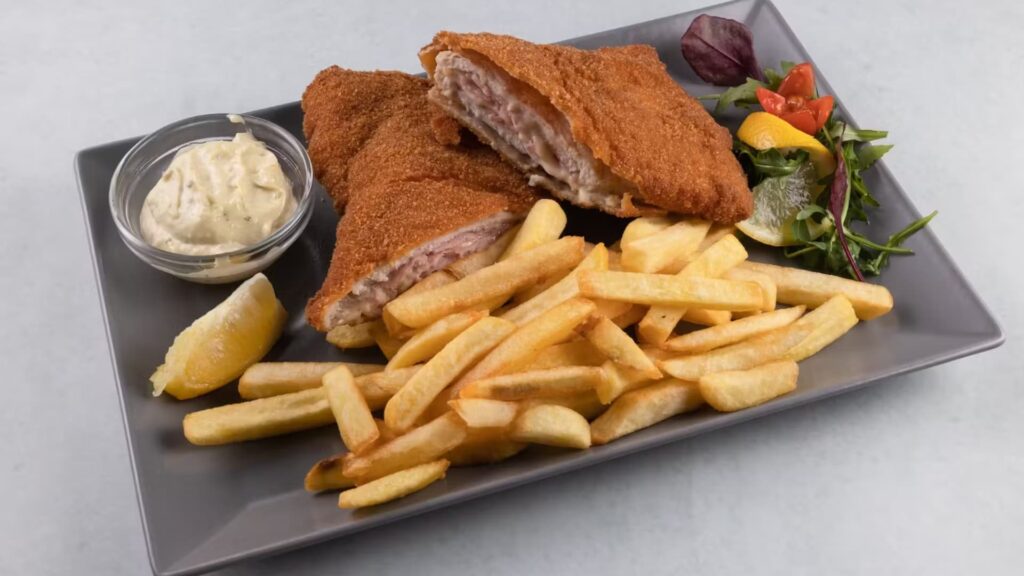
Zagreb steak, also known as “zagrebački odrzak”, is a hearty main dish you should definitely try while visiting Croatia, especially in Zagreb.
This flavorful creation consists of either pork or veal schnitzel filled with Swiss cheese and ham, resulting in a delightful combination of savory and salty tastes.
The dish is then coated in breadcrumbs and can be prepared by frying, grilling, or roasting, with slight variations available at different restaurants.
Originally inspired by Austrian and Hungarian cuisines, zagreb steak has evolved into a cherished Croatian specialty.
Typically served alongside creamy mashed potatoes and mushroom sauce, it provides a satisfying taste of Croatian comfort food.
Be prepared for sizable portions, and don’t miss the chance to sample local interpretations of this beloved classic for a truly authentic culinary adventure.
Kremšnita
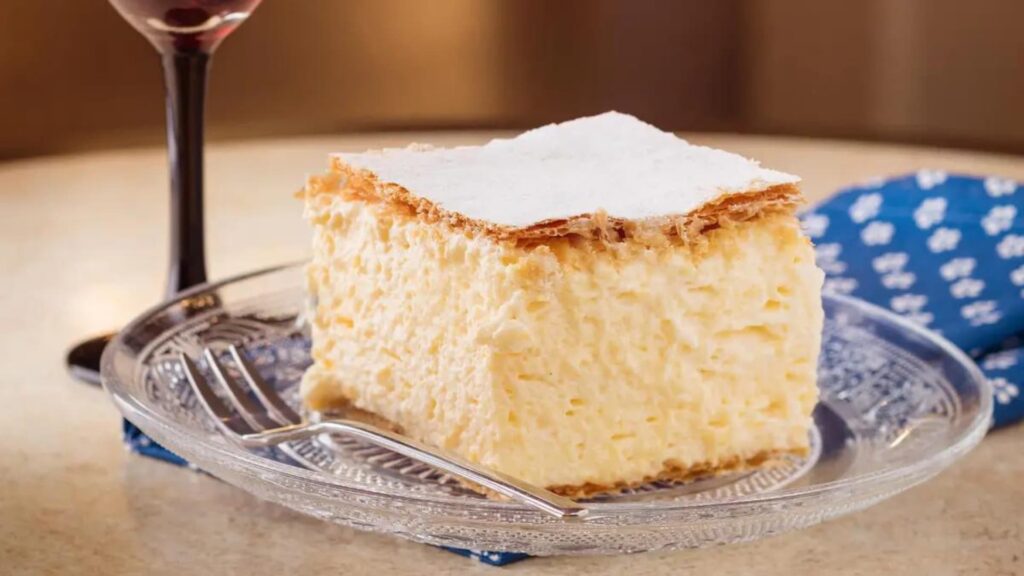
Kremšnita is an iconic Croatian dessert, known for its creamy custard layered between sheets of flaky puff pastry.
With roots dating back to the Austro-Hungarian Empire, it’s a cherished part of Croatia’s pastry heritage.
The flavor is a delightful combination of velvety vanilla custard and crispy, golden-brown pastry.
While traditionally enjoyed on its own, savoring it with a cup of Croatian coffee offers an authentic culinary experience.
For the ultimate kremšnita adventure, sample it in its hometown of Samobor, just outside Zagreb.
But remember, this dessert is rich, making it a perfect choice for those with a sweet tooth.
Kremšnita is my all-time favorite Croatian dessert, and I highly recommend experiencing it while it’s served piping hot.
Kesten pire (chestnut puree)

Chestnut puree is a delightful dessert from Croatia’s Istria region, made by blending roasted chestnuts, sugar, and a touch of vanilla (sometimes cocoa) into a smooth, slightly sweet puree.
It’s known for its creamy texture and balanced flavor.
To make it, chestnuts are roasted, peeled, and simmered to create the puree.
This dessert has deep historical roots in Istria’s food traditions and can be enjoyed on its own or as a dessert after an Istrian meal, ideally paired with local wine or rakija.
When visiting Croatia, don’t miss trying kesten pire, and if you’re in Istria during the autumn season, check out local markets for freshly roasted chestnuts and homemade kesten pire to experience the region’s culinary culture.
Soparnik

Soparnik, a cherished Croatian dish hailing from the coastal Dalmatian region, is a savory pie often likened to a Mediterranean flatbread or hearty appetizer.
Its rich and rustic flavor profile comes from a filling made with Swiss chard, garlic, olive oil, and fragrant herbs, offering a delightful taste of the Mediterranean.
While the core recipe remains consistent, regional variations may introduce ingredients like tomatoes, breadcrumbs, or cheese.
Historically, soparnik has humble origins as a peasant dish, evolving into a cherished local specialty celebrated at festivals, such as the Soparnik Festival in Omiš.
When enjoying soparnik, consider pairing it with a crisp salad, olives, and Croatian wine or rakija for a complete culinary experience.
It’s a must-try dish when exploring Dalmatia, particularly in the vicinity of Omiš and Brač, providing an authentic taste of Croatian heritage and traditions.
Čupavci
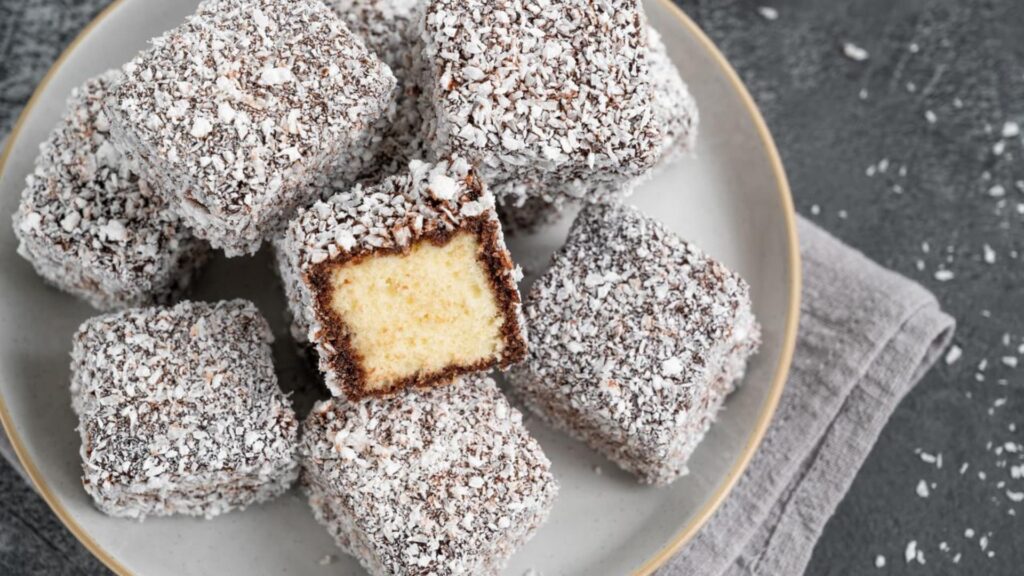
Čupavci, pronounced “choo-pav-tsee,” are beloved Croatian desserts often served as a delightful post-meal treat.
These bite-sized sponge cakes are soaked in sweet chocolate syrup, giving them a unique moist and “čupav” (hairy) texture, and then coated with shredded coconut for added crunch.
While the classic version is readily available, you’ll also discover variations featuring chocolate, nuts, or colorful sprinkles.
The flavor profile strikes a perfect balance between sweetness and texture.
Čupavci hold a special place in Croatian culture, often enjoyed during family gatherings and festive occasions.
Whether paired with coffee or tea, they offer a taste of Croatian tradition and an indulgent glimpse into the country’s culinary heritage.
However, it’s important to note that they can be quite sweet, and homemade versions carry a personal touch that transcends regional boundaries, making čupavci a memorable treat to savor during your visit to Croatia.
Burek
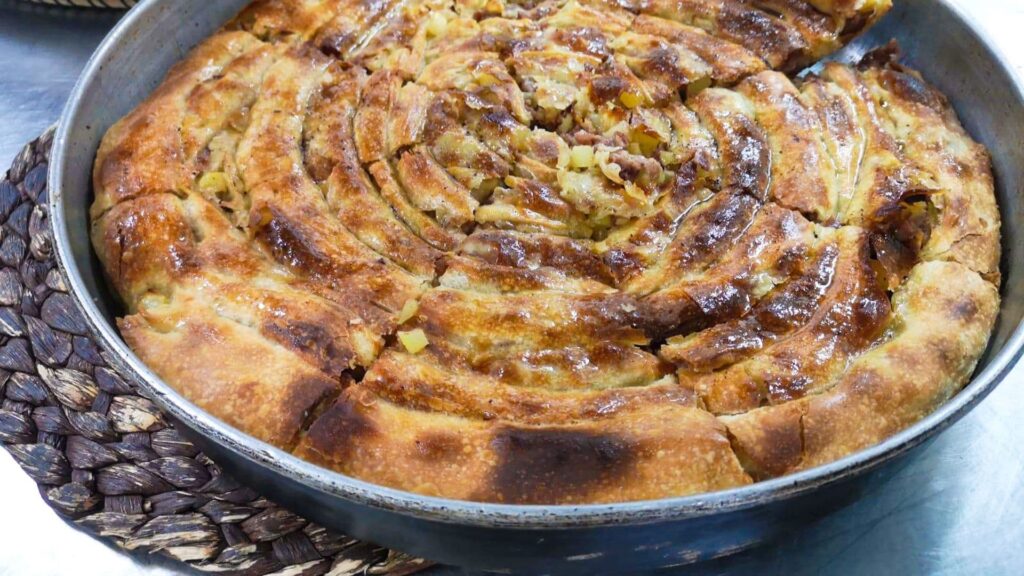
Burek is a revered Croatian pastry known for its flaky layers and rich fillings, with a history rooted in the Ottoman Empire’s influence.
This delectable treat comes in various versions, such as meat, cheese, or spinach, each offering distinct flavors and textures.
It’s made by layering thin phyllo dough and then baked to perfection.
You can enjoy burek on its own or pair it with yogurt, ajvar, or a fresh salad.
This dish is widely available across Croatia, and regional variations add unique twists to its preparation.
Savoring burek is a fantastic way to explore Croatian culinary traditions and experience the country’s diverse flavors.
Krafne (donuts)

Krafne (donuts), Croatia’s delectable doughnuts, are a dessert every tourist should try.
These doughnuts, inspired by the Austro-Hungarian Empire, are mildly sweet with a crispy exterior and a soft interior.
They’re made from flour, eggs, sugar, milk, and yeast, and can be filled with jams, chocolate, or vanilla cream, with unique regional variations to discover.
Whether you’re exploring the Dalmatian coast or strolling through Zagreb, you’ll find them available year-round in local bakeries and cafes.
For the ideal experience, enjoy them with a cup of Croatian coffee.
Just be mindful of their calorie content, as they are a rich treat. Krafne offer a delightful taste of Croatian culture, often enjoyed during Carnival, providing a sweet and welcoming introduction to the country’s culinary heritage.
Grilled Sea Bass or Sea Bream
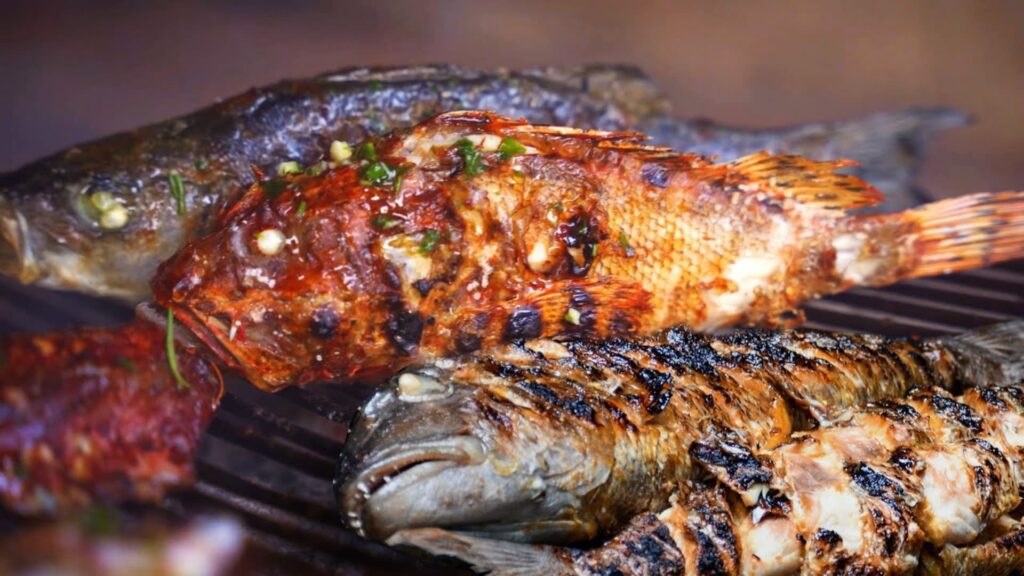
Grilled Sea Bass or Sea Bream, called “Orada” or “Brancin” locally, is a top seafood dish in Croatia, especially along the coast.
It’s all about perfectly grilling the fish to make it smoky and crispy on the outside while keeping it tender inside.
They keep it simple, seasoning it with olive oil and salt to bring out the fish’s natural sweet flavor.
Sometimes, they add Mediterranean herbs and olive oil in Dalmatia.
It’s often served with blitva, a side dish made of Swiss chard and potatoes.
This dish is a taste of Croatia’s love for seafood, mainly coming from places like Dalmatia.
Just be careful of small bones, and enjoy it by the sea for the full Mediterranean experience with the sea breeze and wonderful smells.
Swiss chard with potatoes

Swiss chard with potatoes is a classic Croatian side dish that captures the essence of Mediterranean cuisine.
This dish consists of Swiss chard, tender potatoes, garlic, and olive oil, creating a simple yet flavorful combination with deep roots in Croatian culinary traditions.
It pairs exceptionally well with various main courses, especially grilled fish and meats, making it a popular choice along the beautiful Adriatic coast.
Swiss chard provides earthy notes, while the potatoes add creaminess, all complemented by the rich aroma of garlic and olive oil.
To enhance your experience, consider pairing it with Croatia’s renowned wines like Plavac Mali or Graševina.
Whether you’re a food enthusiast or a curious traveler, trying blitva s krumpirom is a delightful way to savor the heritage, culture, and vibrant flavors of Croatia.
Exploring a cooking class or food tour can deepen your appreciation for this Mediterranean gem.
Just remember to inquire about ingredients if you have dietary preferences or allergies, and get ready to indulge in a taste of Croatia’s rich gastronomic history.
Stuffed peppers

Stuffed peppers, a popular Croatian dish, are a bit like sarma, another tasty treat from Croatia.
Both dishes have a yummy mix of ground meat, rice, herbs, and spices cooked in a tasty tomato sauce.
But here’s the main difference: stuffed peppers use bell peppers instead of cabbage leaves to hold the filling.
These stuffed peppers are full of flavor and are often enjoyed with sour cream, bread, or salad.
No matter where you are in Croatia, trying stuffed peppers is a great way to experience a piece of Croatian food culture.
Beans with sausage (grah s kobasicom)
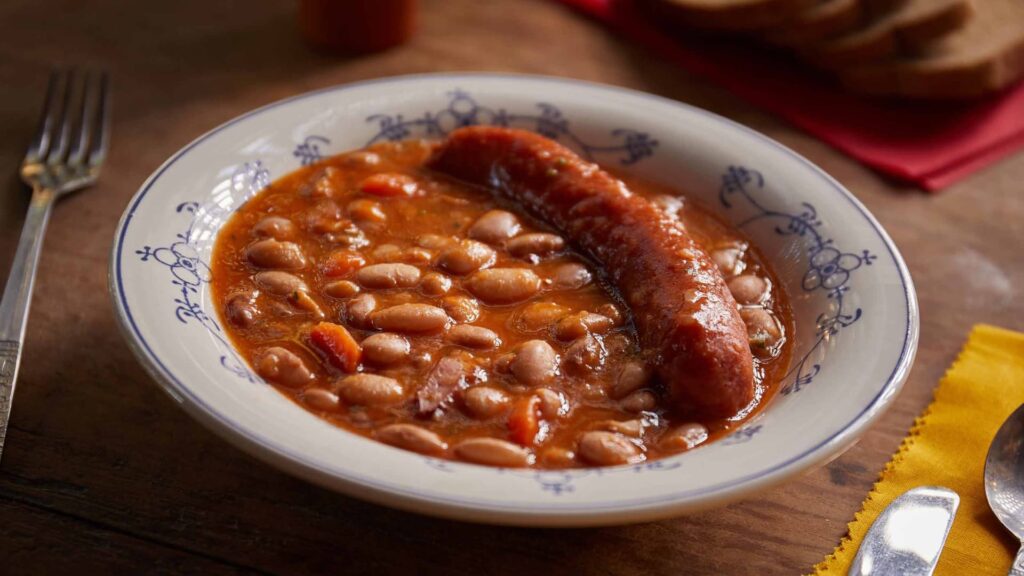
Beans with sausage, known as “grah s kobasicom,” is a cherished Croatian main dish that captures the essence of traditional Croatian cuisine.
This flavorful comfort food, considered a main course, features slow-cooked dried beans, typically kidney or pinto beans, simmered with sliced sausages, onions, garlic, and paprika, resulting in a rich and savory flavor profile.
While it’s a consistent favorite throughout Croatia, regional variations abound, with coastal regions adding seafood like small fish or squid, while inland areas emphasize diverse sausages or smoked meats.
Often served with crusty bread for soaking up the delicious bean sauce and complemented by sour cream or fresh parsley, it’s a must-try for a taste of local flavors.
Pumpkin soup

Pumpkin soup, is a creamy and comforting appetizer that showcases Croatia’s culinary prowess.
This dish features diced pumpkin, sautéed onions, and a medley of spices like nutmeg and cinnamon, resulting in a delightful blend of sweet and savory flavors.
While it’s enjoyed year-round, it’s particularly popular during autumn and winter when pumpkins are in season.
Variations exist across different regions of Croatia, with coastal areas adding Mediterranean herbs and inland regions opting for heartier versions with root vegetables.
Served with fresh bread and local cheeses, trying this soup offers a taste of Croatian tradition and innovation, all made from locally sourced ingredients.
Don’t miss the chance to savor this beloved dish and explore local food markets to witness the vibrant array of pumpkins during your visit.
Grilled sardines

Grilled sardines in Croatia, are made by seasoning small sardines with olive oil, salt, pepper, and Mediterranean herbs, then grilling them until they’re crispy outside and tender inside.
They have a sea-like taste with a hint of smokiness.
This dish is a classic coastal favorite with a long history, once a meal for fishermen.
You can enjoy it with veggies, bread, or potatoes, and it goes well with local wine or beer. Just be careful of small bones.
To try it authentically, visit places like Split, Dubrovnik, Hvar, or Brač along the coast.
Kroštule
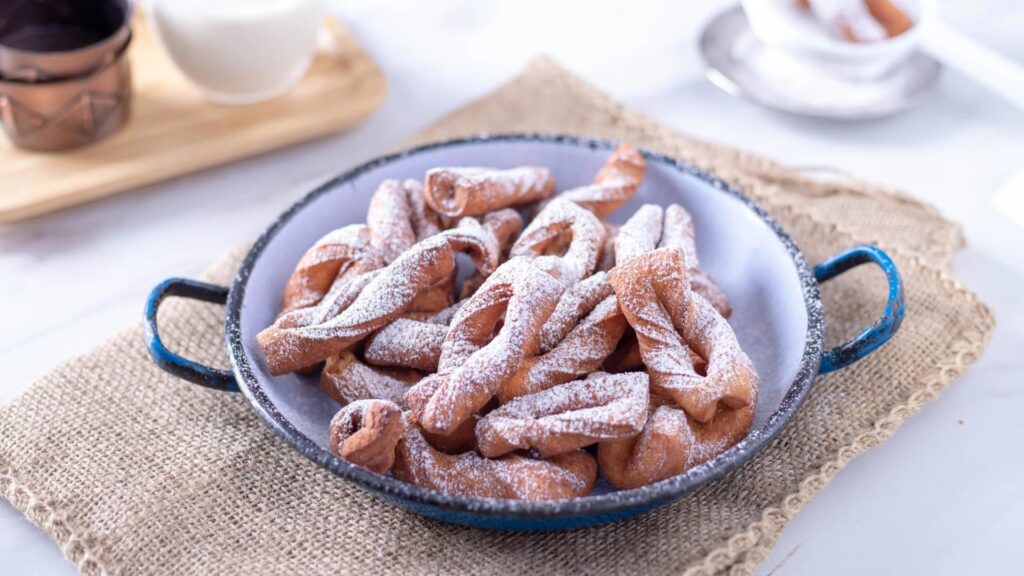
Kruštule are a delightful Croatian dessert – intricate, golden-fried pastries with a unique twisted shape, and a light, crispy texture, sprinkled with powdered sugar.
They hold a special place in Croatian culture and are often savored during festive gatherings, symbolizing happiness and togetherness.
While they go by different names like “kroštule” or “raštule” in various regions of the country, they are universally cherished.
Best enjoyed with Croatian coffee or tea, trying kruštule lets you taste a bit of Croatia’s history and tradition, all while basking in the country’s warm hospitality.
Just a friendly tip: they’re sweet and tempting, so savor them in moderation!
Medenjaci (gingerbread cookies)

Medenjaci, known as gingerbread cookies, are a beloved Croatian snack originating from Zagreb, the capital city.
These small, sweet delights are a harmonious blend of honey, sugar, and spices like cinnamon and ginger, offering a delightful balance of sweet and spicy flavors.
They come in various shapes and intricate designs, showcasing the country’s artisanal craftsmanship.
Medenjaci have a rich history, once introduced by the Turks and now symbolizing Croatian culture and celebration.
Enjoy them with a cup of Croatian coffee or tea, and consider taking home beautifully decorated medenjaci as unique souvenirs.
While they are generally safe to eat, do check for allergens if you have sensitivities.
These gingerbread cookies offer a sweet taste of Croatian tradition, making them a must-try during your visit.
Paprenjaci (pepper cookies)

Paprenjaci, known as pepper cookies, are a distinctive Croatian dessert with a rich history.
These square or rectangular cookies feature intricate patterns and boast a unique blend of sweetness from honey or sugar, coupled with a surprising spiciness from freshly ground black pepper.
Originating in Croatian monasteries centuries ago, they have become a cultural treasure. Paprenjaci are best paired with Croatian coffee or tea, providing a delightful contrast of flavors.
Their roots are particularly strong in Dalmatia, and they often serve as symbolic gifts for special occasions, embodying the taste and tradition of Croatia.
Don’t miss the opportunity to savor this flavorful piece of Croatian culinary heritage and consider bringing some home as a memorable souvenir for your loved ones.
Fritule

Fritule, adored miniature doughnuts in Croatia, are a cherished dessert with deep historical roots, often relished at festivals and gatherings throughout the country.
These small, crispy-soft treats feature a mildly sweet, vanilla-infused flavor complemented by hints of citrus zest.
Crafted from a simple batter of flour, eggs, sugar, and a touch of brandy or rum, they’re fried to a golden perfection and traditionally served warm.
Fritule can be found all over Croatia, and each region adds its unique twist to the recipe.
They are a must-try for a taste of Croatia’s rich culinary heritage and are best enjoyed with a cup of coffee or tea.
While some like to drizzle them lightly with chocolate, take care not to overwhelm their delicate taste; it’s all about savoring their unique flavor.
Cheese from the island of Pag
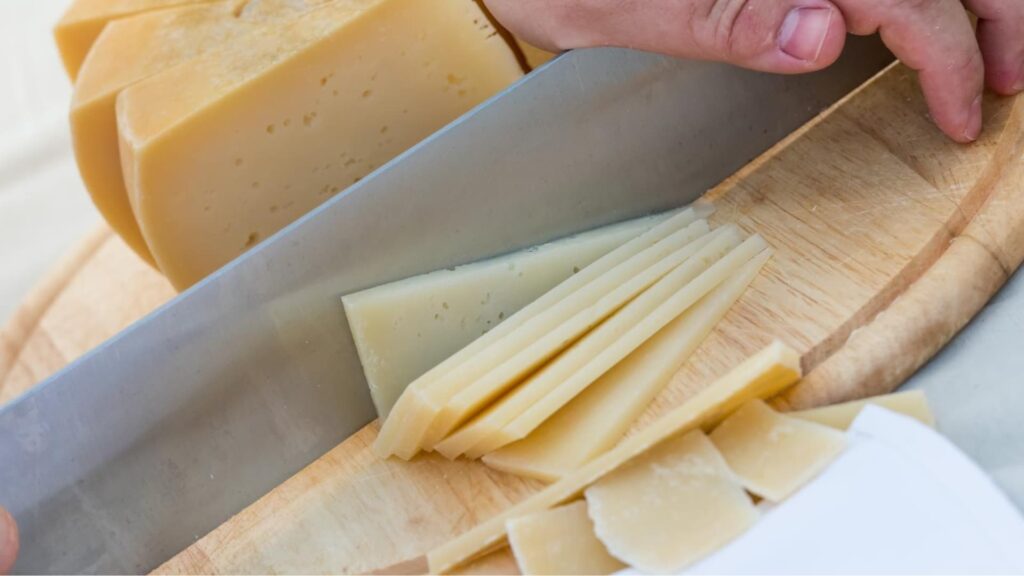
Cheese from the island of Pag, known as “paški sir”, is an appetizer that embodies the essence of Croatia’s island cuisine.
Hailing from the rugged island of Pag in the Adriatic Sea, this cheese is a Dalmatian treasure known for its distinctive, slightly crumbly texture and robust, salty flavor infused with hints of Mediterranean herbs and sea salt.
Crafted from the milk of indigenous Pag sheep that graze on aromatic herbs and saline pastures, its history dates back to the 15th century.
Paški Sir pairs exquisitely with local wines, fresh figs, olives, and prosciutto, offering a taste of Pag’s unique terroir.
Don’t miss the chance to visit local cheese producers on the island for a firsthand look at the cheese-making process, adding a memorable dimension to your Croatian culinary journey.
Perkelt od soma (catfish stew)

Catfish stew, known as “perkelt od soma”, is a robust main dish celebrated for its rich flavors and cultural importance.
This savory stew consists of tender catfish fillets gently simmered in a sauce flavored with paprika, onions, garlic, and tomatoes.
The result is a delightful harmony of smoky and slightly spicy paprika notes, complementing the delicate catfish.
While there are regional variations, especially in inland regions like Slavonia and Baranja, where freshwater fish is abundant, this dish serves as a genuine taste of Croatia’s culinary heritage, blending both continental and Mediterranean traditions.
Typically served with white rice or bread, pairing it with local Croatian wine or rakija can elevate the experience.
Seek out this flavorful treasure to enjoy a slice of Croatia’s gastronomic history and cultural heritage. Keep in mind that it may be more prevalent inland than along the coastal regions.
Salenjaci

Salenjaci are a must-try Croatian dessert, consisting of flaky, golden-brown pastry filled with sweet and nutty goodness, often with walnut or poppy seed fillings, honey, and a hint of cinnamon.
These delectable pastries are a beloved part of Croatian culinary heritage, dating back to ancient times and often enjoyed during special occasions.
While their classic form is rectangular or oval, you can find exciting variations with ingredients like apricots, figs, or chocolate.
Best paired with a cup of coffee or tea, salenjaci offer a delightful taste of Croatia’s sweet traditions and make for fantastic souvenirs to share the country’s flavors with loved ones.
Enjoy them in various regions, with a special association with continental Croatia, including Slavonia and Zagreb.
Krvavice sa zeljem

Krvavice sa zeljem is a classic Croatian main dish made with special sausages that include pig’s blood, pork, and rice, served alongside sauerkraut.
It’s a hearty, traditional meal that reflects Croatia’s history of using every part of animals for food.
The sausages have a unique, rich taste that pairs nicely with the tangy sauerkraut.
You can find variations of this dish in different parts of Croatia, like mashed potatoes in the north and different sausages on the coast.
It’s a must-try comfort food that’s perfect with some bread and local wine or rakija.
Enjoy a taste of Croatia’s culinary heritage!
Ajngemahtec

Ajngemahtec is a traditional Croatian chicken soup renowned for its comforting flavors and heritage.
This hearty dish features tender chicken, aromatic herbs, and soft dumplings, making it a beloved comfort food.
Its intriguing name, derived from the German word “eingemacht,” which in this context means “canned” or “conserved,” signifies the delightful blend of ingredients simmered together.
While ajngemahtec can be found throughout Croatia with regional twists, it’s especially cherished in the eastern region of Slavonia.
Locals often enjoy it with crusty bread or pogača, and adding a dollop of sour cream is a tasty option.
The name “Ajngemahtec” itself is a testament to the dish’s unique history and the fusion of flavors it represents.
Pogača
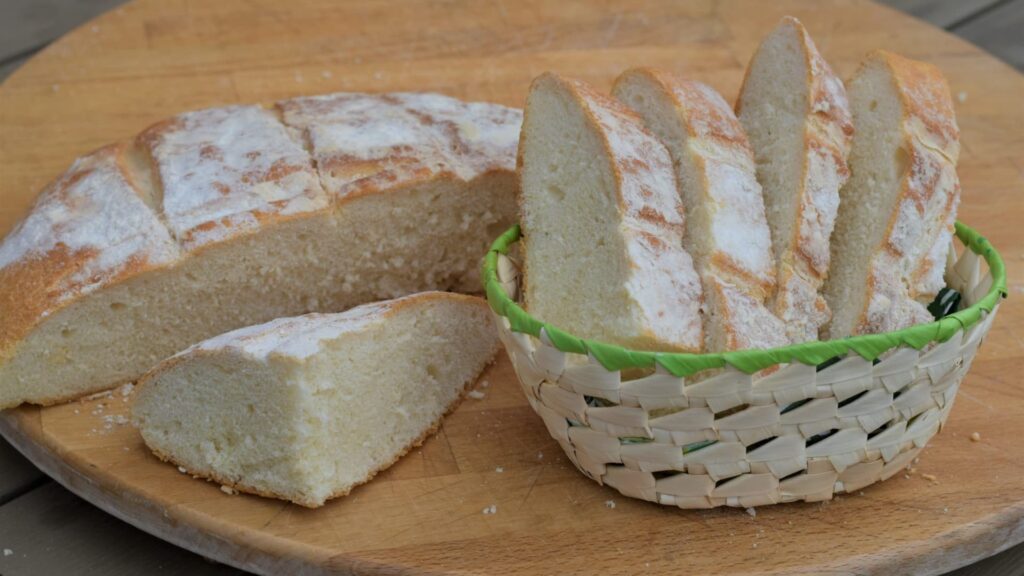
Pogača, a Croatian bread, is a versatile delight found throughout the country.
It’s not quite a main dish or dessert but instead a savory bread characterized by a crispy, golden crust and a soft, slightly salty interior.
Made from basic ingredients like flour, water, yeast, salt, and sometimes olive oil, pogača comes in various regional variations, such as “pogača s krumpirom” with mashed potatoes.
This beloved bread holds cultural significance, symbolizing tradition and hospitality in Croatian culture.
It pairs wonderfully with local cheeses, meats, or soups, and you can even encounter unique customs like breaking pogača for good luck at weddings.
A must-try for food enthusiasts seeking an authentic taste of Croatia’s food.
Gregada

Gregada is a classic Croatian coastal dish, a delightful main course that captures the essence of Mediterranean cuisine.
Originating from the Dalmatian coast, gregada features white fish, commonly grouper or dentex, paired with local ingredients like potatoes, garlic, onions, and olive oil, all infused with the Adriatic Sea’s flavors.
This dish has historical roots in seafaring traditions, making it a unique culinary experience.
Enjoy it in coastal restaurants with waterfront views, paired with local white wine, for an authentic taste of Croatia’s coastal culture.
Keep in mind that gregada is most prevalent in coastal regions, offering a delicious way to immerse yourself in the stunning Adriatic scenery.
Maraschino cherries

Maraschino cherries, originating in Zadar on the Croatian Adriatic coast, are small, round cherries soaked in maraschino liqueur or syrup, resulting in a delightful combination of sweetness and subtle almond-like flavor.
These historic cherries boast a centuries-old preservation method perfected by Venetians in the 19th century.
While not a standalone dish, they are a beloved dessert garnish and cocktail embellishment, including the iconic Shirley Temple.
They elevate the taste of ice creams, cakes, and pastries.
Visitors to Zadar can explore the origins of maraschino cherries by visiting local liqueur producers, offering a flavorful connection to Croatia’s rich culinary traditions and a chance to take home a piece of this coastal region’s heritage.
Enjoy them in moderation, as their sweetness can be intense.
Palačinke (pancakes)

Palačinke, widely recognized as pancakes around the world, are cherished in Croatia as thin and delicate crepes offering a versatile culinary experience.
These crepes have a mildly sweet and eggy flavor and can be filled with a variety of ingredients, such as Nutella, jam, cheese, and ham.
They hold a special place in Croatian homes and cafes, symbolizing tradition and family gatherings.
Throughout the country, you’ll find numerous pancake houses offering their unique takes on this beloved dish.
Croatians also enjoy baking pancakes in the oven, layering them with creamy cheese and either savory or sweet ingredients, resulting in a delightful blend of flavors.
Additionally, they can be coated in breadcrumbs and fried to perfection.
Don’t miss the chance to savor both versions to experience Croatia’s culinary heritage, and be sure to enjoy them with coffee or explore local variations for a delightful journey into the sweet and savory aspects of Croatian cuisine.
Cukarini kiflice
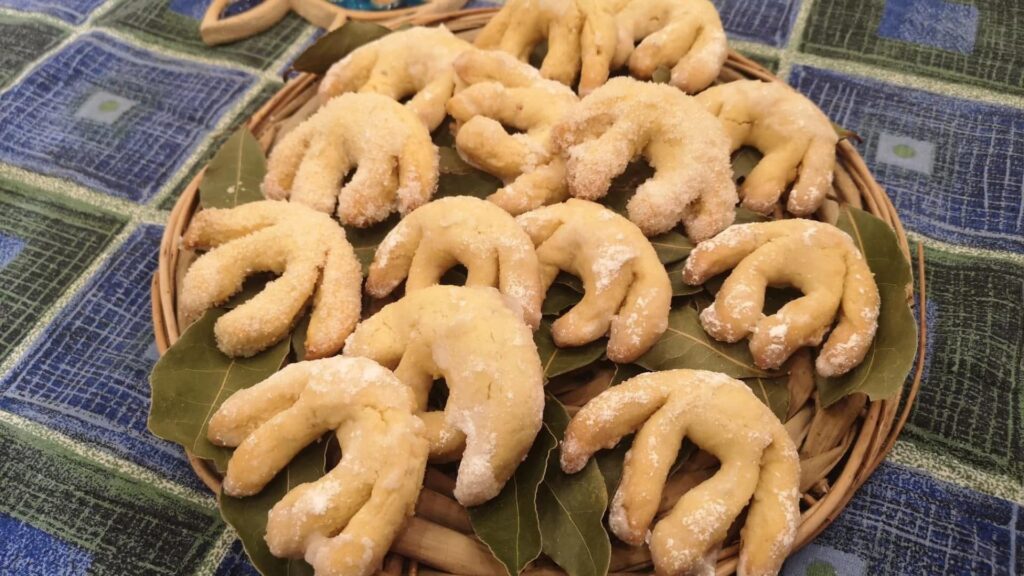
Croatian sugar crescent cookies, also known as “cukarini kiflice”, are delightful crescent-shaped pastries that serve as the perfect sweet treat to conclude your Croatian culinary journey.
These buttery cookies, dusted with powdered sugar, feature a nutty and slightly crumbly texture with a subtle hint of vanilla.
While the classic recipe is beloved, keep an eye out for delightful variations that may include nuts, cocoa, or citrus zest.
These cookies carry a rich history within Croatian households, often gracing tables during special occasions, embodying tradition, warmth, and the joy of sharing sweet moments with loved ones.
Whether paired with Croatian coffee or herbal tea, savoring cukarini kiflice is a delightful way to experience the sweet side of Croatian cuisine.
However, be forewarned, their addictive quality might lead you to indulge in more than planned.
When visiting Croatia, don’t miss the opportunity to try these crescent-shaped treats, each one carrying a taste of tradition passed down through generations.
Povitica
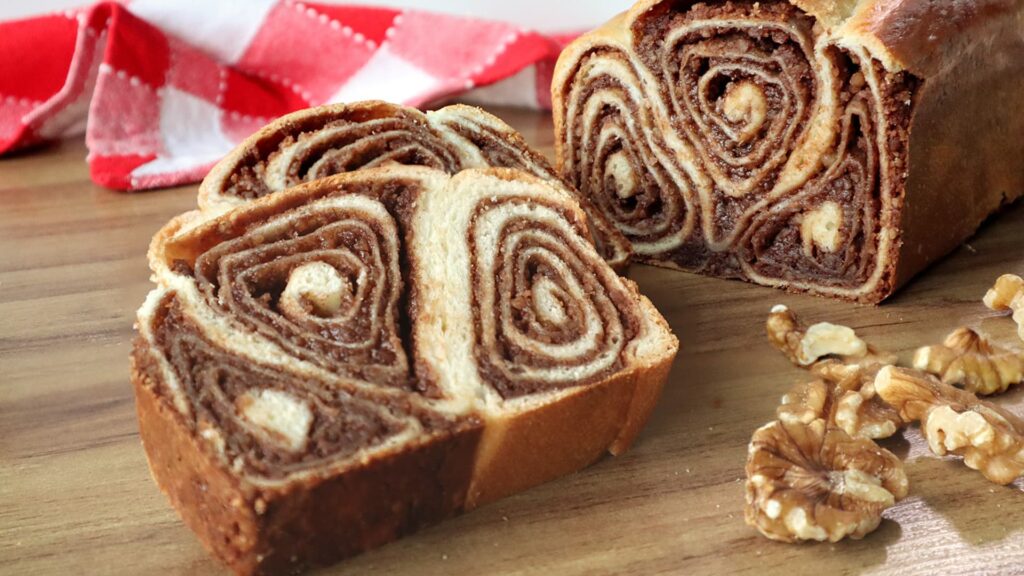
Povitica is a sweet bread roll swirled with a rich filling, delighting taste buds as a dessert or a snack.
Its intricate patterns are created by rolling out thin sweet dough and generously layering it with fillings like ground walnuts, poppy seeds, or sweet cottage cheese, offering various regional flavors.
The taste is a harmonious blend of sweet and nutty, making it a must-try treat.
Povitica is a labor of love, an embodiment of centuries-old traditions that vary across regions.
While it pairs wonderfully with coffee, finding it may require seeking out traditional bakeries, particularly in Croatia’s northern regions where it is most closely associated.
Whether enjoyed in a bakery or a local’s home, povitica is a sweet taste of Croatian heritage that promises a memorable culinary experience.
Fuži s tartufima (Istrian pasta with truffles)
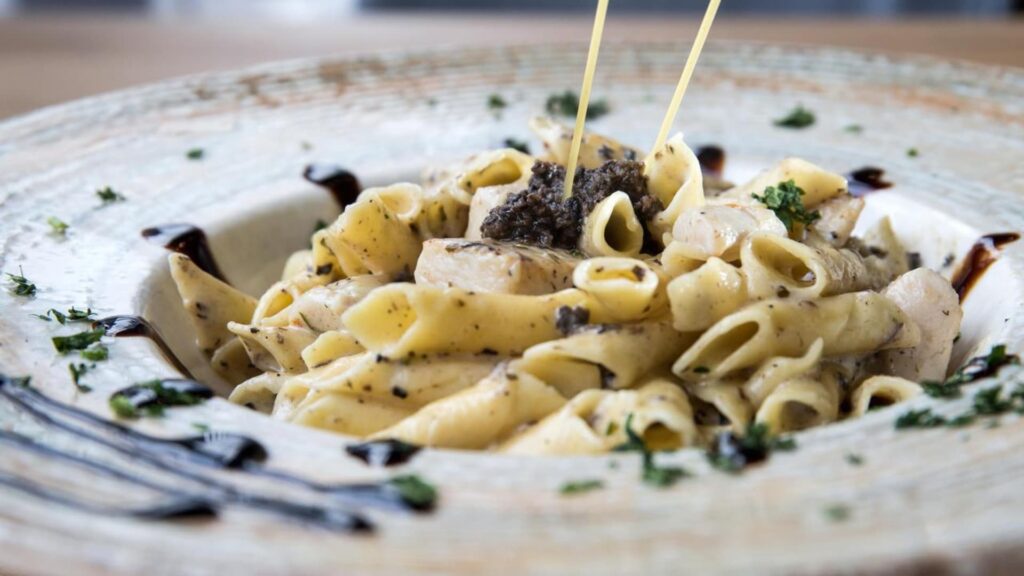
Fuži s tartufima, Istrian handmade pasta with truffles, is a culinary gem you can’t miss in Croatia.
Originating from the pristine truffle-rich forests of Istria, this main dish features meticulously crafted pasta, resembling twisted ribbons, perfectly paired with an earthy truffle-infused sauce.
The result is a symphony of flavors, with the handcrafted pasta providing a delightful chewiness that complements the distinct, aromatic umami richness of the truffles.
While fuži s tartufima is often savored on its own, it’s worth noting that Istria’s fresh truffles have made this region a global truffle hotspot.
This culinary delight is an opportunity to immerse yourself in the unique flavors of Istria and savor one of Croatia’s most iconic dishes.
Just be aware that the use of truffles can make this dish a luxurious treat, so it’s worth trying in different restaurants to explore various interpretations of this classic, handmade recipe.
Pašta fažol
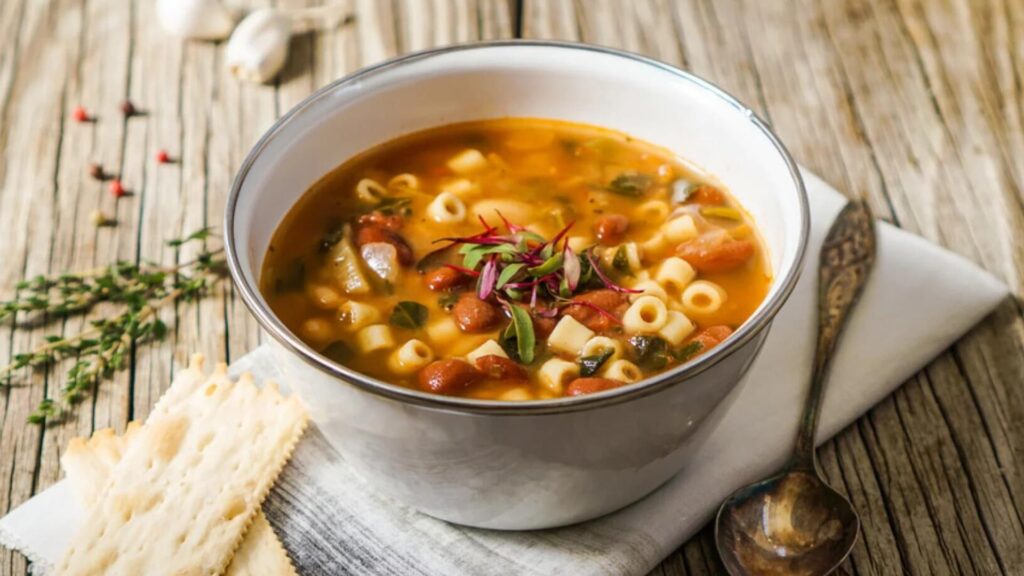
Pašta fažol brings together small pasta and creamy beans in a rich tomato-based broth.
With roots deeply embedded in Croatian culture, this hearty stew reflects the country’s resourceful culinary heritage.
Typically flavored with aromatic herbs, it offers a comforting and satisfying taste, making it a delightful choice for tourists looking to experience authentic Croatian home cooking.
Enjoy it on its own or with a slice of crusty bread to complete this flavorful culinary journey.
You’ll find pašta fažol enjoyed across Croatia, particularly along its stunning coastline and in Dalmatia, showcasing the diverse regional influences in Croatian cuisine.
Čobanac
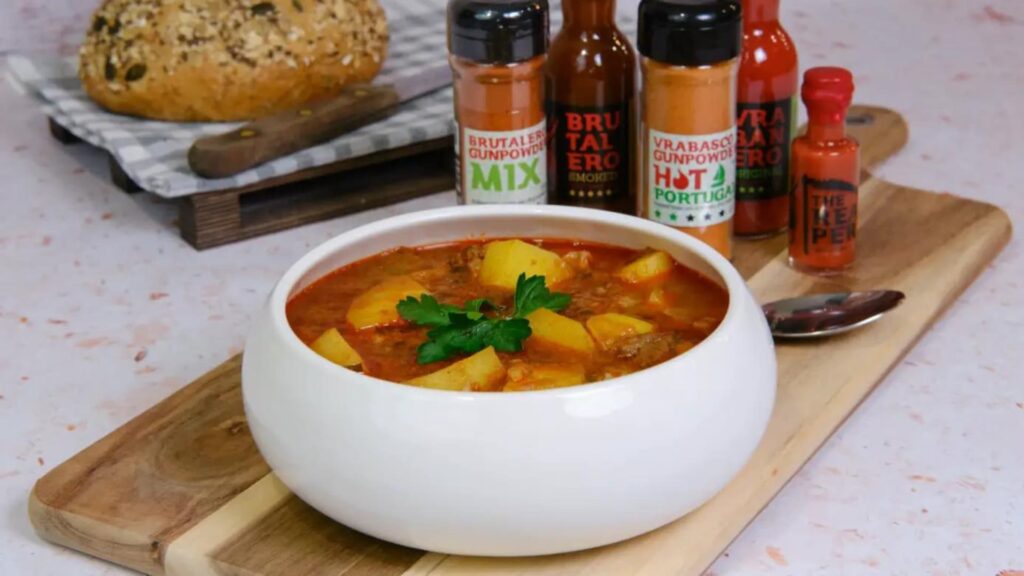
Čobanac is a hearty meat stew bursting with flavors – a blend of smoky paprika, tender meats like pork and beef, and a thick, aromatic sauce.
Cooked in a cauldron over an open flame, it harks back to the shepherds of the Balkans who cherished this sustaining meal during their journeys.
Interestingly, in some villages, čobanac is a communal celebration dish, cooked in large cauldrons during special occasions.
When you savor this rich and spicy stew, served with crusty bread, you’re not just enjoying Croatian cuisine; you’re immersing yourself in its cultural history, especially in the Slavonia region where it’s most renowned.
Just be aware of the spice level, and seek out traditional taverns for the most authentic experience.
Šiš ćevapi (or šiš ćevapčići)
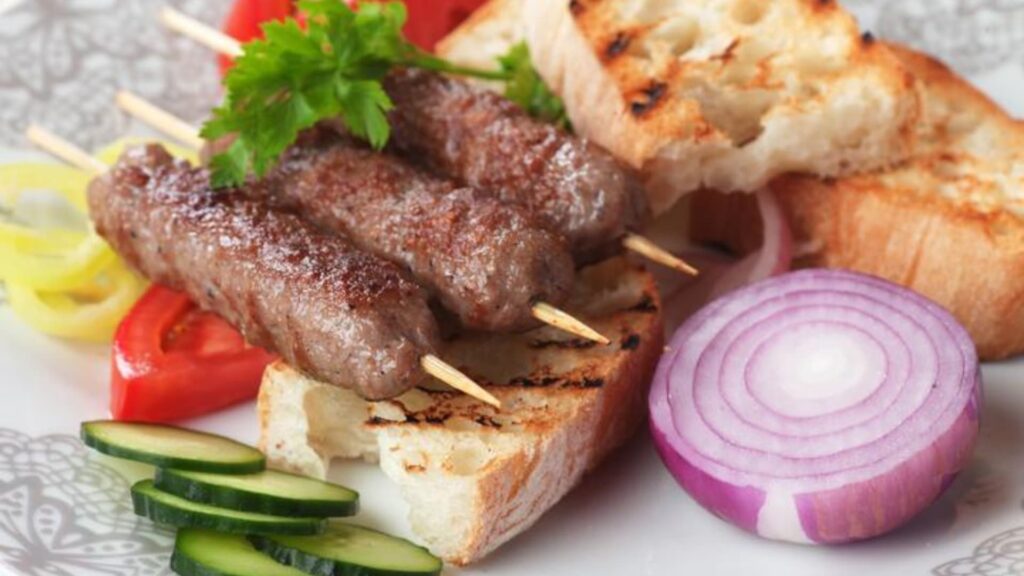
Šiš ćevapi is a main dish where small portions of flavorful minced meat, usually a mix of beef and pork, are skillfully threaded onto wooden sticks before grilling.
These petite kebabs come to life with the addition of garlic, paprika, and aromatic herbs.
What makes šiš ćevapi particularly intriguing for tourists is its dynamic regional variations.
Along the coast, you’ll savor Mediterranean influences with olive oil and fresh herbs, while inland regions, such as Zagreb, offer a spicier twist with hints of paprika or chili.
Served alongside ajvar (roasted red pepper spread), crisp veggies, and warm bread (lepinja), šiš ćevapi becomes a delightful exploration of Croatia’s diverse culinary landscape.
Whether you’re on the coast or inland, šiš ćevapi offers a unique taste of this captivating country’s culinary heritage that you simply can’t miss.
Just keep in mind its hearty portions; it’s a savory adventure worth savoring slowly.
Istrian soup (Istarska supa)
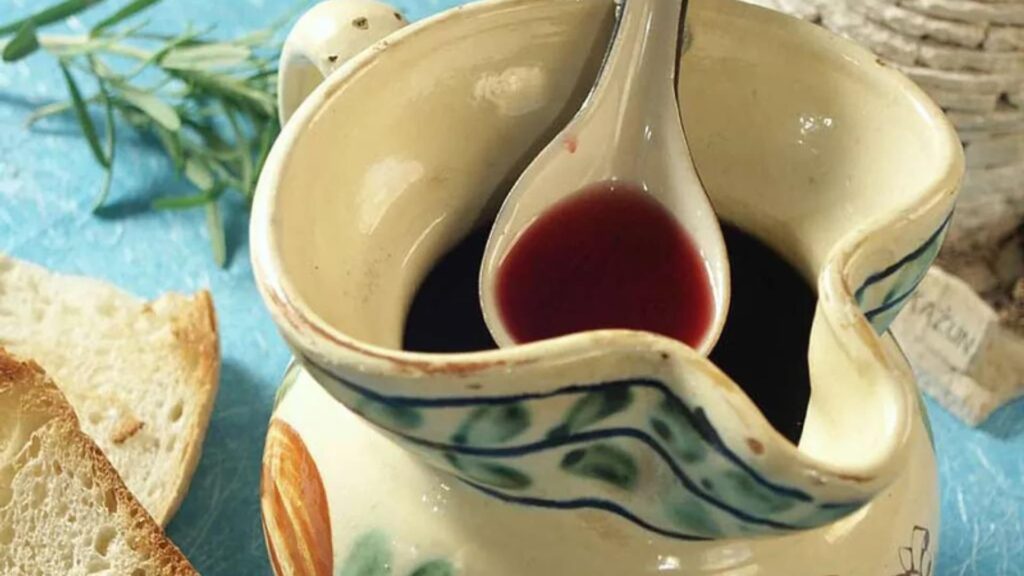
Istrian soup, is a traditional Croatian starter originating from the Istria region.
This savory delight features a rich chicken or beef broth combined with toasted bread and a generous sprinkle of grated hard cheese like Parmesan.
The dish reflects Istria’s diverse culinary heritage, influenced by Italian and Austro-Hungarian traditions. It’s typically served before the main course and pairs perfectly with local Istrian wines.
When you try Istrian soup, you’re not just savoring its deliciousness; you’re tasting a piece of Istrian history and culture.
So, while in Istria, be sure to sample this hearty, flavorsome soup for an authentic culinary experience.
Spit-roasted pork
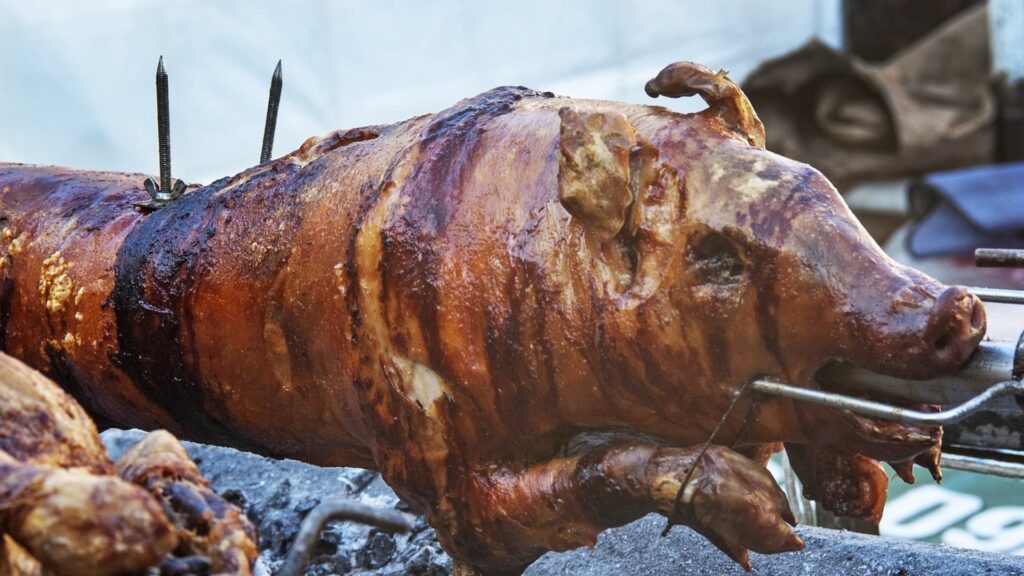
Imagine spit-roasted lamb, but with a twist.
That’s spit-roasted pork, a classic Croatian main dish.
It’s made by slow-roasting a whole piglet on a spit over an open flame until the pork becomes tender and the skin turns crispy and golden.
Fragrant herbs and spices infuse the meat with smoky, savory flavors.
While it’s typically reserved for special occasions, during the season, you can find it all over Croatia.
To enjoy it at its best, just remember to request it a day in advance, as it’s worth savoring this delicacy while it’s still hot and dripping with its delicious juices.
Pair it with seasonal vegetables, potatoes, and local wine for a taste of Croatia’s culinary heritage.
Pljukanci
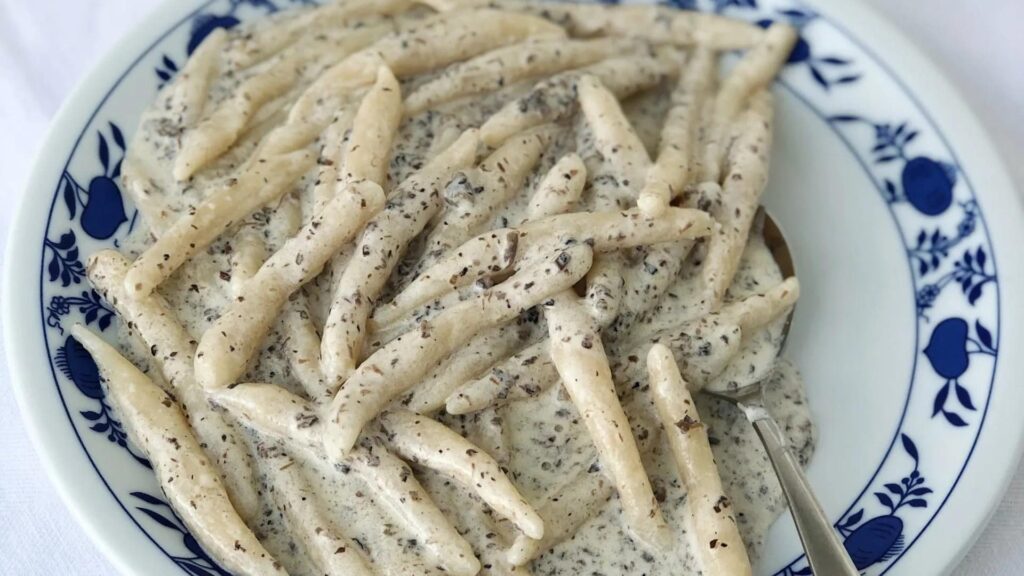
Pljukanci, a special handmade pasta hailing from Croatia’s Istria region, truly stands out.
Its distinctive noodles are irregularly shaped and crafted by hand, with small bits of dough lovingly dropped into boiling water.
Although it doesn’t take the spotlight as a main course or dessert, its rustic, slightly chewy texture pairs wonderfully with various sauces, like the rich meat-based ragù or the aromatic truffle cream.
Pljukanci’s recipe is simple, with just flour, water, and a pinch of salt, and it has been prepared this way for centuries.
You can discover this delectable dish throughout Croatia, but it’s especially celebrated in Istria, where they take pride in their handcrafted tradition.
If you’re seeking an authentic taste of Croatian comfort food, don’t miss out on pljukanci, but do remember to inquire about the sauce if you have any dietary restrictions.
Orahnjača

Orahnjača is a traditional Croatian dessert – a pastry roll filled with a rich mixture of ground walnuts, sugar, and a hint of cinnamon, encased in soft, golden-brown dough.
It’s a beloved sweet treat enjoyed with coffee or tea, particularly during special occasions and holidays.
Variations can include other nuts like hazelnuts or almonds, and its comforting flavors and delightful textures make it a cherished part of Croatian culinary heritage.
Originally from Slavonia in eastern Croatia, you can find orahnjača all over the country, each region adding its unique twist to this time-honored dessert.
Don’t miss the chance to savor this sweet piece of Croatian tradition, best paired with a cup of Croatian coffee or tea, or even a scoop of vanilla ice cream.
Just be cautious if you have nut allergies.
Sour cherry strudel

Sour cherry strudel is a must-try Croatian dessert that combines the sweet and tangy goodness of sour cherries with delicate, flaky pastry.
This iconic treat, with Austrian and Hungarian roots dating back centuries, offers a delicious taste of Croatian culinary history.
You’ll find it all over Croatia, but it’s particularly popular in regions like Slavonia and Baranja.
When indulging, watch out for cherry pits, and don’t forget to pair it with a dollop of whipped cream or a scoop of vanilla ice cream to enhance the experience.
Sour cherry strudel isn’t just a dessert; it’s a symbol of hospitality.
So don’t miss the chance to savor this iconic dessert, and share in the tradition and history it represents.
Roasted duck
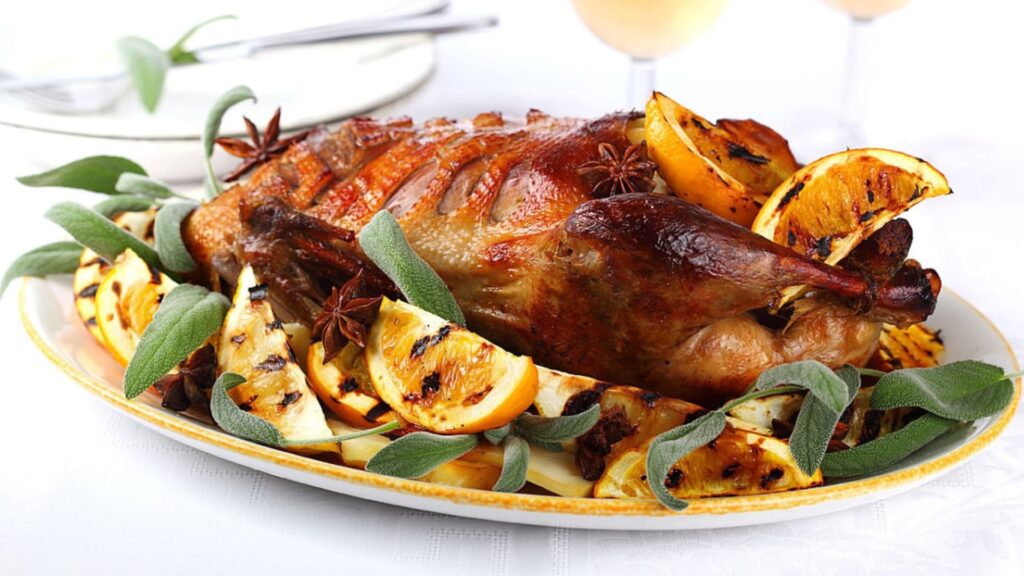
Roasted duck, is a special traditional dish in Croatia, but you won’t find it in many restaurants.
It’s a flavorful main dish made by roasting a whole duck with tasty herbs and spices.
The skin gets crispy, and the meat becomes tender.
Each region in Croatia has its own way of making it, so you might taste different flavors.
It’s often enjoyed at family gatherings and celebrations, giving it a festive touch.
Try it with roasted or mashed potatoes and veggies, or a red cabbage salad.
Just remember, it’s quite rich, so don’t overindulge, but definitely give it a try for a unique taste of Croatia’s food heritage.
Šaran na rašljama (grilled carp)
Grilled carp, known as “šaran na rašljama”, is a unique main dish rooted in the regions of Slavonia and Baranja, where freshwater carp thrives.
What sets this dish apart is its distinctive preparation method – the carp is expertly grilled over an open flame.
This grilling process infuses the fish with smoky flavors and creates a delightful contrast between crispy skin and tender, juicy meat.
Seasoned with local herbs and spices, this dish is a testament to Croatia’s continental heritage.
It’s typically served alongside creamy potato salad and ajvar, offering an unforgettable culinary journey through Croatia’s heartland, where tradition meets innovation.
Just a word of caution: watch out for fish bones while savoring this exceptional dish.
Cheese pie
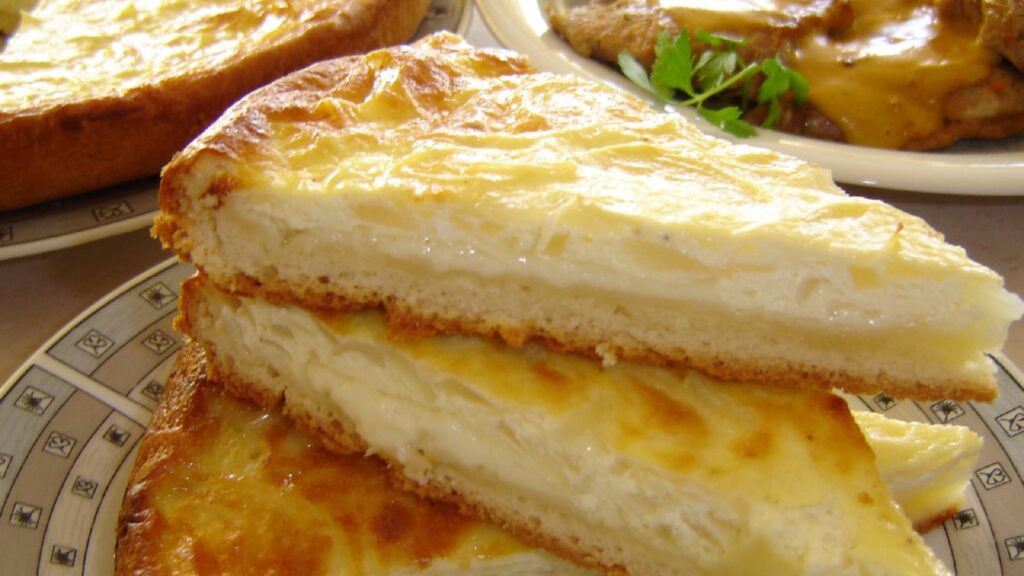
Cheese pie is a savory pastry that offers a taste of Croatia’s rich culinary heritage.
This traditional dish, enjoyed as an appetizer or snack, features a flaky, buttery crust filled with a creamy blend of local cheeses, often enhanced with herbs and spices.
With regional variations across the country, it reflects the resourcefulness of Croatian cooks through the centuries.
Pair it with fresh vegetables, local wine, or rakija for the full experience.
Sampling cheese pie not only treats your taste buds but also immerses you in the heartwarming flavors and traditions of Croatian cuisine, making it a must-try during your visit.
Beef soup with noodles
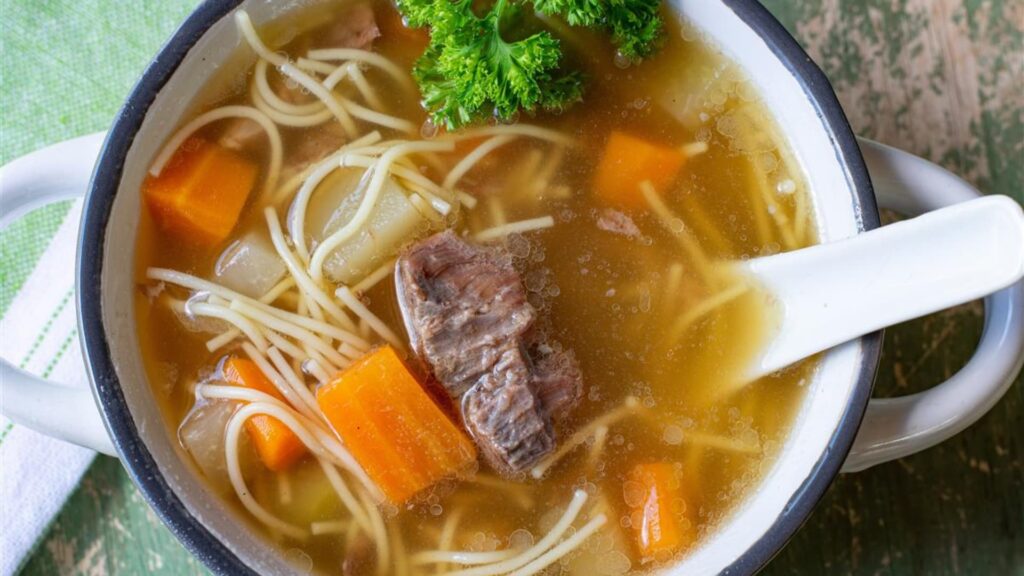
Let me introduce you to one of my absolute favorites, beef soup with noodles, a beloved Croatian appetizer.
This dish holds a special place in my heart because it’s at its absolute best when prepared by my grandmother.
It’s a clear, flavorful broth with tender beef and homemade noodles, slow-cooked to perfection.
While variations exist across Croatia, this soup is typically enjoyed as a simple starter, sometimes paired with bread or a sprinkle of fresh parsley.
This dish has a rich history, originating as a practical way to use every part of the animal.
So, when you visit Croatia, don’t miss the chance to try it and experience the warmth of Croatian culinary tradition.
Keep in mind that it might have different flavors in various regions, and for the most authentic taste, try it at a local eatery or, if you’re lucky, your grandma’s kitchen.
Bean salad (with onions)

Bean salad, is a traditional Croatian side dish that you should definitely try while visiting.
It’s typically served alongside grilled meats or seafood and features tender white beans mixed with fresh ingredients, creating a delightful balance of creaminess and zest.
Depending on the region, you might encounter versions with seafood or smoked meats, but the key components are beans, garlic, onions, and a tangy dressing.
This dish offers a taste of Mediterranean flavors and a glimpse into Croatia’s rich culinary heritage.
Zelena menestra
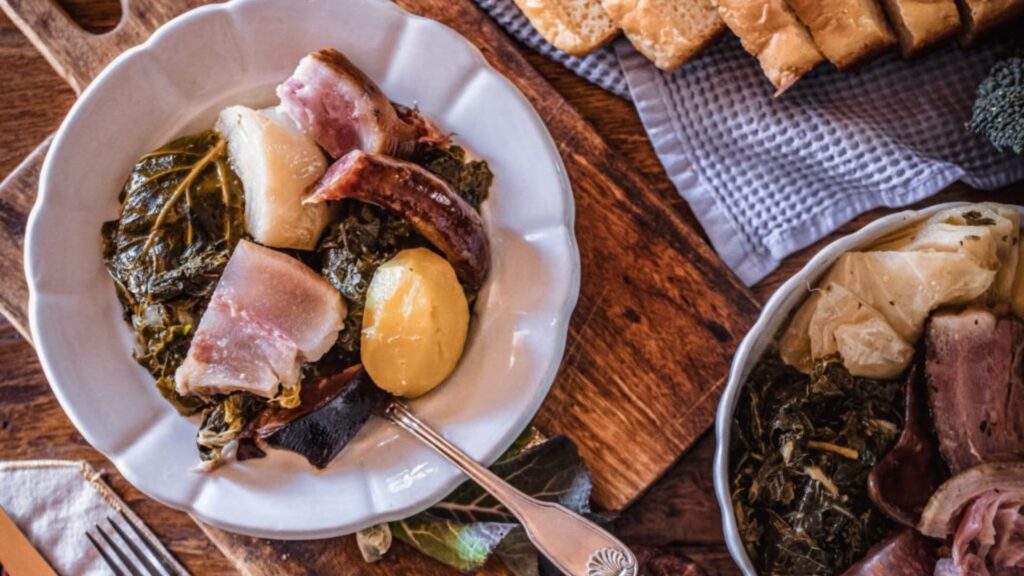
Zelena menestra, a beloved main course in Croatia, is a hearty green stew that showcases the country’s culinary heritage.
This vibrant green dish, made with collard greens or kale, is simmered to perfection with ingredients such as potatoes, garlic, onions, and seasonings, resulting in a harmonious blend of earthy, smoky, and tangy flavors.
It has deep historical roots, originating as a humble peasant dish adapted to various regions’ tastes and resources.
Zelena menestra can vary, with coastal areas incorporating seafood and inland regions adding smoked meats or sausages.
To savor this flavorful tradition, enjoy it with a slice of crusty bread and a glass of local Croatian wine or rakija, enhancing your connection to Croatia’s rich culinary history.
Be prepared for a filling meal and the delightful surprise of regional variations as you explore the diverse flavors of this beloved Croatian stew.
Fritaja (istrian truffle omelette)
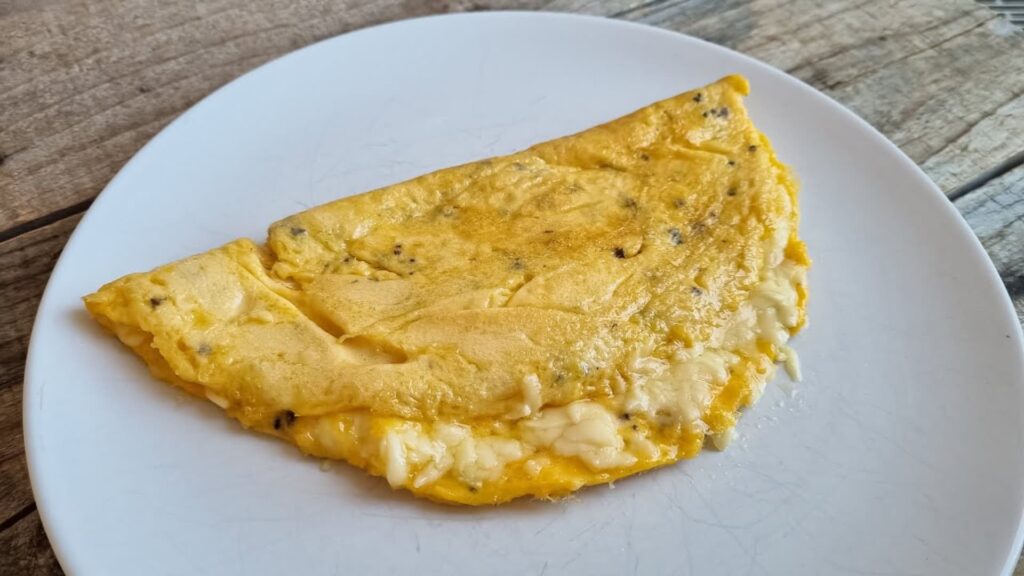
Istrian truffle omelette, or “Fritaja”, is a captivating main dish from Croatia’s Istrian Peninsula that’s a must-try for food enthusiasts.
It’s a savory omelette bursting with the enchanting flavors of fresh truffles, a rare and prized fungi found in Istria’s lush forests.
This delicacy offers a harmonious blend of creamy eggs infused with the earthy essence of truffles, making it a truly luxurious and unique culinary experience.
The dish has deep historical roots in Istria’s truffle hunting tradition, and it’s best enjoyed with a side of fresh salad or grilled asparagus, accompanied by a glass of Istrian wine.
For a memorable adventure, consider visiting Istria during truffle hunting season (September to November) to witness the excitement of truffle hunts and indulge in the freshest istrian truffle omelette.
Čvarkuše
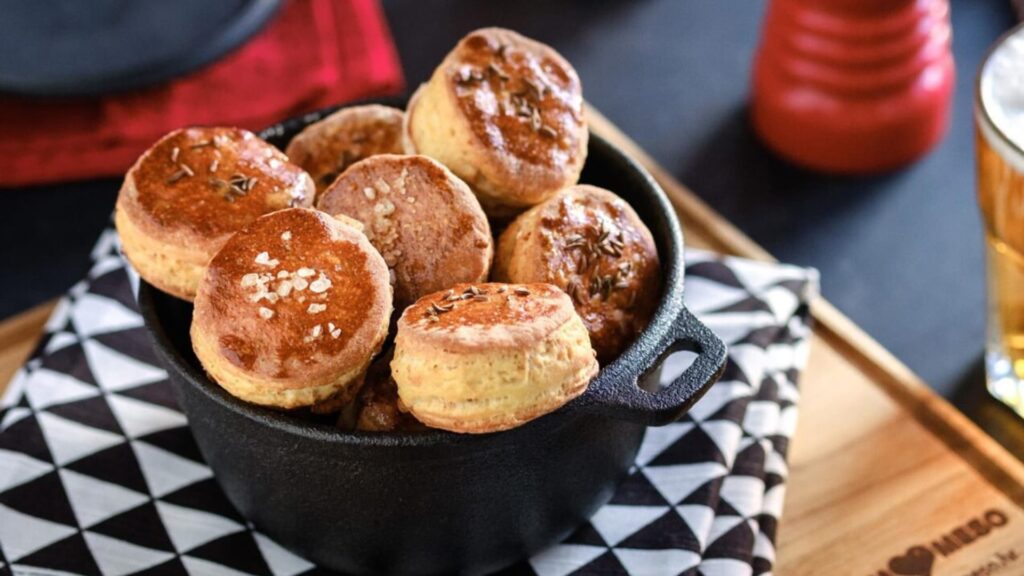
Čvarkuše, a savory Croatian treat originating from the northeastern region of Slavonia, is a must-try for food-loving tourists.
These golden-brown pastries are filled with seasoned minced meat and onions, then deep-fried to crispy perfection.
While typically enjoyed as a snack, they offer a taste of Slavonia’s rich culinary heritage and make for a delightful pairing with local wines.
Variations in recipes exist, with some adding cheese or herbs for extra flavor.
Dive into the history of Slavonia with each bite and savor a delicious piece of Croatia’s authentic comfort food scene.
Just be aware of their addictive nature – it’s hard to stop at just one!
Ajvar

Ajvar is a special culinary treat in Croatia. Unlike traditional dishes, it’s not a main course, side dish, or dessert.
Instead, it’s a versatile spread or dip bursting with flavors like smokiness, sweetness, tanginess, and a hint of spice.
To make it, red bell peppers and aubergines are carefully roasted and blended with garlic, vinegar, and olive oil.
Originally from the Balkan region, ajvar has a long history and is made in late summer or early autumn to capture the flavors of ripe peppers.
Croatians enjoy it in many ways, from spreading it on bread to enhancing grilled meats and veggies.
Ajvar is a taste of Croatia’s commitment to fresh, local ingredients and traditional cooking.
Whether you like it sweet or spicy, be sure to try ajvar during your Croatian culinary adventure.
You can even explore unique versions at local markets, especially in the Dalmatian and Slavonian regions
Ajnpren soup
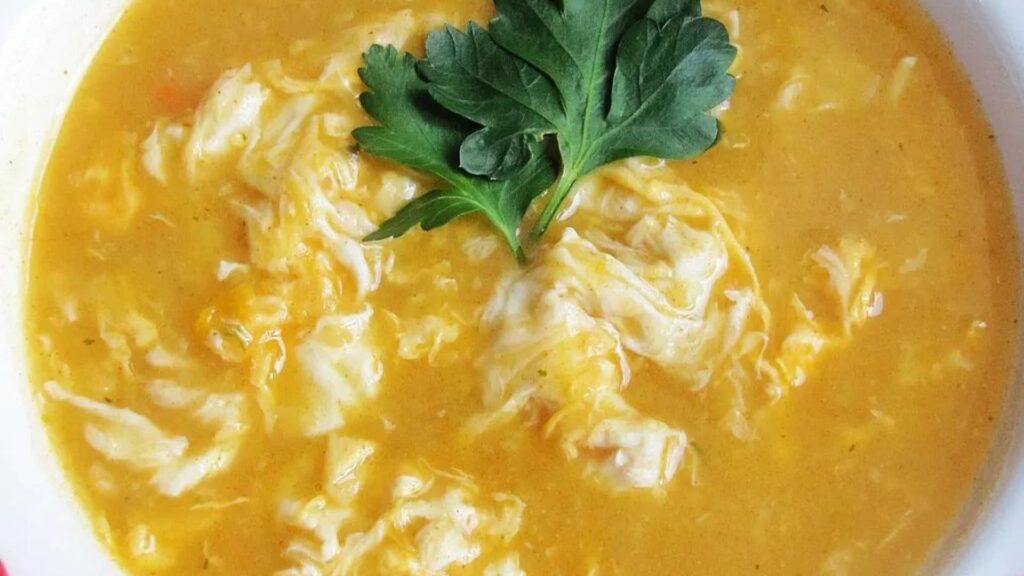
Ajnpren soup is a hearty soup, a main course usually enjoyed during cooler times, and it’s especially popular in Dalmatia and Istria, regions along the beautiful Adriatic coast.
Imagine a flavorful broth made with fresh seafood like fish, mussels, or prawns, cooked with garlic, onions, and tomatoes, and seasoned with Mediterranean herbs.
This soup is all about capturing the essence of the sea.
What’s interesting is that depending on where you try it, you might find small variations.
In Dalmatia, it often centers around fish, while in Istria, they add a bit of olive oil and shellfish.
To enjoy Ajnpren Juha to the fullest, have it with some crusty bread or a tomato-based brodet.
Don’t forget to pair it with a glass of local white wine like Posip or Malvasia.
Be ready for generous servings; Croatian food tends to be filling.
This dish isn’t just about food; it’s a taste of Croatia’s coastal culture, passed down through generations of fishermen.
When you have a bowl of ajnpren soup, you’re experiencing tradition, history, and the wonderful flavors of the sea all at once.
Makovnjača

Makovnjača, a traditional Croatian dessert, is a true hidden gem in the country’s culinary heritage.
This sweet pastry is a favorite during family gatherings and special occasions, offering a delightful mix of flavors and history.
At its core, makovnjača consists of a thin pastry rolled around a luscious filling made from ground poppy seeds, sugar, and sometimes a touch of zesty lemon zest.
But it’s not just a dessert; it’s a piece of Croatia’s cultural legacy, steeped in stories of prosperity.
You can find this sweet treat all over Croatia, with each region adding its unique touch.
Makovnjača invites you to relish its sweet and nutty flavors, making it a must-try for anyone exploring Croatia’s culinary traditions.
Pair it with a cup of Croatian coffee for a delightful journey into the heart of the country’s traditions.
While it shares some similarities with another Croatian pastry called orahnjača, makovnjača stands out with its distinctive poppy seed filling, offering a flavor that’s truly one-of-a-kind.
Creamy mushroom soup
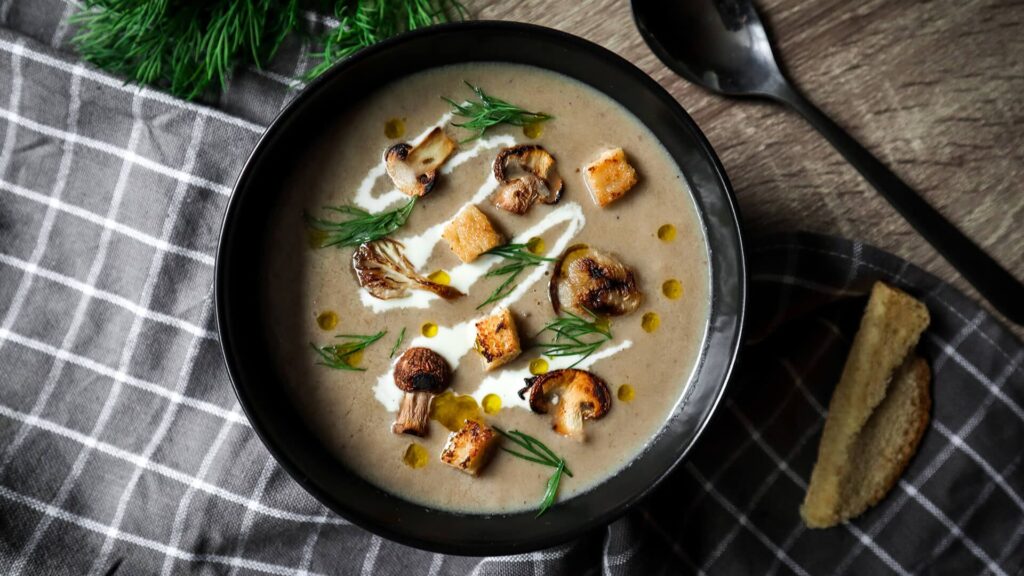
Imagine savoring a bowl of creamy mushroom soup, in a cozy forest tavern in Gorski Kotar, Croatia.
This appetizer boasts a creamy texture and rich, earthy flavor, reflecting Croatia’s culinary traditions deeply rooted in wild mushroom foraging.
Trying this soup isn’t just a meal; it’s a taste of Croatian heritage.
You might even stumble upon locals selling freshly gathered mushrooms by the roadside during mushroom season, adding an adventurous twist.
A must-try for visitors, mushroom soup showcases Croatia’s lush forest bounty.
Pair it with local white wine for a complete culinary experience.
Ljuti fažol (hot beans)
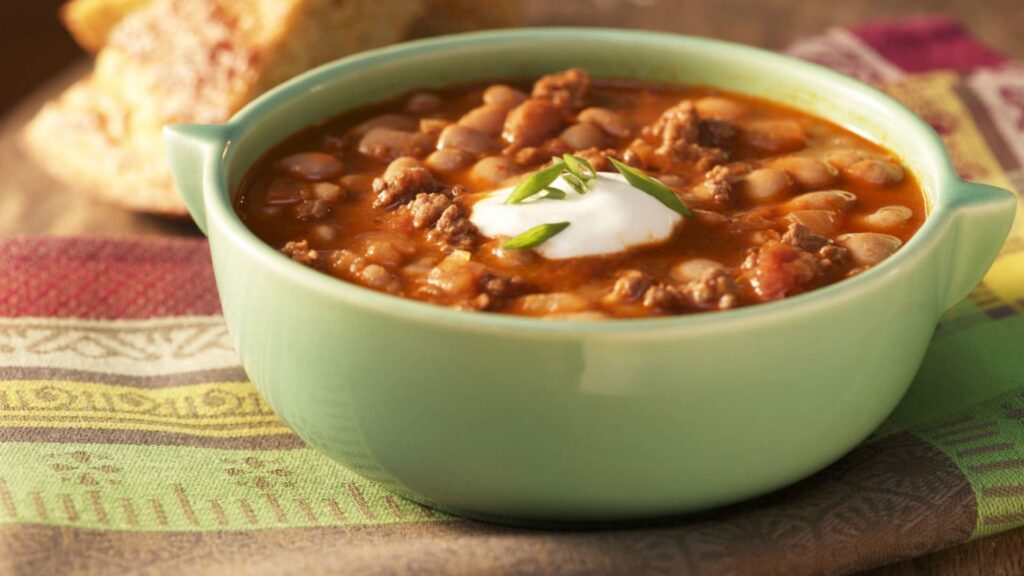
Ljuti fažol, a robust Croatian bean stew, is an exciting adventure for your taste buds.
This spicy main course, similar to the well-loved bean stew with sausages, hails from Dalmatia and Istria but can be enjoyed all over Croatia.
It features tender beans simmered with tomatoes, garlic, onions, and spices like paprika and bay leaves, resulting in a harmonious blend of earthy and spicy flavors.
Whether you’re dining by the sea or inland, this dish offers an authentic taste of Croatia’s rich culinary history.
Pair it with crusty bread and a salad to balance the richness.
If you’re not a fan of heat, check the spice level, and for dietary preferences, ask about vegetarian options, as it’s typically prepared with pork or bacon.
Šalša
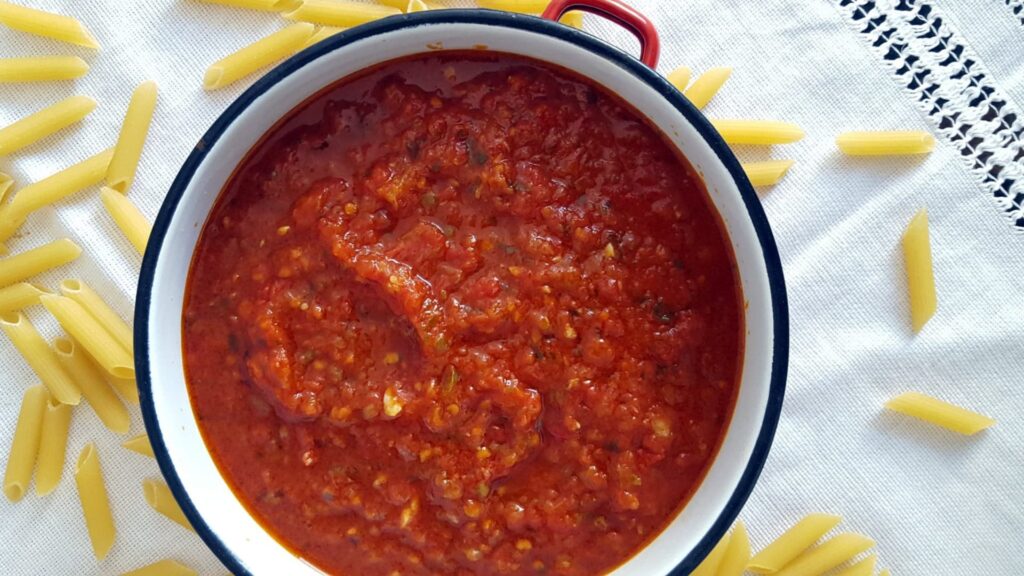
Šalša is a refreshing Croatian pasta sauce made with tomatoes, cucumbers, onions, and bell peppers, all finely chopped and mixed with top-notch Croatian olive oil and vinegar.
This cold sauce is perfect for hot summer days and complements pasta or grilled seafood dishes.
It’s a must-try for tourists seeking authentic Croatian flavors, especially in the coastal regions.
Don’t miss the chance to savor šalša as a pasta sauce at a traditional Dalmatian konoba – it’s a delicious taste of Croatian summer on your plate.
Fried Adriatic Sea calamari
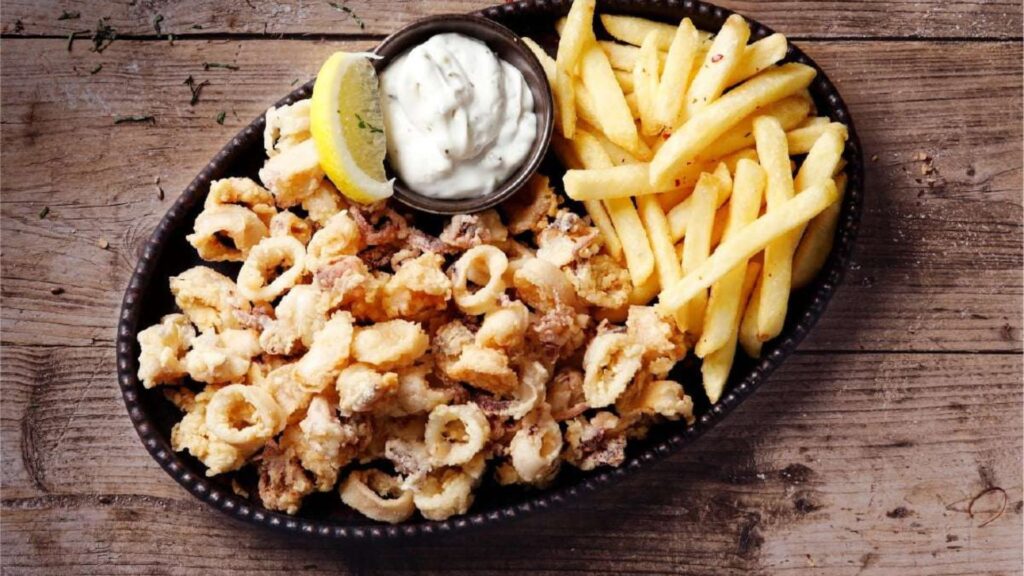
Fried Adriatic Sea calamari, is a delightful Croatian main course that showcases the country’s coastal charm and maritime traditions.
This dish consists of fresh calamari rings, harvested from the pristine Adriatic waters.
These rings are lightly coated in a crispy batter and then deep-fried to a golden, mouthwatering perfection.
The result is a perfect blend of textures: the crunch of the batter complementing the tender, slightly sweet calamari within.
It’s typically served with lemon wedges and a side of tartar sauce or garlic mayonnaise for dipping.
Whether you savor it at a quaint seaside konoba in Dalmatia or a bustling Zagreb restaurant, fried Adriatic Sea calamari offers an authentic taste of Croatian coastal cuisine.
To ensure the freshest and most memorable experience, plan your visit during the warmer months when the catch is at its best.
Croatian apple pie

Imagine a warm and inviting dessert that perfectly encapsulates the sweet side of Croatia – the Croatian apple pie.
This delectable pastry is a must-try, especially at the end of a traditional Croatian meal.
It features a flaky pastry crust filled with a delightful mixture of tart apples, cinnamon, and a hint of lemon zest.
The pie is baked until it reaches a golden perfection that will make your taste buds dance.
While it’s primarily considered a dessert, you can elevate the experience by serving it with a scoop of vanilla ice cream or a dollop of freshly whipped cream.
Apple pie has deep roots in Croatian culinary tradition, with recipes cherished and passed down through generations.
Sharing a slice of this iconic pie is a symbol of warmth and welcome in Croatian households.
Don’t pass up the opportunity to taste this beloved Croatian treat.
Potato salad
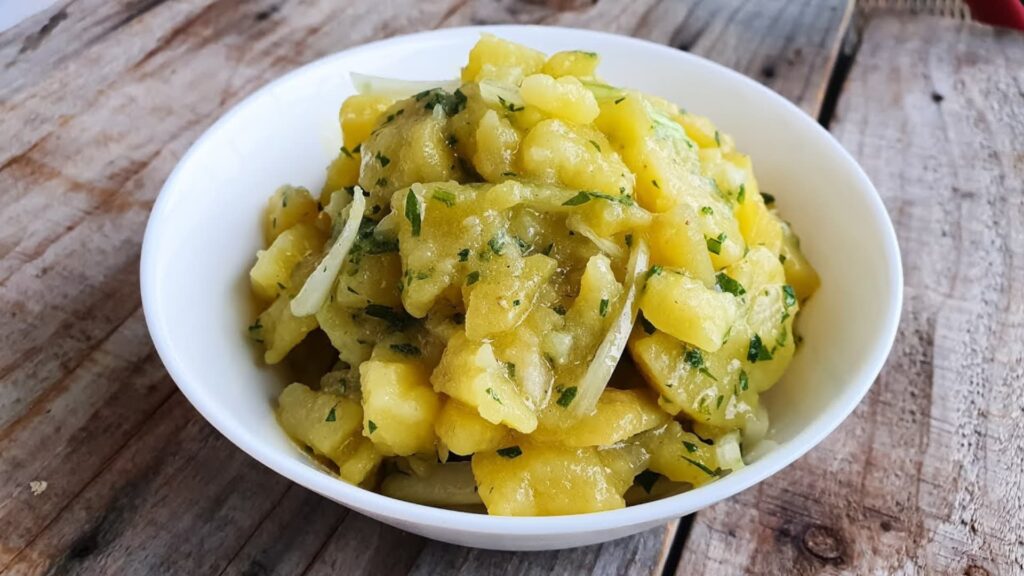
With a rich history dating back centuries, Croatian potato salad combines boiled and diced potatoes, onions, and garlic, all enveloped in a creamy dressing crafted from sour cream, vinegar, and a hint of mustard.
This results in a harmonious blend of textures and flavors—creamy yet slightly tangy.
While regional variations may include pickles or gherkins, krumpir salata consistently serves as the perfect accompaniment to grilled meats and fish.
It’s worth noting that this delightful dish reflects not only the culinary heritage of Croatia but also the country’s long-standing love affair with potatoes, showcasing how a simple ingredient can become a beloved part of a nation’s gastronomic identity.
Punjena vješalica (stuffed pork hock)
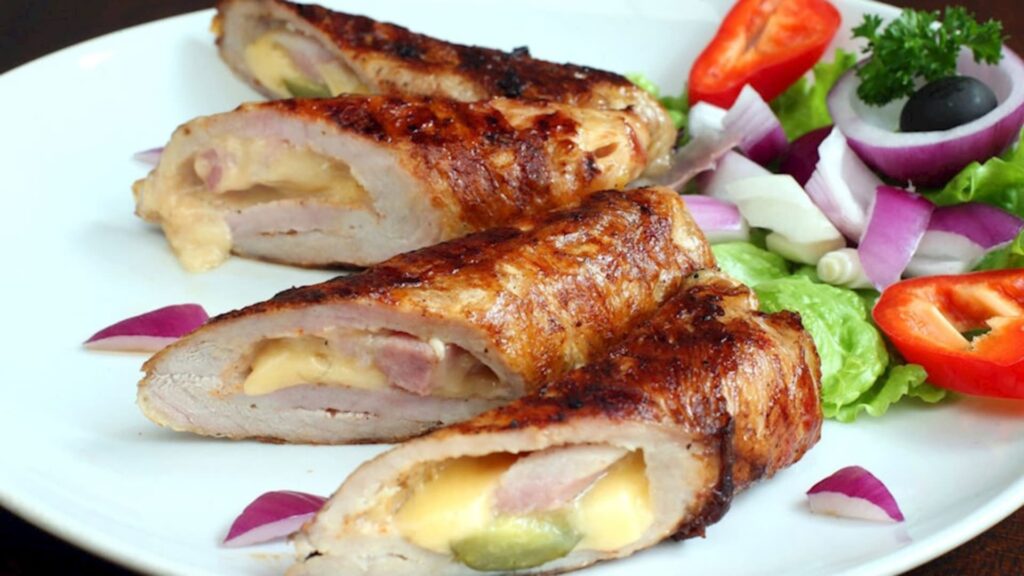
Stuffed pork hock, also known as “punjena vješalica”, is a must-try Croatian main course that exemplifies the rich tradition of Croatian cuisine.
This dish starts with a generous portion of pork, meticulously seasoned with a blend of aromatic herbs and spices.
What sets punjena vješalica apart is its delectable stuffing, typically featuring smoky bacon, pickles, and cheese.
The pork is expertly rolled into a cylindrical shape and then either roasted or grilled, allowing the flavors to meld into a harmonious taste.
This culinary gem primarily originates from continental Croatia, particularly in regions like Slavonia and Zagreb, but variations can be found across the country.
When indulging in punjena vješalica, expect a hearty meal often accompanied by roasted or mashed potatoes, fresh vegetables, and a simple salad.
Don’t forget to enhance the experience with a glass of Croatian wine or a shot of rakija.
Gurmanska pljeskavica (gourmet burger)

Gurmanska pljeskavica is a must-try dish in Croatia.
Imagine a big, seasoned meat patty made from beef and pork, but the surprise is the gooey cheese hidden inside.
It’s like a fancy burger with a smoky, grilled taste and a creamy cheese center.
You can find it all over Croatia, and it’s usually served in a bun with various toppings like bacon or mushrooms.
It’s a hearty and delicious meal, perfect for trying Croatia’s tasty cuisine.
Don’t forget, it’s quite a big portion, so come hungry!
Mazalice

When you’re exploring Croatia’s stunning coastline, don’t miss out on the delicious mazalice, a Mediterranean-inspired appetizer that captures the essence of local cuisine.
Mazalice starts with toasted slices of torted bun, which provide a satisfying crunch, topped with seasoned minced meat, typically pork or beef, grilled to perfection.
It gets an extra layer of flavor from finely chopped onions for a touch of zest and a dollop of cream for creaminess with a hint of tanginess.
This delightful combination offers a harmonious blend of flavors and textures that will transport your taste buds to the heart of Croatian culinary traditions.
While mazalice isn’t a full meal but rather an appetizer, it’s a perfect introduction to the local food scene, best enjoyed with a glass of regional wine or rakija.
Just be mindful, it can be quite rich, so savor it slowly to fully appreciate its delectable complexity.
Kajmak
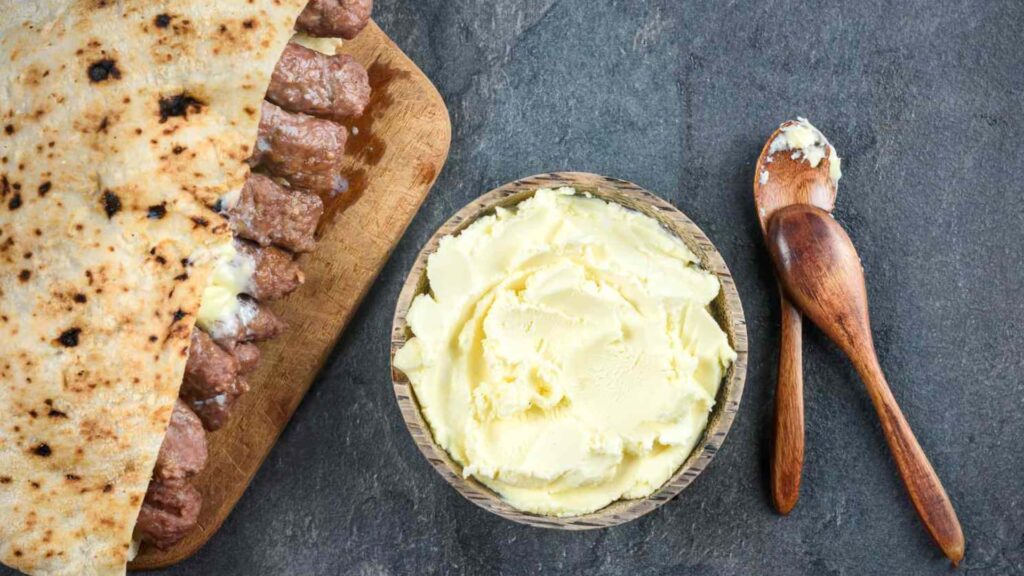
Kajmak, a creamy delight served as a side dish or condiment, is a culinary gem in Croatian cuisine.
Known for its rich, velvety texture reminiscent of clotted cream and a subtly tangy, distinctive flavor, this dairy treat has a fascinating history.
It was originally developed as a means to preserve excess milk in bygone times.
Crafted from fresh, unpasteurized cow’s milk, it undergoes natural fermentation before being meticulously slow-cooked, resulting in a smooth, buttery spread that’s absolutely irresistible.
While kajmak is beloved throughout Croatia, regions like Dalmatia and Slavonia put their own unique spin on it, adding extra layers of flavor to this culinary delight.
You’ll often find it as the perfect accompaniment to grilled meats, especially the popular local specialty čevapi, and it pairs wonderfully with mazalice, a regional treat.
Kisela juha (sour cream soup)
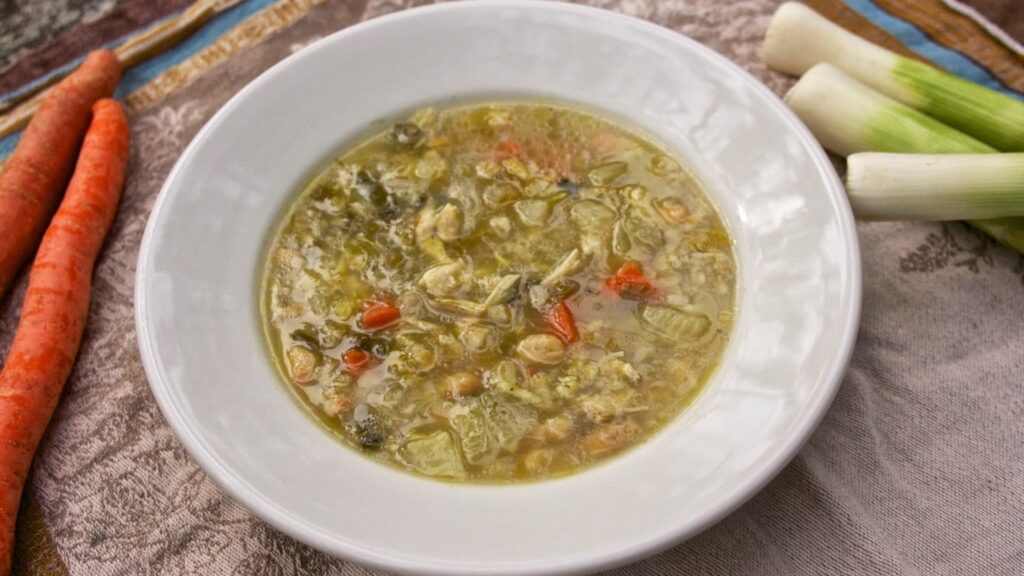
Sour cream soup, also known as ”kisela juha”, is a traditional Croatian starter known for its creamy and tangy flavor.
It’s made by combining sour cream, flour, and either water or broth, and it can feature regional variations with ingredients like potatoes, rice, or vegetables.
This soup has a rich history in Croatian culinary traditions and is often enjoyed with freshly baked bread or “pogacha,” a savory pastry.
When trying sour cream soup, explore regional specialties, and remember that it’s typically served as an appetizer, making it a great way to start your culinary journey in Croatia.
Sataraš
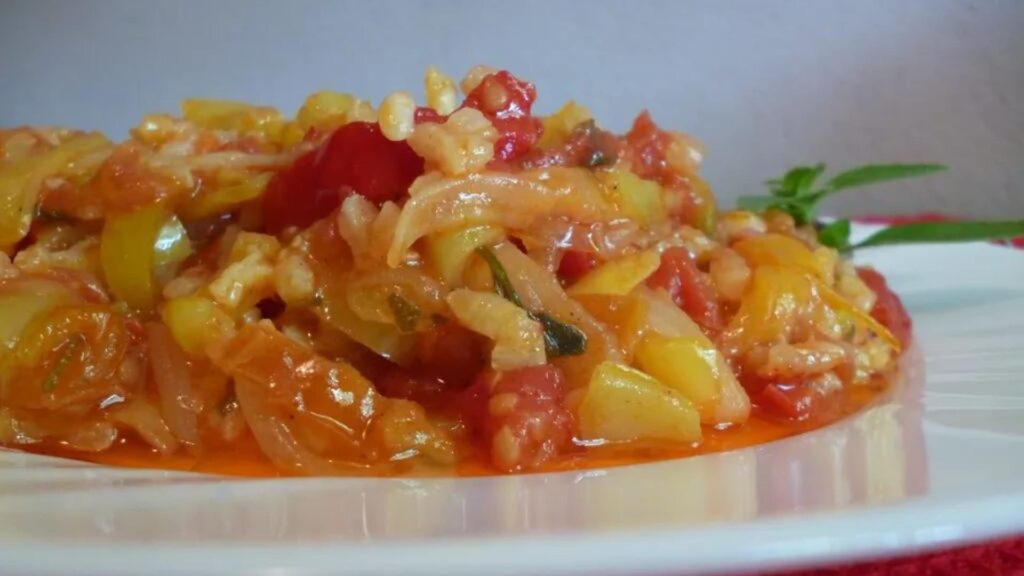
Sataraš is a hearty Croatian stew, primarily enjoyed as a main dish with a rich history rooted in cultural exchanges with Hungary and Turkey.
This savory delight consists of red and green bell peppers, ripe tomatoes, onions, and sometimes chili peppers for a touch of spice, all slow-cooked to create a thick, flavorful sauce.
While it’s a beloved comfort food throughout Croatia, regional variations add unique twists.
In Slavonia, you might find it with sausage, while coastal areas incorporate seafood.
Sataraš is best enjoyed with crusty bread or rice, and it offers a taste of Croatia’s culinary heritage, making it a must-try dish for tourists seeking a genuine gastronomic experience.
Krumpiruša (potato pie)
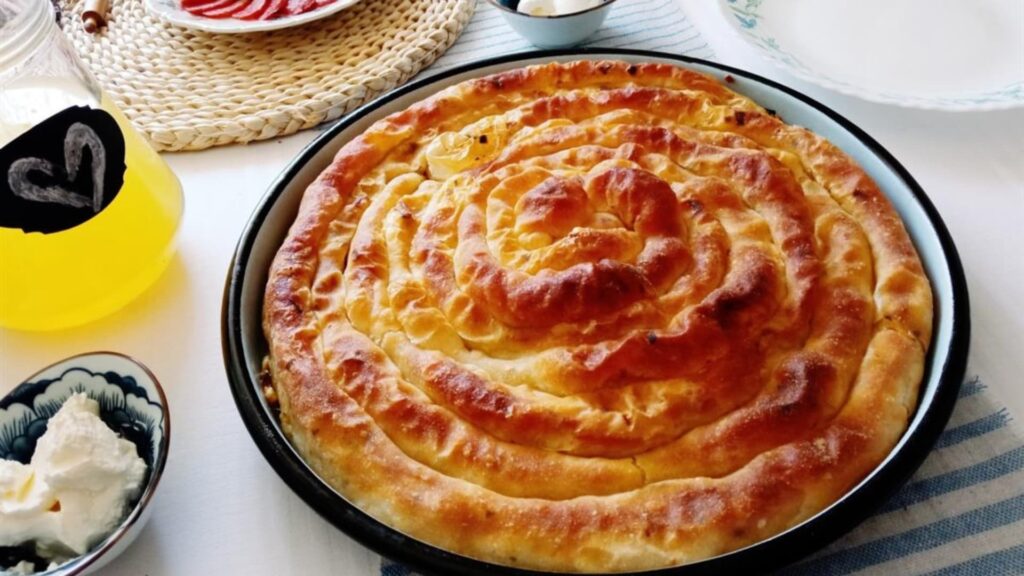
Krumpiruša is a traditional Croatian savory pastry, resembling a rustic potato pie, making it a popular choice for breakfast or a hearty snack.
Made from a blend of mashed potatoes, flour, eggs, and regional flavorings, it boasts a comforting taste with a creamy interior and a crispy, golden crust.
Variations abound across Croatia, with some regions adding ingredients like bacon, onions, or cheese.
Its historical significance lies in Croatia’s agricultural traditions, utilizing potatoes introduced in the 18th century.
While it’s found throughout the country, especially in continental areas, some regions offer sweet versions with sugar and cinnamon, turning it into a dessert.
To savor this authentic comfort food, pair it with a salad, pickles, or a dollop of sour cream.
Palenta (žganci)
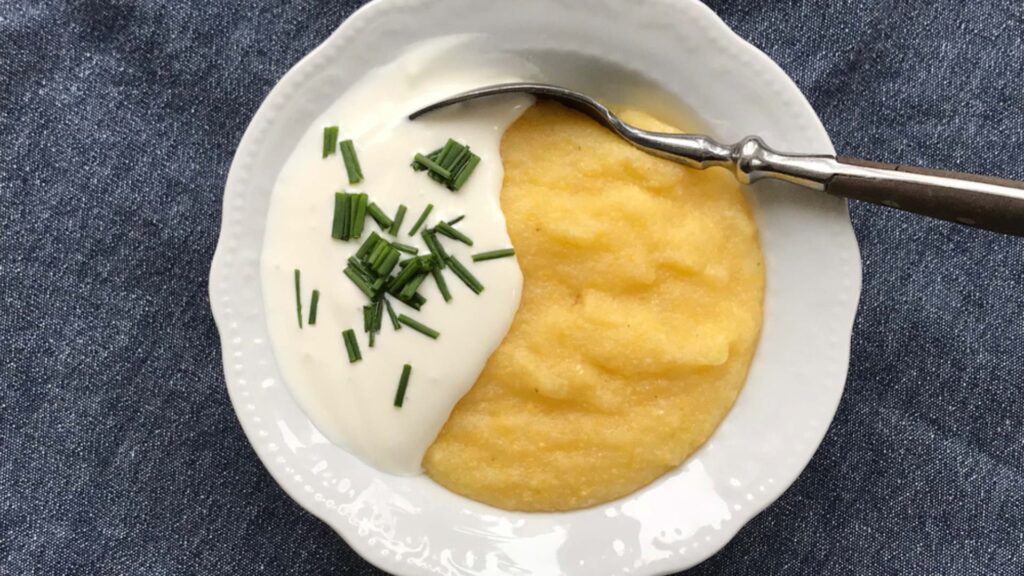
Palenta, sometimes referred to as “žganci” in certain regions, is a traditional Croatian comfort food made from coarsely ground cornmeal, water, and salt.
It offers a subtly sweet, corn-infused flavor and can have various textures, ranging from creamy to firm, depending on where you try it.
This dish holds historical significance as it was a staple for Croatian peasants, adding a fascinating cultural aspect to your dining experience.
Palenta is versatile and can be served as a main or side dish, often accompanied by hearty meat stews, seafood, or garnished with cheese or olive oil.
When visiting Croatia, don’t miss the chance to taste this traditional delight, particularly in continental areas like Slavonia and Zagorje.
Be sure to ask locals about their preferred variations and cooking methods for the most authentic experience.
Žgvacet od boškarina (Istrian boškarin stew)

Istrian boškarin stew, a Croatian main dish hailing from the Istrian region, is a culinary gem celebrated for its tender, rich flavors.
This hearty delicacy features boškarin cattle meat, native to Istria, slow-cooked in a luscious sauce infused with red wine, garlic, onions, and aromatic herbs.
It carries deep cultural significance, as these cattle played a crucial role in Istria’s history.
Traditionally, it’s served with Istrian pasta like “fuži” or “pljukanci” and pairs beautifully with Istrian red wine.
Trying this dish not only offers a taste of Istria’s culinary expertise but also a connection to its cherished traditions and history.
Just be ready for a satisfying meal, and consider a lighter version if you prefer milder flavors.
Olive Oil

Croatian olive oil is an essential ingredient deeply rooted in Mediterranean cuisine.
It’s not a standalone dish but plays a vital role in enhancing flavors in various recipes.
Produced mainly in regions like Istria and Dalmatia, Croatian olive oil boasts diverse flavors, from fruity and herbal notes to a slight peppery kick.
It’s often paired with fresh bread for dipping, salads like “sopska salata,” and used liberally in local cooking.
Exploring olive oil in Croatia can also be a cultural experience, with festivals like “Maslinijada” offering insights into the oil-making process and the country’s rich culinary traditions.
Mediterranean seafood risotto
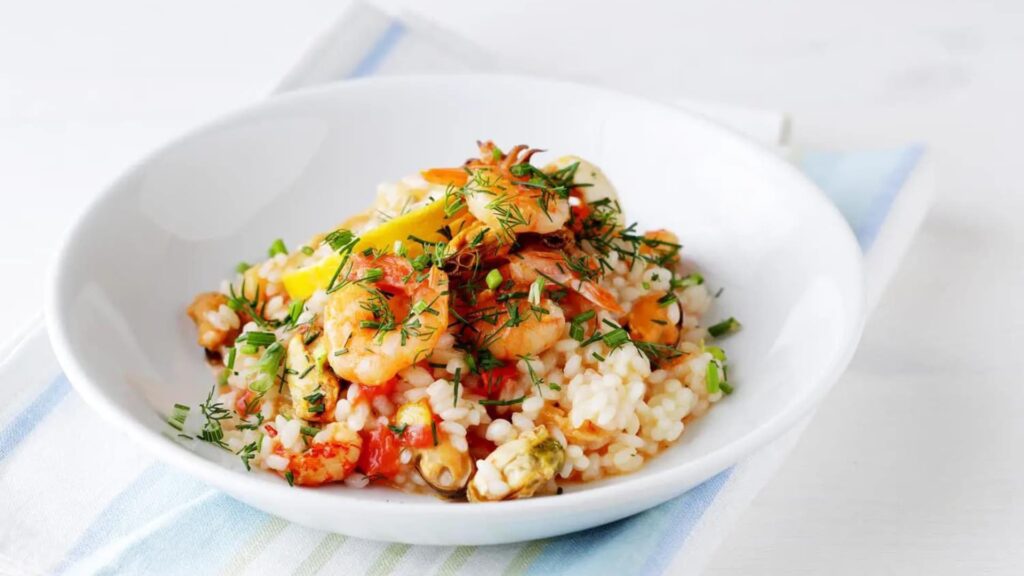
Mediterranean seafood risotto is a rich and savory main dish that perfectly captures the coastal flavors of Croatia.
This delectable risotto features Arborio or Carnaroli rice cooked to a creamy consistency, infused with the delightful taste of fresh Adriatic seafood such as mussels, shrimp, calamari, and white fish.
The dish starts with a flavorful base of sautéed onions, garlic, and white wine, while garnishes like parsley, lemon zest, and olive oil add a refreshing touch.
Originating from coastal regions like Dalmatia and Istria, this dish boasts a deep historical connection to the sea.
While it’s a must-try for seafood enthusiasts, be aware that the quality of seafood may make it a bit costly, but the unforgettable taste and the opportunity to experience Croatia’s coastal charm make it well worth trying when visiting these regions.
Istrian asparagus
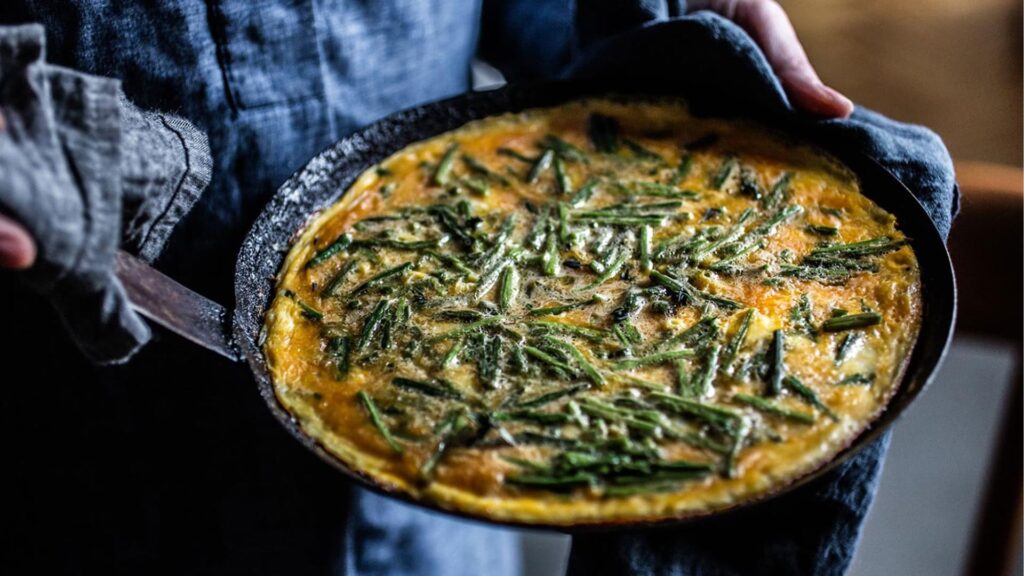
Istrian asparagus is a unique seasonal dish found in Croatia’s Istria region.
These slender wild asparagus spears have a distinctive earthy and slightly bitter flavor, shaped by Istria’s fertile soil and coastal climate.
Typically served as a savory side, they’re prepared by sautéing or grilling with olive oil and garlic.
With roots dating back to Roman times, Istrian asparagus pairs excellently with local delights like Istrian truffles and prosciutto.
It’s also a popular ingredient in egg omelettes, adding a delightful twist to this classic dish.
To experience this culinary gem, visit during its brief spring harvest season (late March to early June) and explore coastal towns like Rovinj and Pula, where it’s celebrated.
Remember to respect local foraging regulations, as Istrian asparagus is a cherished part of the region’s gastronomic heritage.
Olive tapenade (tapenada)
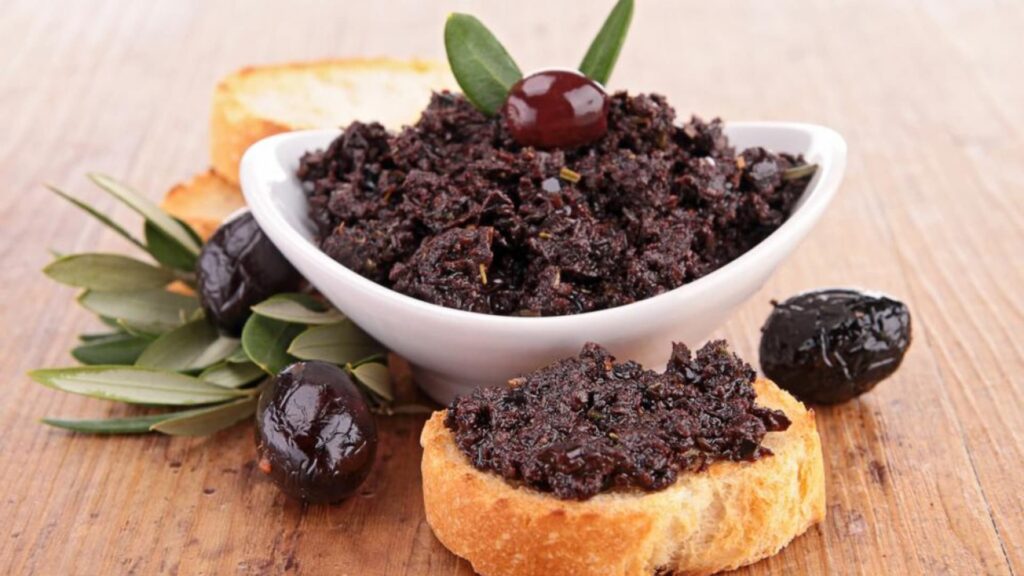
Olive tapenade, known as “tapenada”, is a savory and briny Mediterranean delicacy commonly found along the Croatian coast, particularly in regions like Dalmatia and Istria.
This versatile dish is a robust spread made from finely chopped black olives, capers, anchovies, garlic, and olive oil, often with additional flavors from sundried tomatoes and herbs.
Its rich, earthy taste pairs wonderfully with freshly baked bread or crispy crackers and complements Croatian wines.
In restaurants, it’s frequently served as an appetizer, making it an ideal choice to whet your appetite before indulging in local cuisine.
Beyond its culinary appeal, olive tapenade also reflects the Croatian tradition of communal marenda, emphasizing the joy of sharing food with loved ones.
Be sure not to miss the chance to savor this flavorful piece of Croatian coastal heritage, a delightful appetizer that offers a taste of Mediterranean culture and local conviviality.
Škripavac cheese
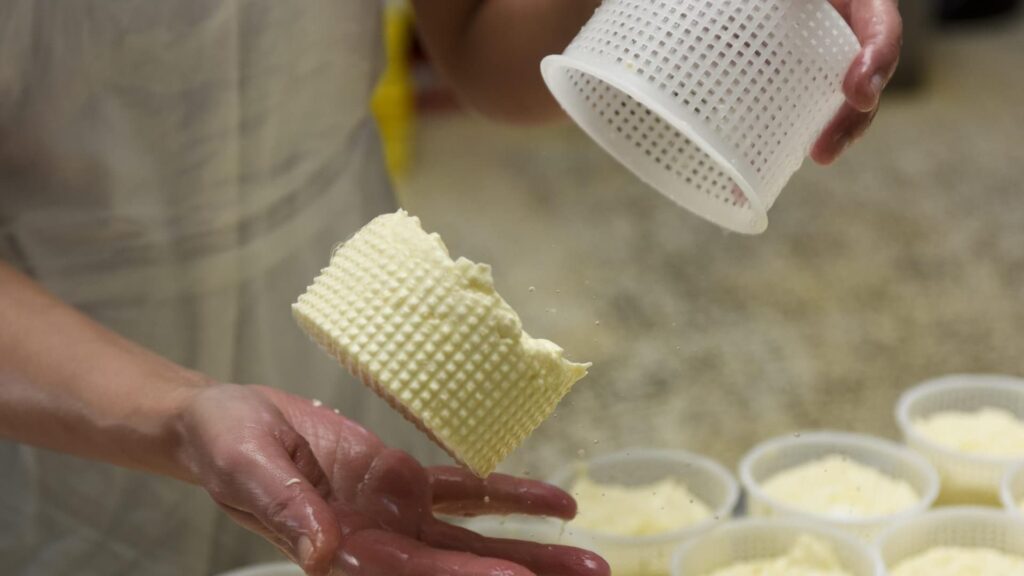
Škripavac cheese is a unique Dalmatian delight, a warm and creamy side dish celebrated for its distinctive squeaky texture when bitten into.
Hailing from the coastal regions of Croatia, particularly Dalmatia, it’s made from cow’s milk and often served with fresh bread, quality olive oil, and fragrant Mediterranean herbs.
The cheese’s fascinating history traces back centuries, originating as a means to preserve milk in the Mediterranean heat.
When visiting Croatia, trying škripavac cheese is a must for its exceptional sensory experience and its embodiment of the region’s culinary traditions.
Just be prepared for the delightful “squeak” when you indulge in this coastal delight.
Grilled trout
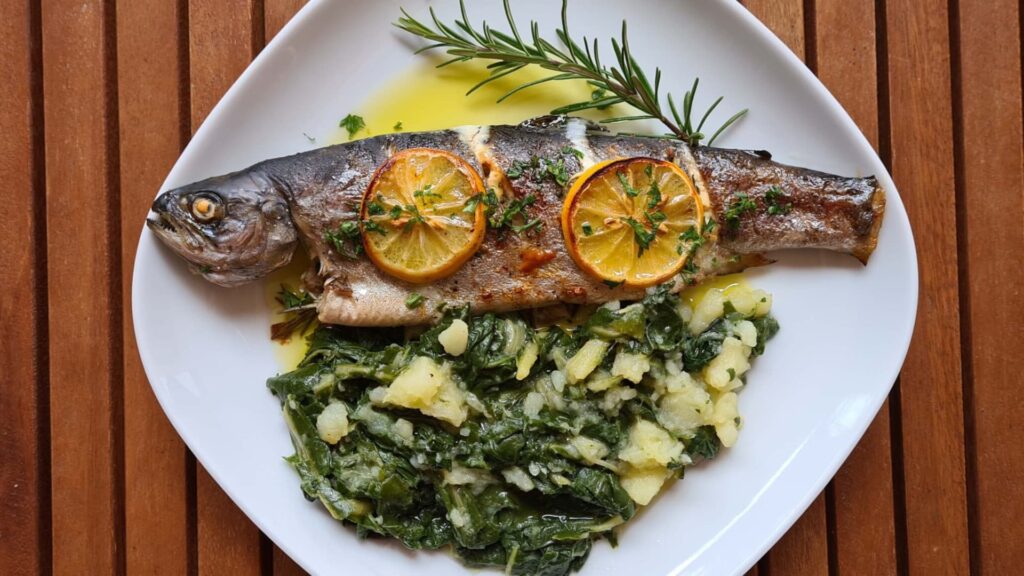
Grilled trout is a must-try main dish in Croatia, particularly in the stunning inland regions like Lika and Gorski Kotar, known for their abundant freshwater trout.
This dish features tender and flaky trout seasoned with aromatic herbs, olive oil, garlic, and lemon, then expertly grilled to perfection.
The grilling process imparts a smoky, slightly crispy skin, enhancing the trout’s delicate, earthy flavor.
While enjoying this culinary delight, it’s important to be cautious of small fish bones, typically found near the head and tail.
Grilled trout is traditionally accompanied by blitva (Swiss chard) and boiled potatoes, creating a harmonious combination of flavors.
What sets it apart is the unique opportunity to catch your own trout in Croatia’s pristine waters and have it prepared at local restaurants, offering an immersive experience that connects you with both tradition and the region’s natural beauty.
Gnudi
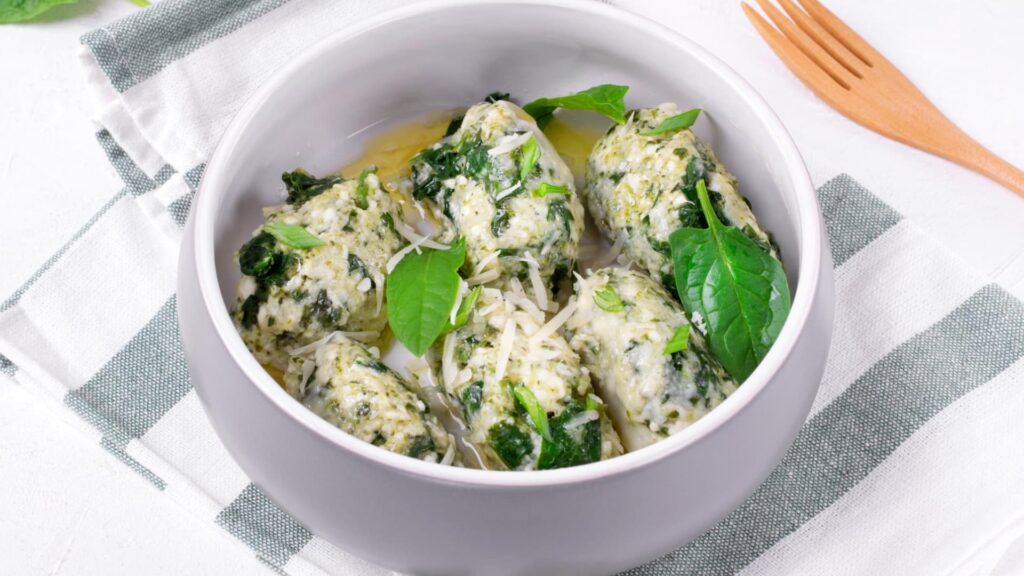
Gnudi is a delectable Mediterranean-inspired pasta dish discovered along Croatia’s picturesque Dalmatian coast.
These small dumplings, filled with spinach and ricotta, are often called “naked ravioli” because they lack the traditional pasta shell.
They offer a creamy and slightly tangy flavor with hints of nutmeg and herbs.
With Italian culinary influences shaping this Croatian delight, gnudi is a must-try, especially for pasta enthusiasts.
Typically served as a main course with a choice of tomato or sage and butter sauce, it’s a delightful fusion of flavors that highlights the culinary heritage of this coastal region.
When ordering, don’t hesitate to inquire about portion sizes and any unique variations to make the most of your Croatian culinary adventure.
Arambrašići

Arambašići is a hearty main dish originating from Croatia’s Dalmatian region along the Adriatic coast.
It features minced meat rolls enveloped in Swiss chard leaves and simmered in a tomato-based sauce until tender and flavorful.
Traditionally enjoyed by shepherds and fishermen, this dish embodies the robustness of Croatian cuisine.
For the full coastal culinary experience, pair it with creamy mashed potatoes and a glass of local red wine.
The name “Arambašići” derives from the Turkish word for squad leader, reflecting its hearty nature, making it a must-try for a genuine taste of Dalmatia.
Raštika
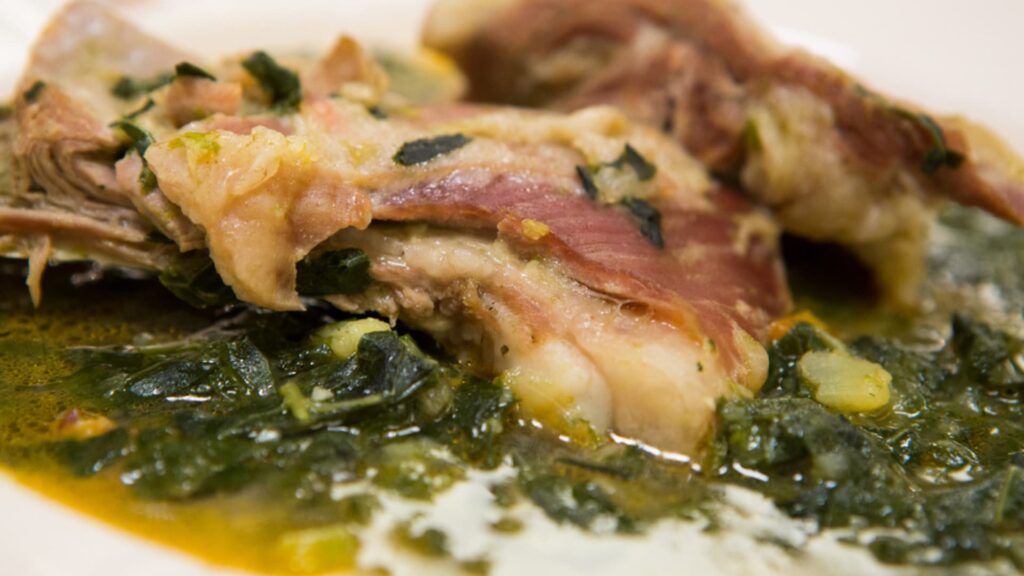
Raštika, a traditional Croatian dish, can be enjoyed either as a side or main course.
It’s made from collard greens or kale, which have a slightly bitter taste and are first blanched and then sautéed with olive oil and garlic, resulting in a hearty, earthy flavor.
Variations of raštika exist throughout Croatia; coastal regions often use lemon juice for a lighter touch, while inland areas incorporate smoked pork or bacon for added richness.
Raštika pairs excellently with grilled meats and offers a flavorful glimpse into Croatia’s culinary heritage.
When trying it, expect a unique bitterness, well-balanced by the richness of olive oil and garlic, and don’t hesitate to ask about its preparation to accommodate dietary preferences.
Skuta cheese
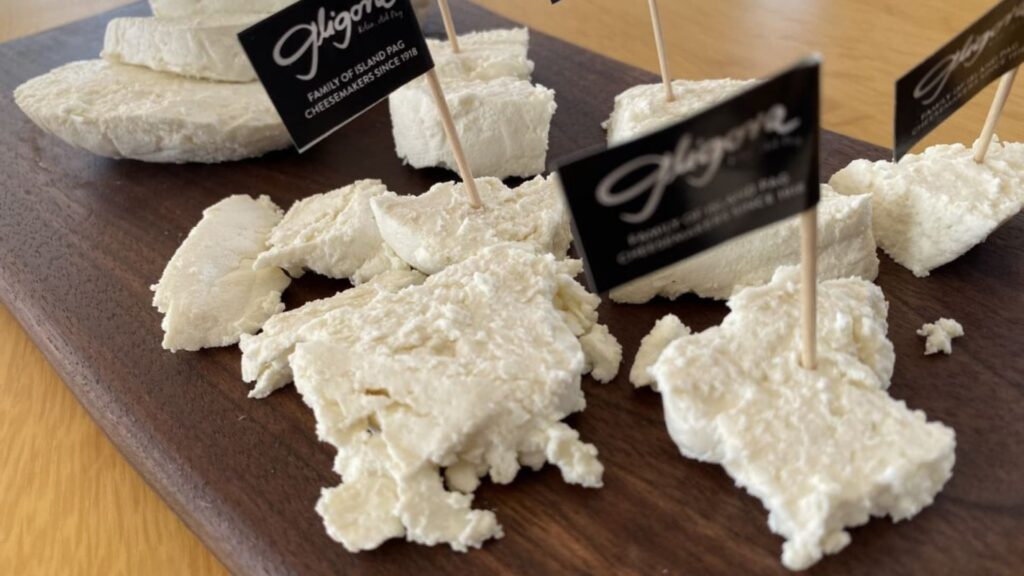
Skuta cheese is a versatile dairy product found in Croatian cuisine.
It has a creamy texture and a slightly tangy taste, similar to cottage cheese or ricotta.
To make it, cow’s milk is curdled with lemon juice or vinegar, resulting in a grainy texture.
This cheese is used in both sweet and savory dishes, including pastries like strudels and savory pies.
Skuta cheese has a rich historical significance and is a staple in Croatia, particularly in regions like Slavonia and Zagorje.
It’s an authentic taste of Croatia, whether used in desserts with fruits or in savory recipes.
Keep in mind that there might be slight variations in flavor depending on where you try it.
Vitalac

Vitalac, a hearty main dish from Dalmatia, Croatia, is renowned for its distinctive preparation and robust flavor.
This dish involves skewering lamb or goat offal, including liver, lungs, heart, and sometimes spleen, grilling it over an open flame, and seasoning it with garlic, rosemary, and olive oil.
It has a rich history, originating as a nourishing meal for shepherds during their travels in the coastal town of Makarska.
When you try vitalac, you’ll savor the earthy taste of organ meats and the aromatic blend of herbs.
It’s best enjoyed with fresh Dalmatian vegetables, local wine, or a shot of rakija.
You can find this culinary gem primarily along the Adriatic coast and islands, making it a unique and adventurous experience for travelers exploring Croatian cuisine.
Arancini (rice balls)
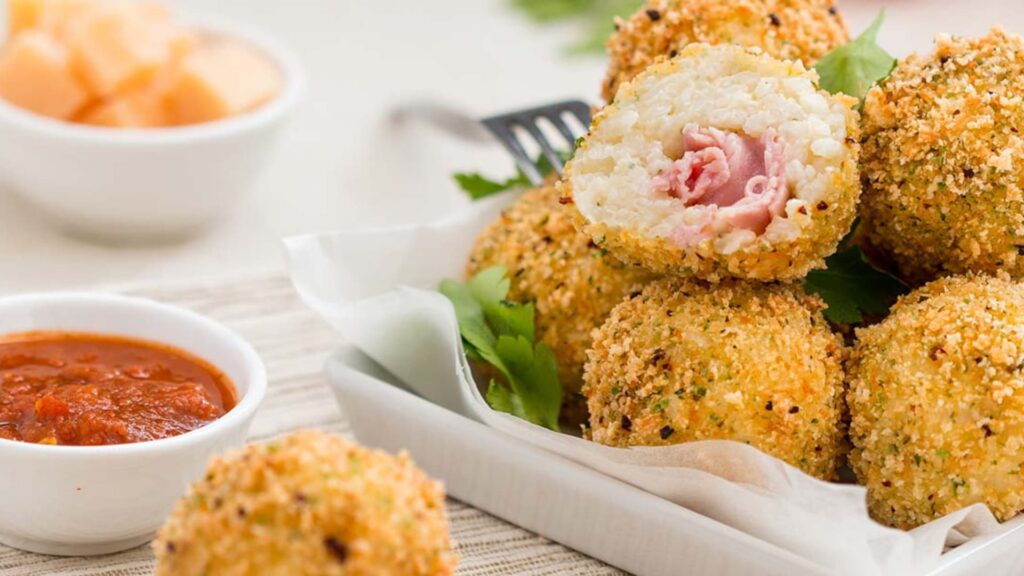
Arancini is an Italian appetizer or snack you might come across in Croatia, especially in areas with Italian culinary influences.
These small, golden-brown rice balls, resembling oranges in shape, are filled with a variety of savory ingredients like ragù and mozzarella cheese.
They have a crispy outer layer, while the inside reveals creamy, saffron-infused rice.
Originating in Sicily during the 9th century under Arab rule, arancini have evolved to become a beloved Italian treat.
While not a native Croatian dish, trying arancini offers a taste of Italy, with each bite offering a satisfying blend of textures and flavors.
When trying arancini in Croatia, consider seeking recommendations to ensure an authentic and delicious experience.
Bajamini
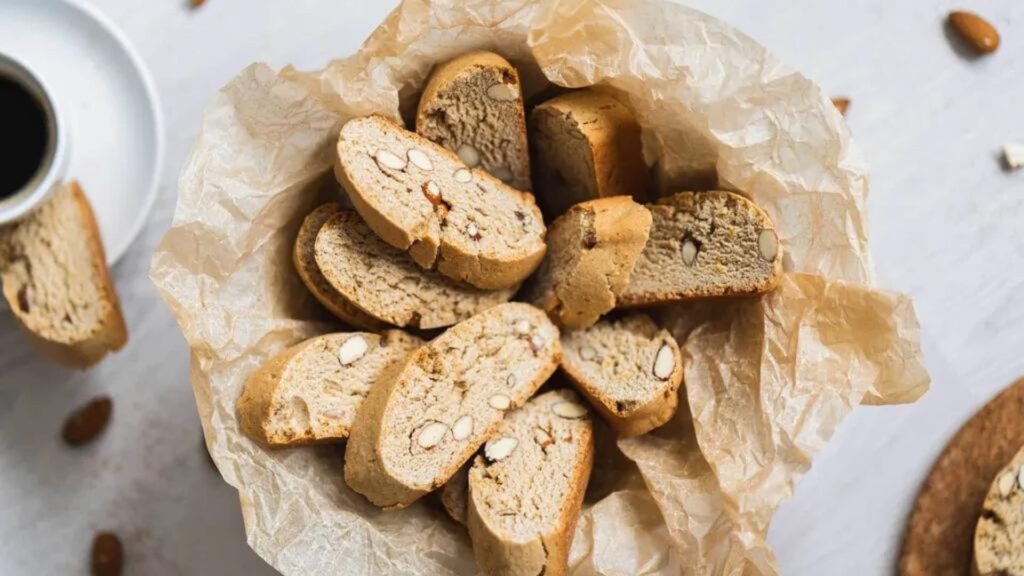
Bajamini is a traditional Dalmatian dessert, a must-try for visitors to Croatia.
Originating from the coastal town of Bajamonti in Split, these delightful almond-based treats have a rich history dating back to the 18th century.
They offer a sweet and nutty flavor, with a marzipan-like texture, made from finely ground almonds, sugar, and egg whites.
Bajamini is not only a delicious dessert but also a symbol of cultural heritage in Split, often prepared for special occasions.
Enjoy it with a cup of coffee or a glass of dessert wine as you savor the flavors of Dalmatia and take home a sweet memory of your Croatian culinary adventure.
Just be mindful of its sweetness and potential nut allergens.
Bučnica (pumpkin pie)
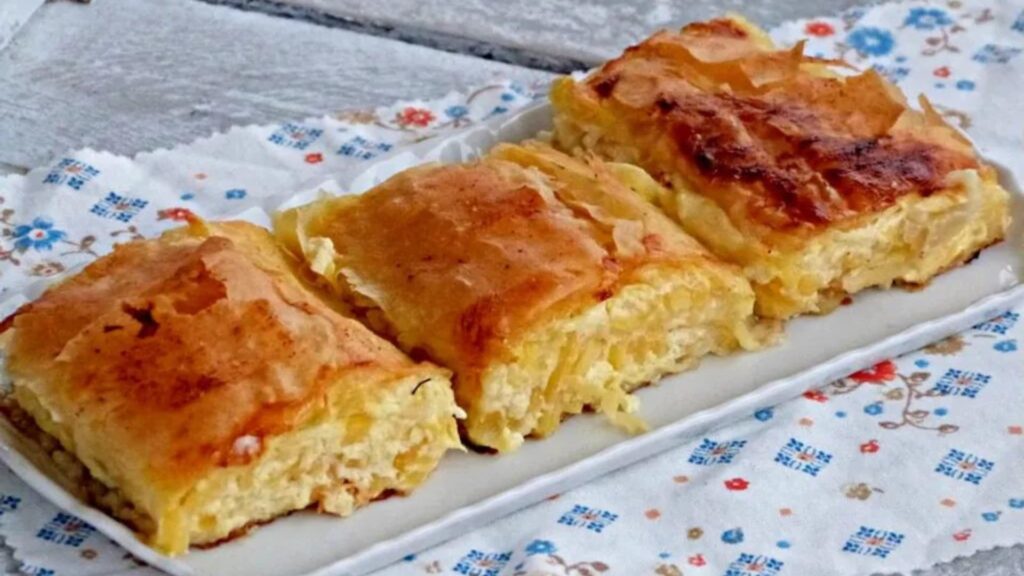
Pumpkin pie, known as “bučnica”, is a traditional Croatian savory pastry, originating from regions such as Zagorje and Međimurje.
It consists of thinly sliced or grated pumpkin blended with creamy cheese, eggs, and seasonings, all encased in layers of crispy phyllo dough.
This dish is a testament to Croatian culinary creativity, having its roots in the resourceful use of autumn pumpkins.
While primarily considered a side dish, there’s also a sweet variation featuring sugar and cinnamon.
Bučnica not only provides a unique taste of Croatia but also embodies community and tradition, often prepared during pumpkin festivals.
It pairs wonderfully with salads.
Istrian jota (istarska jota)

Istrian jota is a hearty and tangy stew originating from Croatia’s Istrian region.
This savory main dish features a unique combination of sauerkraut, beans, and potatoes, often accompanied by smoky cured pork or sausages for added flavor depth.
Rooted in Istria’s history, it showcases the region’s culinary influences from both Italy and Slavic traditions.
Locals typically enjoy it with a side of crusty bread, and it holds significance as a communal meal often shared at gatherings and festivals.
While its tangy and smoky flavors may not suit every palate.
Ričet

Ričet, a hearty Croatian dish that can serve as either a main course or a substantial side, originates from Zagorje in northern Croatia.
It combines barley, kidney and green beans, vegetables, and smoked meats, all slow-cooked to create a rich and earthy flavor, infused with herbs like parsley and bay leaves.
Originally a meal for hardworking farmers, it has become a beloved Croatian comfort food.
Typically, it’s accompanied by rustic bread and sour cream, offering a taste of Croatia’s agricultural heritage.
Make sure to bring a hearty appetite, as it’s quite filling, and consider dietary restrictions related to smoked meats.
Trying ričet is a must for those seeking an authentic taste of Croatian countryside cuisine.
Pinca
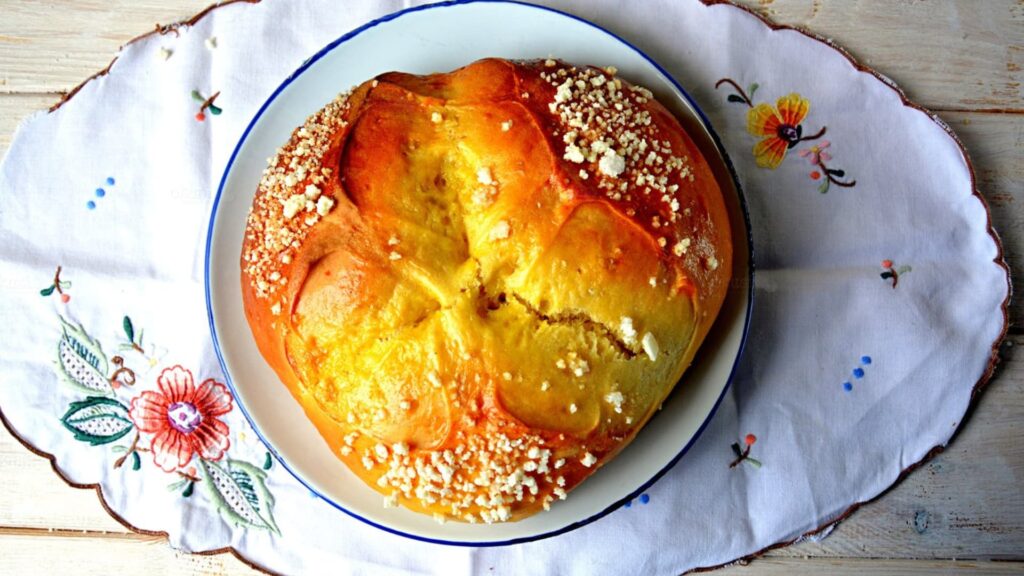
Pinca is a cherished traditional Croatian Easter bread known for its sweet and fragrant qualities.
This enriched sweet bread boasts flavors of vanilla, lemon zest, and raisins, making it a delightful pastry.
Adorned with a cross-shaped decoration symbolizing Easter’s religious significance, pinca is an integral part of Croatian Easter traditions, with families passing down generations-old recipes.
Typically enjoyed with coffee or tea during Easter breakfast, pinca provides a unique taste of Croatia’s culinary heritage.
While it can be found throughout Croatia, it is most closely associated with coastal regions, islands, and Zagreb.
It’s important to note that it’s a seasonal treat primarily available during the Easter holiday.
Češnjovke (garlic sausages)

Češnjovka is a Croatian sausage that’s a must-try, known for its bold garlicky taste and smoky aroma.
These sausages, whose name comes from the Croatian word for garlic, “češnjak,” are a hearty main dish deeply rooted in Croatian culinary tradition.
They’re crafted by mixing ground pork and beef with abundant garlic and spices, then slow-smoked to perfection.
The result is a savory delight that encapsulates the essence of Croatian cuisine.
When you enjoy češnjovke, you’re not just savoring a meal; you’re immersing yourself in Croatia’s rich gastronomic heritage.
Typically grilled, they’re served alongside fresh bread, mustard, pickles, and sauerkraut, creating a delightful medley of flavors.
Whether you’re a garlic enthusiast or a food aficionado seeking authentic Croatian dishes, trying češnjovke is an unforgettable culinary experience that should be part of your visit to Croatia.
Abšmalcane mahune (sauteed green beans)

Abšmalcane mahune, a traditional Croatian side dish, is a delightful sautéed green bean delicacy that offers tourists a taste of authentic Croatian home cooking.
This dish features fresh green beans sautéed to tender perfection with onions and garlic, resulting in a slightly sweet and savory flavor combination. Its deep roots in Croatian cuisine reflect the country’s reliance on locally sourced ingredients, making it a nutritious addition to any meal.
Abšmalcane mahune can be found throughout Croatia, with regional variations that might include ingredients like bacon or pork fat.
It’s often served alongside grilled or roasted meats, such as lamb or chicken, providing a well-balanced and satisfying culinary experience that captures the essence of Croatian gastronomy.
Be sure to try this dish during the green bean season for the freshest taste.
Šestinska pečenica
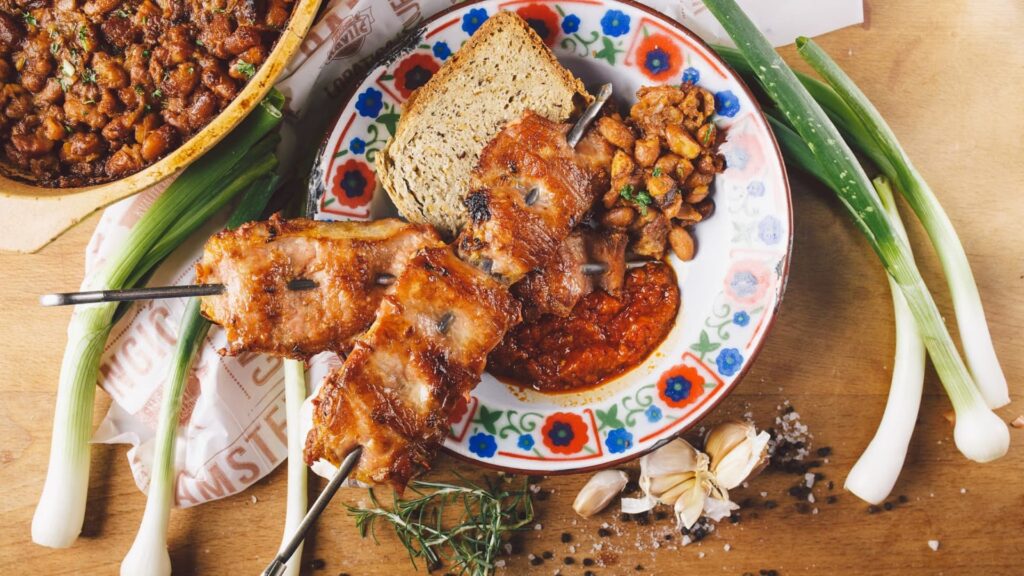
Šestinska pečenica is a beloved main course from Zagreb, Croatia.
This traditional dish features succulent roasted pork loin, marinated in a blend of garlic, salt, pepper, and sometimes paprika, resulting in a flavorful, smoky taste and tender texture.
It is often served with mlinci (thin pasta) or potato dumplings, complementing the dish perfectly.
With its roots in the picturesque village of Šestine and a rich history, šestinska pečenica offers a delightful taste of Zagreb’s culinary heritage and warm local hospitality.
For the full Croatian flavor experience, consider pairing it with local wine or beer.
Bajadera
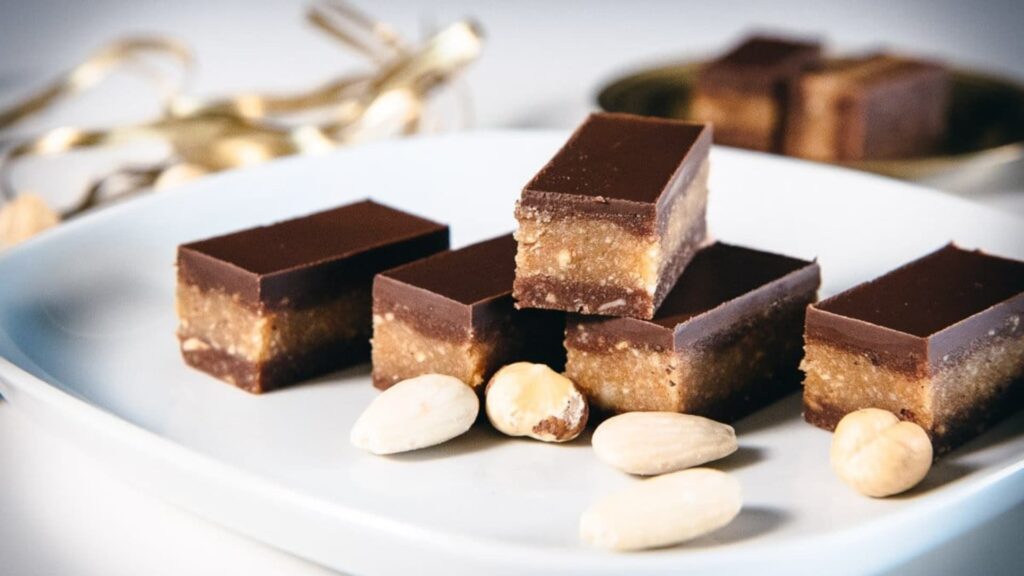
Bajadera is a delightful Croatian dessert celebrated for its sweet, nutty, and chocolatey layers.
This dessert, initially inspired by French nougat, has been uniquely crafted by Croatian confectioners with local ingredients like almonds or hazelnuts, creating a delightful blend of flavors and textures.
Whether enjoyed on its own or paired with coffee, bajadera promises a memorable treat on your Croatian culinary journey.
Often elegantly packaged, it also makes for a charming gift or souvenir to take a piece of Croatia home with you.
Found throughout Croatia, this dessert embodies the country’s sweet traditions and craftsmanship.
Tangerine
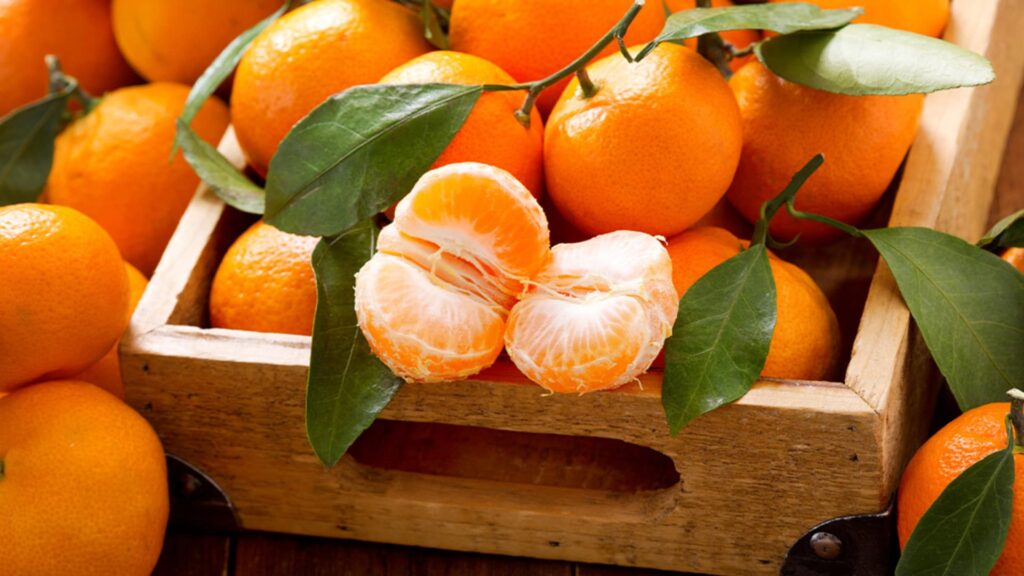
Croatian tangerines, known as “Mandarina” in Croatian, are not a dish but rather a cherished fruit commonly found throughout Croatia.
These small citrus delights are famous for their exceptional sweetness, making them a popular choice for a quick, refreshing snack or dessert.
Croatia’s Mediterranean climate, especially in regions like Dalmatia and Istria, provides the perfect conditions for growing these juicy treats.
While tangerines are usually enjoyed fresh and as they are, they can also enhance the flavors of fruit salads and desserts.
When exploring Croatia, trying locally grown tangerines offers a wonderful opportunity to savor the country’s natural produce and its vibrant flavors.
They make for a healthy and tasty snack during your travels, just remember to watch out for any seeds.
Croatian honey
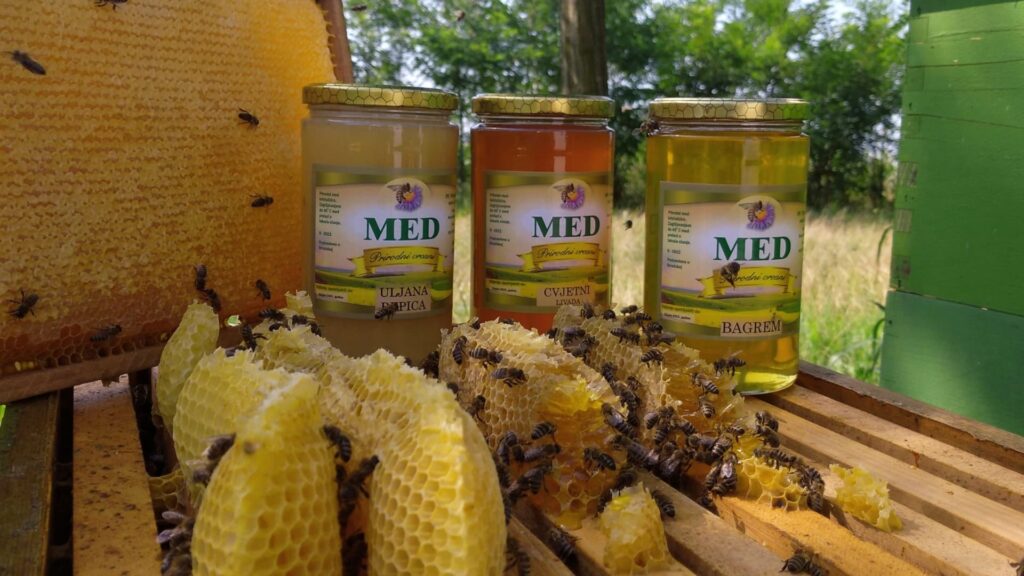
Croatian honey is a cherished natural sweetener that enhances a variety of traditional Croatian desserts, including favorites like “medenjaci” (honey cookies), “paprenjaci” (spice cookies), and “salenjaci” (lard-based pastries).
It boasts exquisite taste and unique floral notes, with flavor variations depending on the region and flowers bees have visited. Croatians also pair honey with the renowned Pag cheese.
Honey has deep historical significance in Croatia, symbolizing prosperity and abundance.
For tourists, exploring Croatian honey offers not only a sweet taste but also insight into the country’s natural diversity, rich floral flavors, and cultural traditions.
Pole pečenog krumpira (halfs of a baked potato)
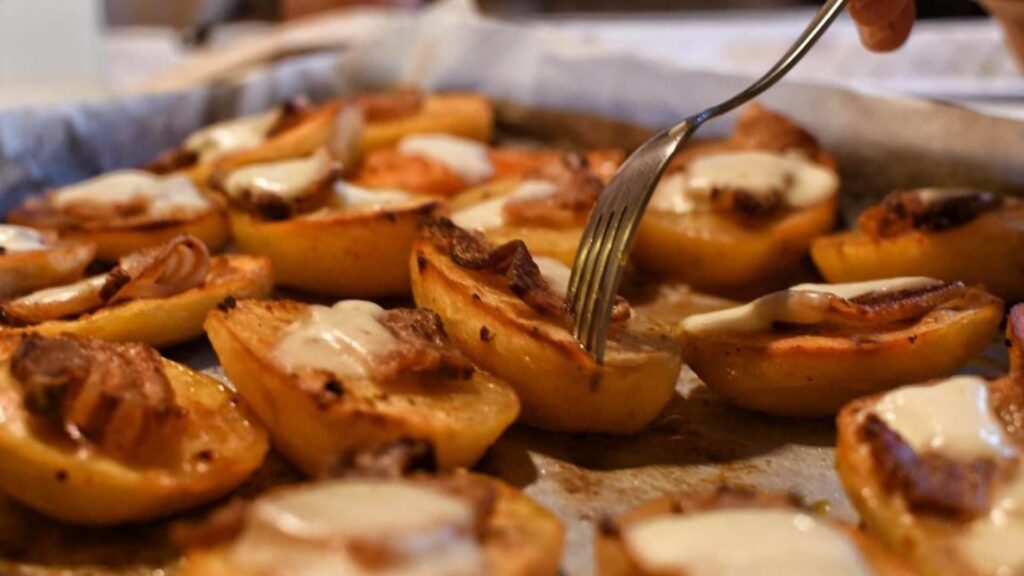
Halfs of a baked potato is a simple yet incredibly tasty Croatian side dish.
It features locally sourced potatoes cut into bite-sized pieces and seasoned with a flavorful blend of aromatic herbs such as rosemary, thyme, oregano, garlic, and olive oil.
This harmonious combination creates a delightful contrast of textures, with crispy exteriors and tender interiors.
Although it lacks a lengthy historical background, it perfectly encapsulates the essence of Mediterranean-inspired Croatian cuisine.
It pairs wonderfully with grilled meats, seafood, or hearty stews.
Sekeli gulaš (goulash with sauerkraut)
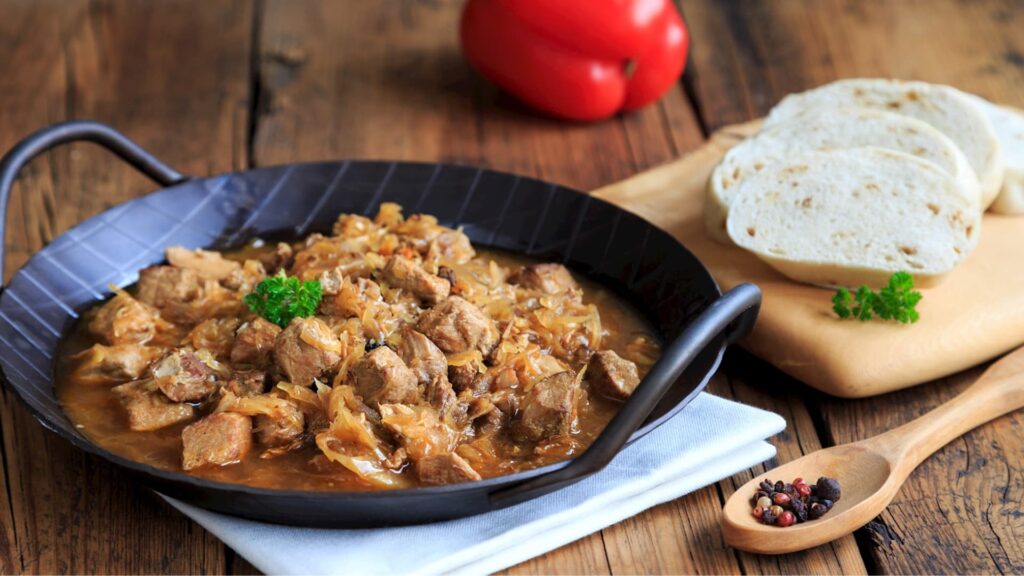
Sekeli gulaš is both one of my personal favorite traditional Croatian dishes and an absolute must-try for tourists.
It sets itself apart from the typical Croatian stews through its unique blend of flavors and ingredients.
Originating from the regions of Slavonia and Zagorje, this hearty dish combines tender chunks of beef or pork with sauerkraut, onions, paprika, and spices, resulting in a savory and slightly sour taste due to the sauerkraut infusion.
Unlike more conventional Croatian stews, sekeli gulaš offers a distinctive twist on the country’s culinary scene.
Traditionally served with fresh bread or dumplings, it adds to its unique character.
For tourists seeking an authentic taste of Croatia’s diverse regional influences and culinary creativity, sekeli gulaš is a must-try and comes highly recommended as one of my personal favorites.
Mesna štruca (meatloaf)
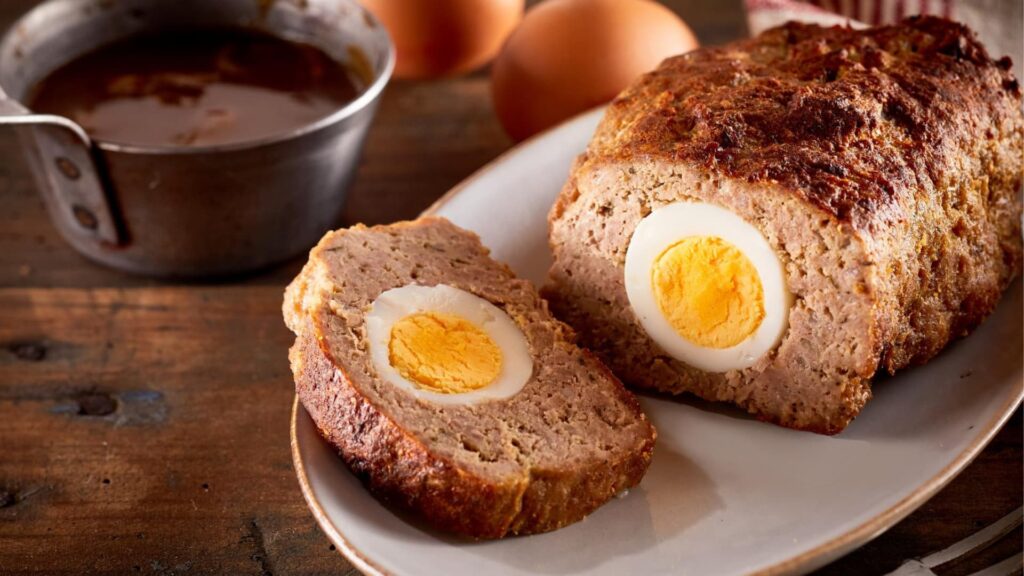
Meatloaf, also known as “mesna štruca”, is a traditional Croatian main dish that reflects the country’s culinary heritage.
This savory meatloaf is crafted from a blend of ground beef and pork, seasoned with garlic, paprika, and aromatic herbs, resulting in a hearty and flavorful meal.
While the core recipe remains the same, regional variations add unique twists, with some including delicious fillings like boiled eggs or bacon.
This dish is deeply ingrained in Croatian tradition and is best enjoyed alongside mashed potatoes, sautéed vegetables, or a rich gravy.
Roštilj (grilled meat)

Roštilj is a classic Croatian dish that showcases perfectly grilled meat, such as pork, beef, lamb, and chicken.
To achieve this perfection, the meat is expertly seasoned with delightful flavors like garlic and herbs before being placed on the grill.
As it cooks, you’ll be greeted by the enticing aroma of the grill and the promise of incredibly juicy meat.
This dish comes in various forms, including sausages, minced meat patties, skewers, and grilled lamb, which may vary depending on the region in Croatia you’re in.
It’s typically served alongside fresh salads, a special sauce, creamy kajmak, and flatbread.
When you savor this dish during your visit to Croatia, you’ll not only taste the excellence of perfectly grilled meat but also experience the rich culinary traditions and diverse regional styles that make it an absolute must-try.
Krpice sa zeljem

Krpice sa zeljem, a Croatian dish, brings together small, square pasta pieces called “krpice” with cabbage that’s either sautéed or braised, known as “zelje.”
This dish can be enjoyed as either a main course or a side dish.
It’s typically crafted using homemade pasta and involves cooking cabbage with onions and garlic to achieve a delightful sweet and savory flavor.
Across different regions of Croatia, you’ll find variations, with some incorporating Istrian prosciutto or smoked sausage to create unique tastes.
This dish has its roots in practicality, as it was born from the use of readily available ingredients.
It’s often served with a dollop of sour cream or yogurt, making it a wonderful opportunity to savor authentic Croatian flavors, especially in continental regions like Slavonia and Zagorje.
Šufnudle

Šufnudle is a delightful Croatian dessert characterized by tender dumplings filled with various options such as plum jam or cottage cheese.
Originating from regions like Zagorje and Međimurje, these dumplings feature a mildly sweet dough, which is boiled and then topped with a buttery breadcrumb coating and powdered sugar.
With a history steeped in tradition and cherished as a comfort food, šufnudle offer a sweet glimpse into Croatia’s culinary heritage.
For an authentic taste of Croatia’s cultural and culinary richness, indulge in šufnudle and consider pairing them with whipped cream or ice cream.
You might find them pleasantly sweet and an experience worth savoring during your visit to Croatia.
Kaiseršmarn
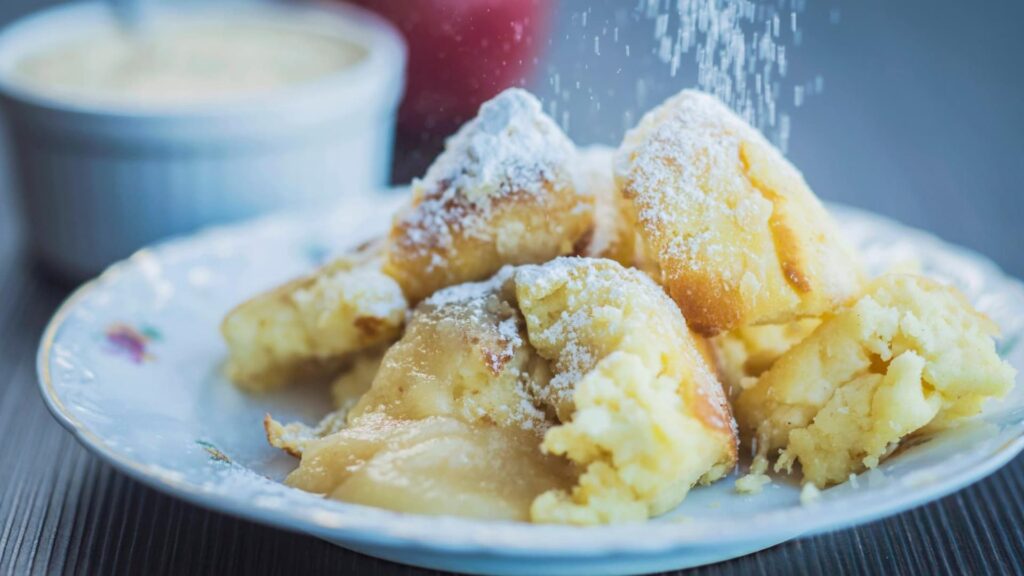
Kaiseršmarn is a delightful Austrian-inspired dessert that has found its place in parts of Croatia, especially in the northern regions.
This unique treat is akin to a sweet pancake that’s been torn into fluffy, crispy-edged pieces, offering a delightful contrast of textures.
Made from a batter of eggs, flour, milk, and sugar, it’s sweet and often dusted with powdered sugar.
Accompanied by fruit compote or whipped cream, it’s a sweet adventure worth trying.
Named “Emperor’s Mess” in German, it holds a historical connection to Austrian Emperor Franz Joseph I, and its charmingly messy appearance adds to its allure.
Enjoy this intriguing dessert as part of your Croatian culinary journey.
Tomato soup

Tomato soup in Croatia is a warm and savory appetizer known for its rich and tangy tomato flavor, complemented by a creamy texture and garnished with fresh herbs.
Its history is tied to the introduction of tomatoes to Europe, making it a significant part of Croatian cuisine.
While the basic ingredients include ripe tomatoes, onions, garlic, and various seasonings, regional variations add a unique twist.
Coastal areas may include seafood, while inland regions opt for ingredients like paprika or small meatballs.
Typically served with bread and local cheeses, Croatian tomato soup offers a delectable taste of the Mediterranean and is a must-try dish for anyone exploring Croatian culinary traditions.
Potato musaka

Potato musaka, a visually appealing traditional Croatian main dish, is characterized by its layered composition featuring thinly sliced potatoes, well-seasoned ground meat (usually a mixture of beef and pork), onions, garlic, and a flavorful tomato-based sauce.
This hearty creation is carefully baked until these elements meld together into a mouthwatering casserole.
Drawing inspiration from Mediterranean and Balkan cuisines, the dish showcases regional variations in ingredients and spices, adding to its diverse appeal.
It is commonly served alongside a refreshing salad and pairs exceptionally well with Croatian red wine.
Musaka od krumpira offers not only a feast for the eyes but also a delectable introduction to Croatia’s rich culinary heritage, making it a must-try experience for travelers keen on exploring the country’s deep history and comforting flavors.
Granadir marš
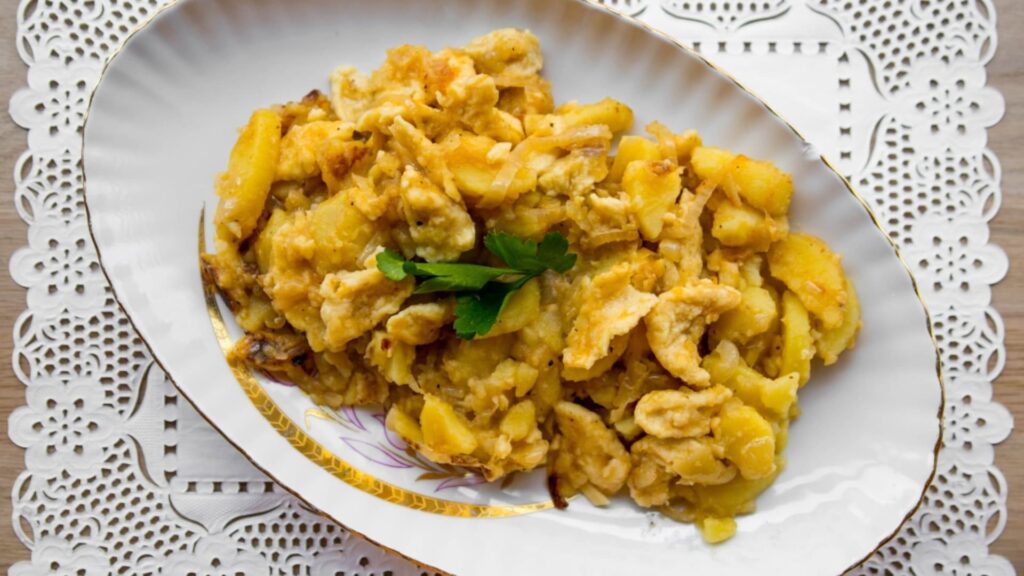
Granadir marš derives its intriguing name from its historical association with elite infantrymen.
This comforting dish features tender pasta (or potato), flavorful minced meat (often beef or pork), onions, garlic, and a medley of aromatic spices.
While you’ll find regional variations, particularly in northern Croatia and Zagreb, granadir marš remains a pasta lover’s delight.
Typically served alongside fresh salads, pickles, or creamy sour cream, it offers tourists a delightful taste of Croatia’s rich culinary heritage.
Don’t forget to bring a hearty appetite, as granadir marš is not only historically significant but also an essential experience for those seeking authentic Croatian comfort food.
Ham wrapped in bread

Ham wrapped in bread is a traditional Croatian main dish celebrated for its delightful blend of tender ham encased in crusty bread.
Originating from Croatia’s continental regions, it reflects a tradition of resourceful cooking and is typically savored at festive gatherings.
The preparation entails boiling the ham before encasing it in bread dough and baking it to a golden finish.
Its savory, slightly salty taste pairs exceptionally well with hard-boiled eggs, young spring onions, and horseradish sauce.
It’s worth noting that if you find yourself in Croatia during the spring or Easter season, this dish is a must-try, as it’s typically not served during other times of the year.
Minced meat patties with spinach and mashed potatoes
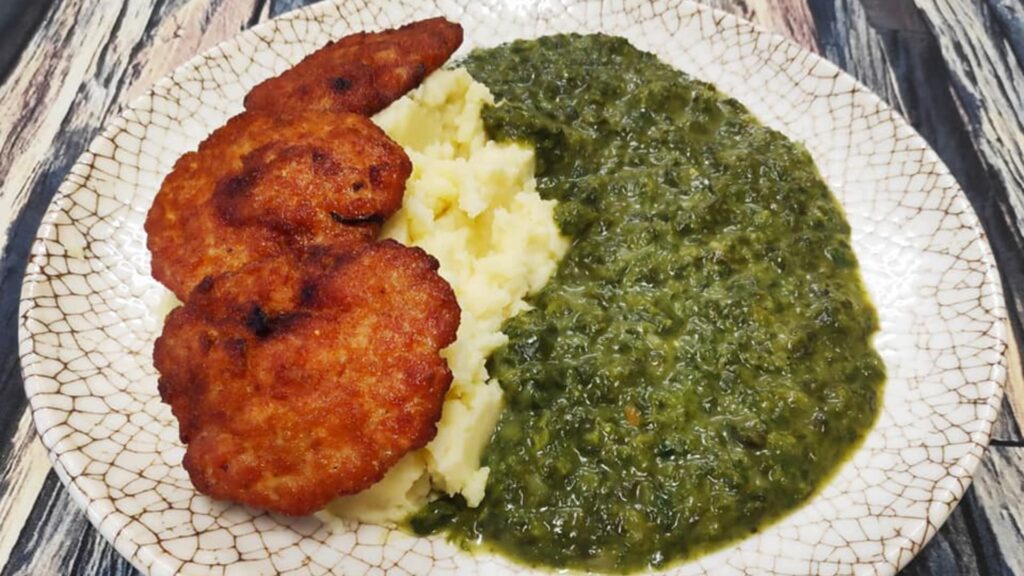
This main dish is also known as “faširanci sa špinatom i pire krumpirom” consists of seasoned minced meat patties, fresh spinach, and creamy mashed potatoes.
The meat patties are flavorful and golden, while the spinach adds a refreshing element and the mashed potatoes provide a smooth, comforting base.
This dish represents authentic Croatian home cooking, emphasizing the use of locally sourced ingredients.
While variations exist by region, the warm and comforting appeal remains consistent across Croatia.
Savor this dish for an authentic taste of Croatian cuisine and a glimpse into the country’s culinary traditions, often enjoyed in family gatherings and local taverns, reflecting the warm hospitality of Croatian culture through food.
Tripice (špek fileki)
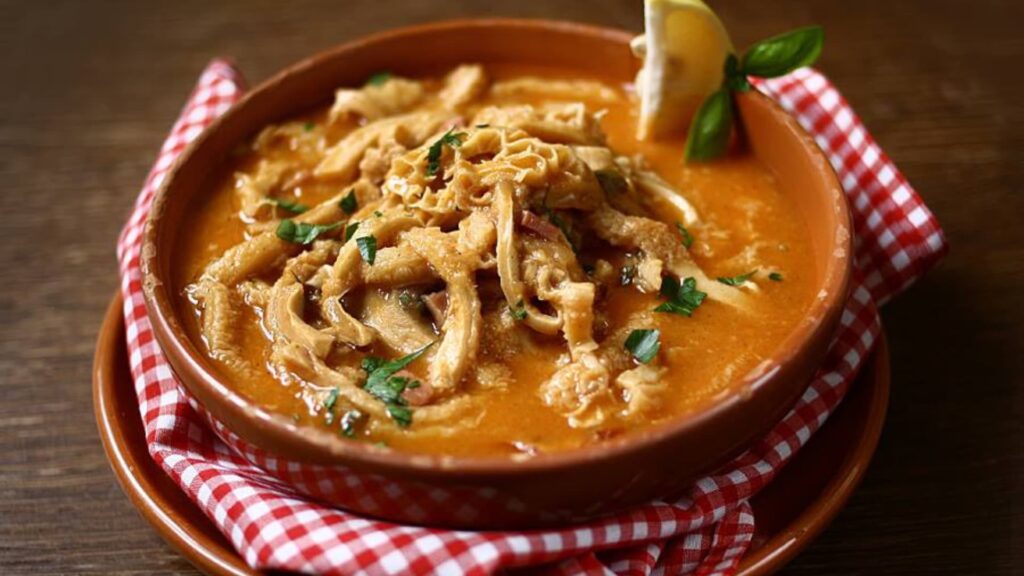
Tripice, a traditional Croatian main dish widely enjoyed in Istria, consists of beef tripe— the stomach lining of cattle—slow-cooked until tender and infused with flavors from garlic, onions, tomato sauce, and various herbs.
This process results in a rich and savory taste, providing insight into Croatia’s historical resourcefulness in using every part of the animal.
Typically served with creamy polenta for a pleasing texture and flavor contrast, it’s important to note that due to its distinctive aroma, Tripice may not suit everyone’s taste.
However, keeping an open mind can lead to a rewarding culinary adventure, allowing you to explore Croatia’s culinary heritage and regional flavors, including unique variations found in different Croatian regions.
In some northern areas of the country, you might encounter a variation of Tripice that incorporates ham, adding an extra layer of flavor to this traditional dish.
Kiflice

Kiflice, Croatia’s beloved crescent-shaped pastries, are a sweet delight known for their buttery, flaky texture and an array of sweet fillings like apricot jam, plum jam, or poppy seeds.
However, my personal favorites are the ones filled with ham and cheese, which add a savory twist to this classic treat.
These pastries truly shine when they are enjoyed fresh out of the oven, their warm aroma and melt-in-your-mouth goodness making them a must-try dessert.
Kiflice are often paired with coffee or tea and are a cherished part of Croatian culture, with families passing down their unique recipes.
Whether you opt for the sweet or savory variations, indulging in kiflice is like tasting a slice of Croatian tradition.
Samoborski kotleti
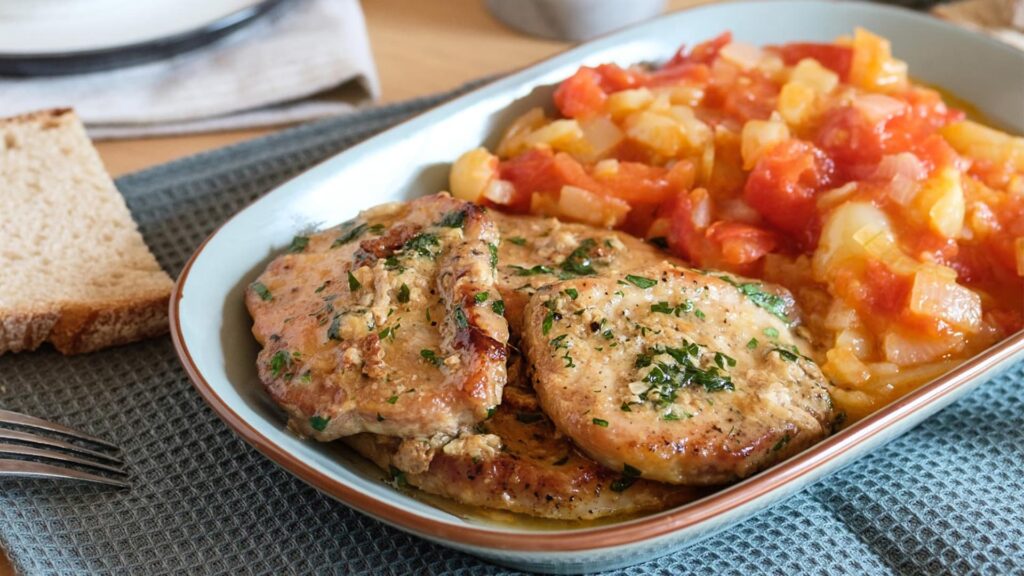
Samoborski kotleti is a must-try main dish hailing from the charming town of Samobor in Croatia, just a short drive from Zagreb.
These iconic pork cutlets feature tender pork loin chops, pounded for tenderness, then coated in a breadcrumb and horseradish mixture for a crispy, flavorful crust with a delightful zesty kick.
Historically significant and beloved by locals, they date back to the 19th century, favored even by the famous Croatian poet August Šenoa.
Typically served with mashed potatoes or fresh salads, this dish offers a taste of tradition and regional flavors, making it an essential culinary experience for any visitor to Croatia, especially when enjoyed in Samobor itself with its charming streets and historic atmosphere.




